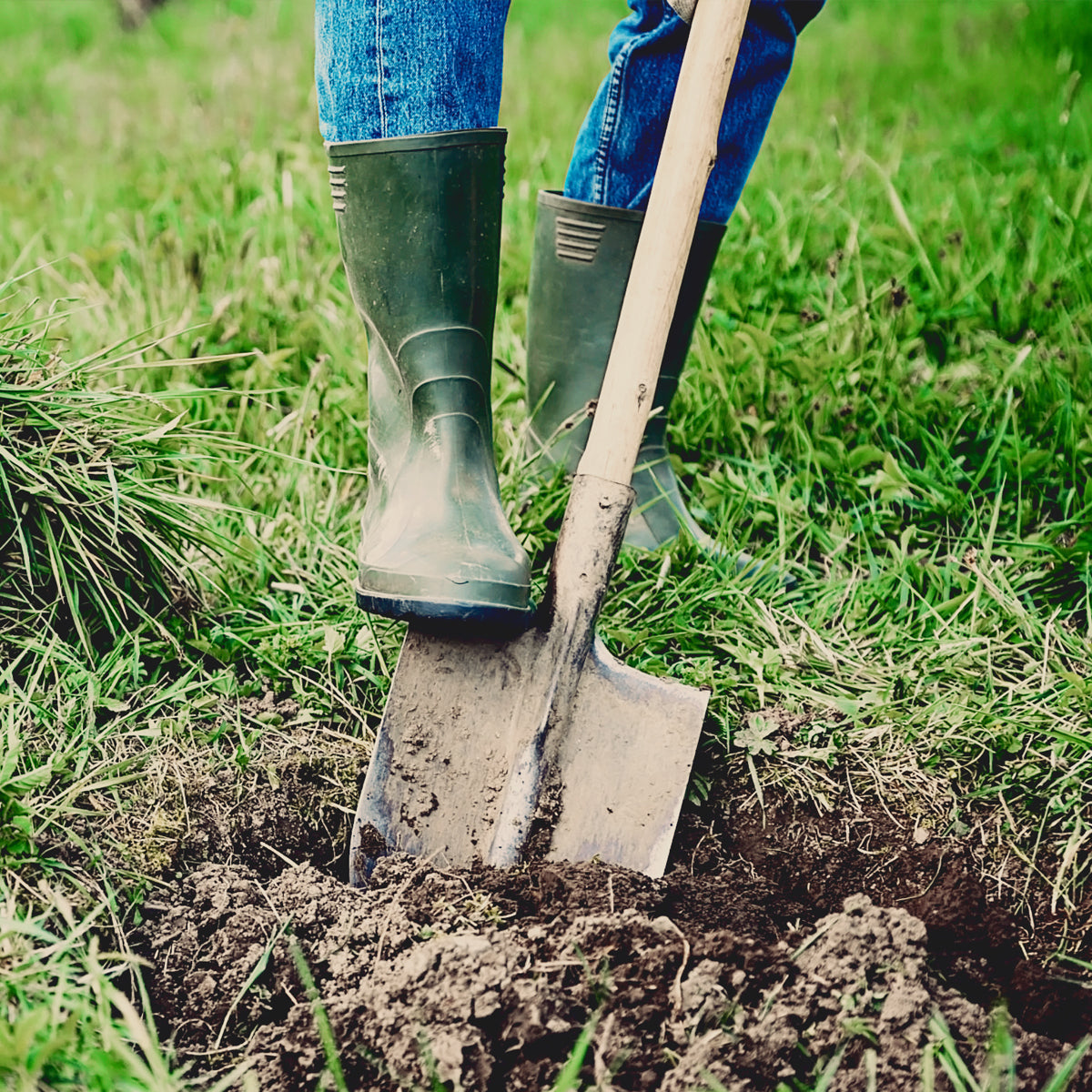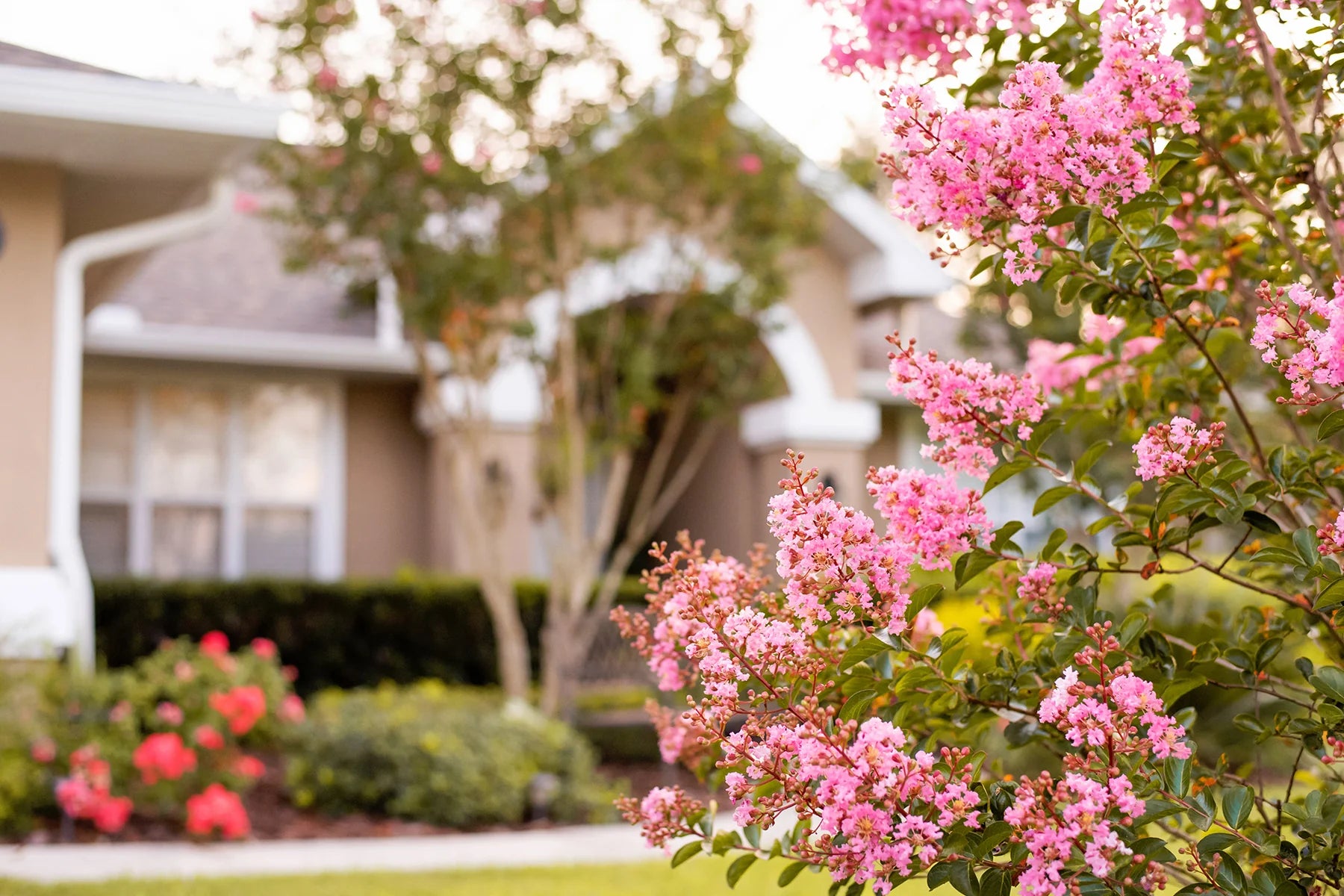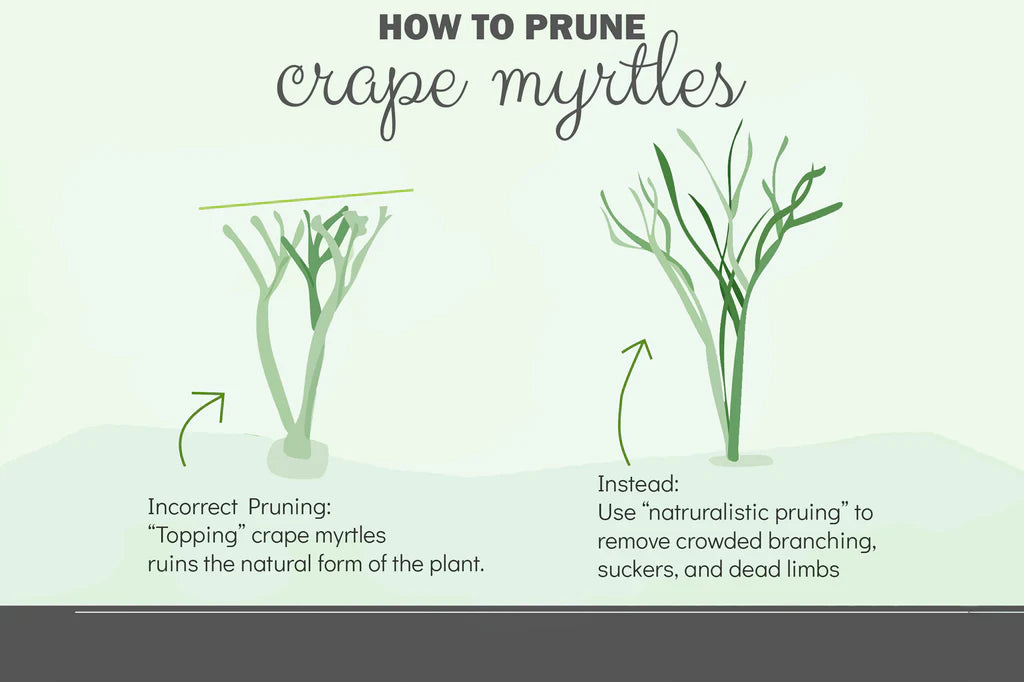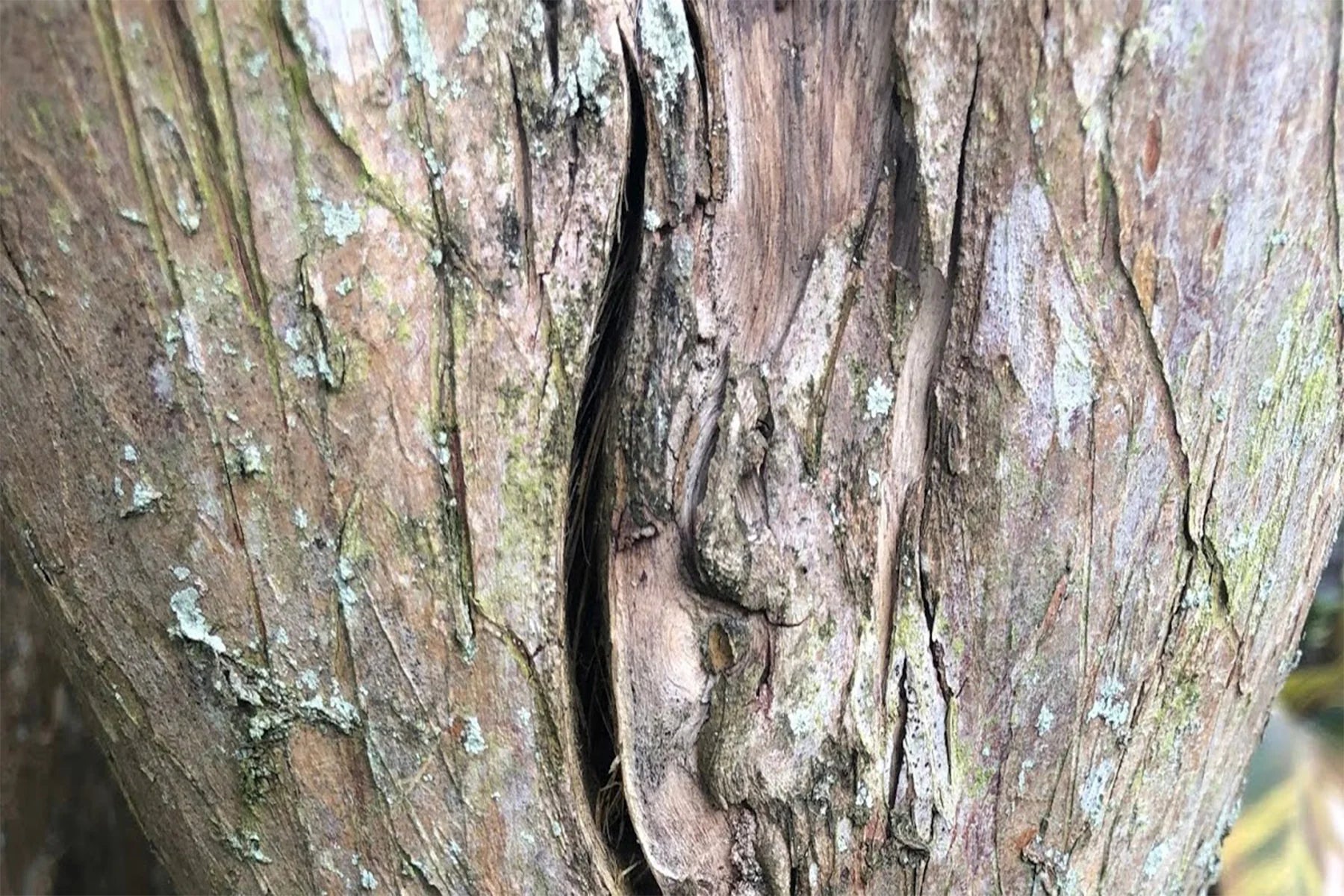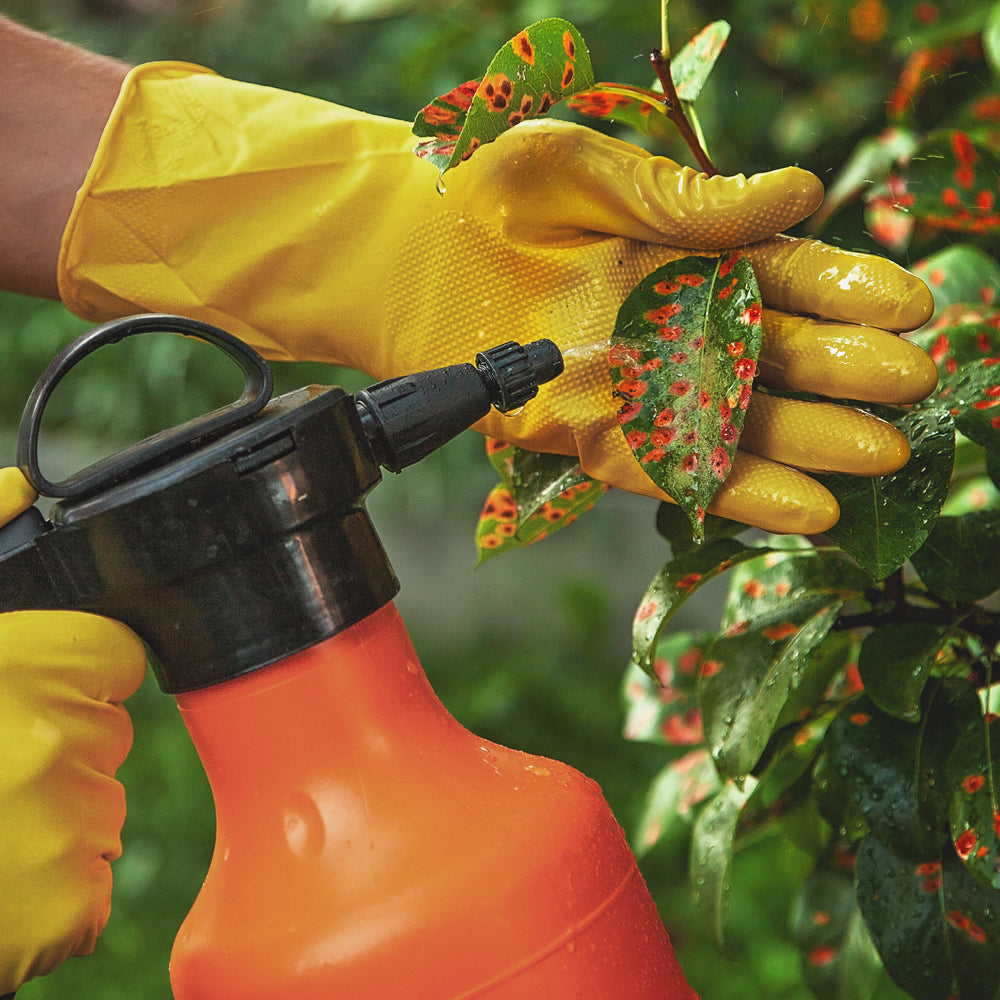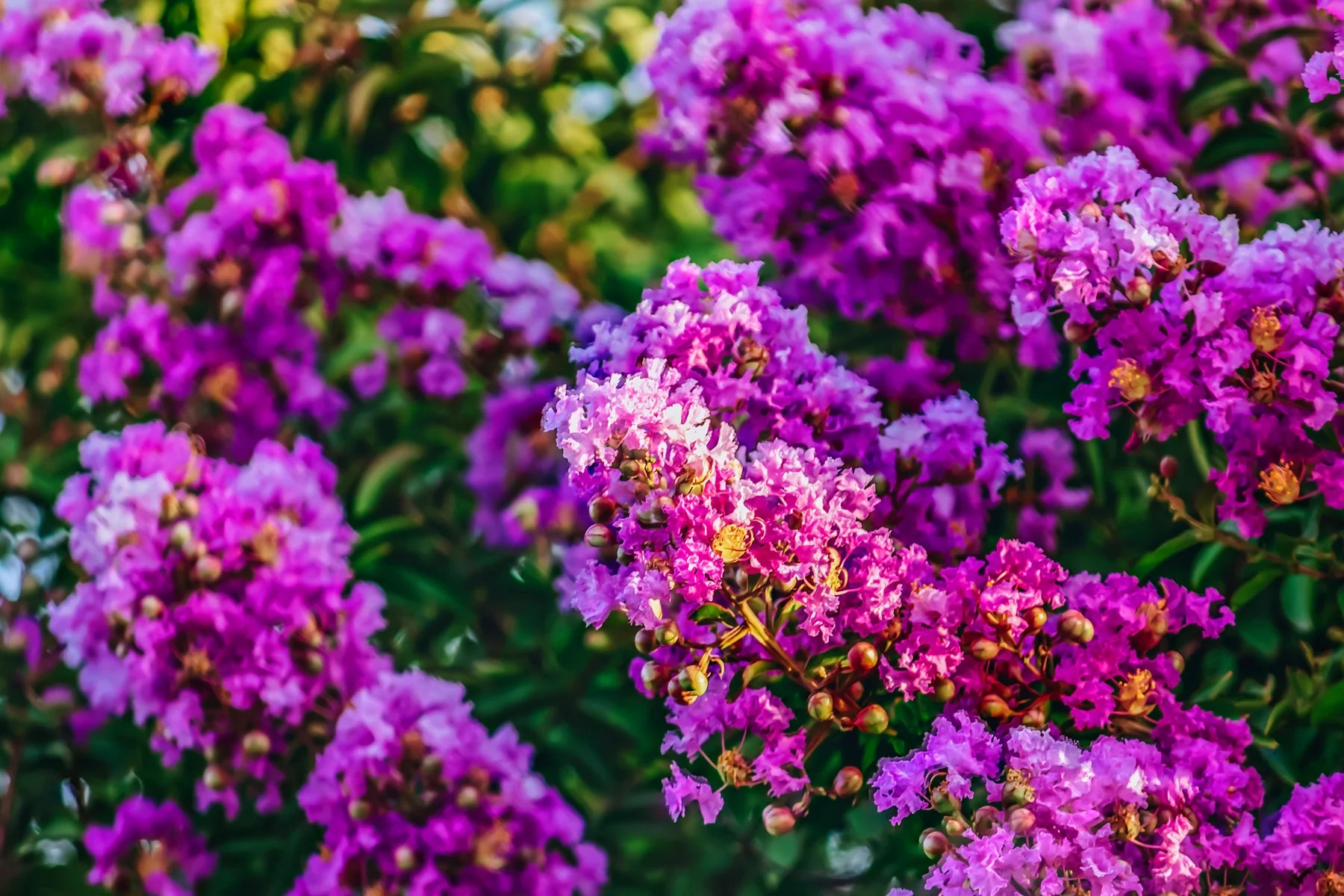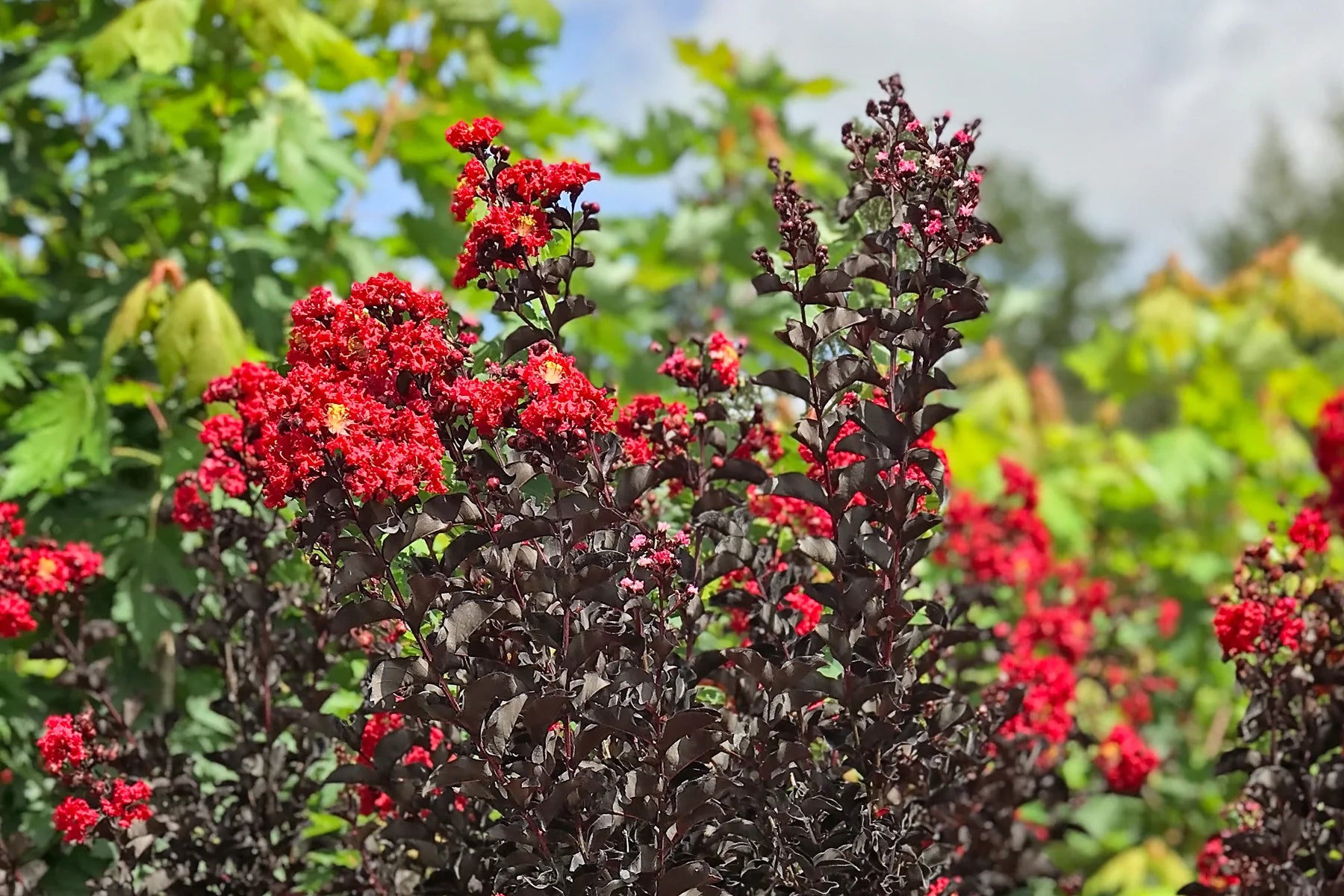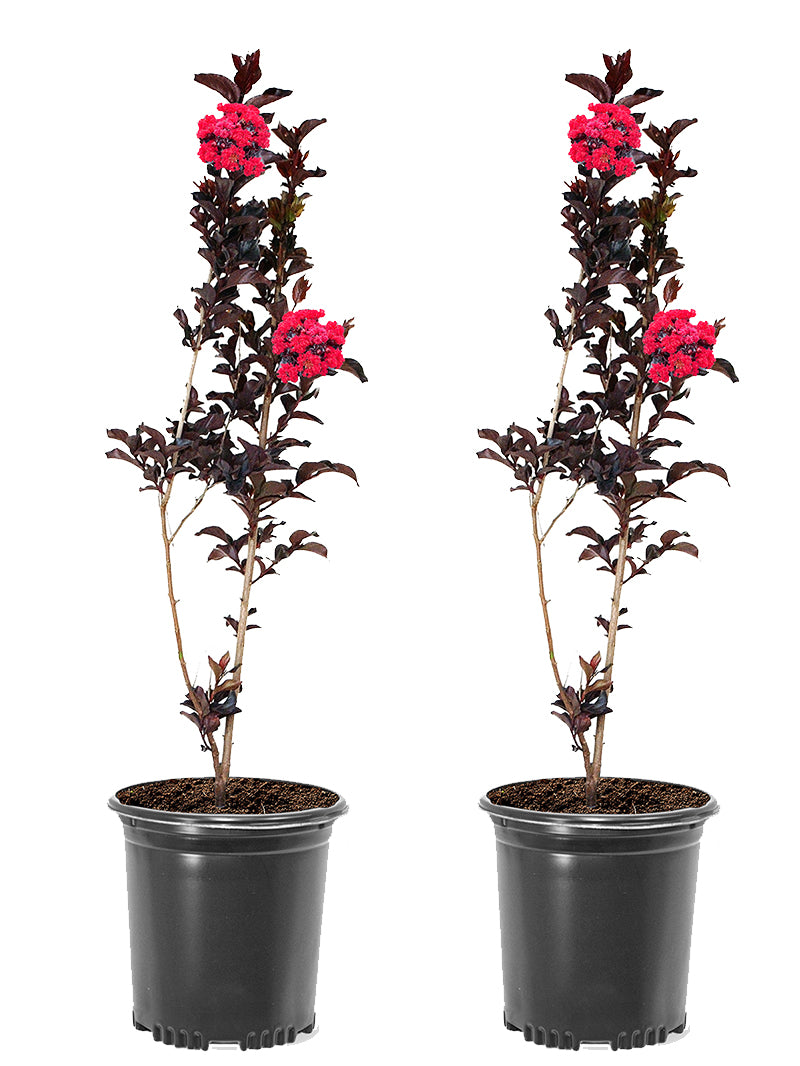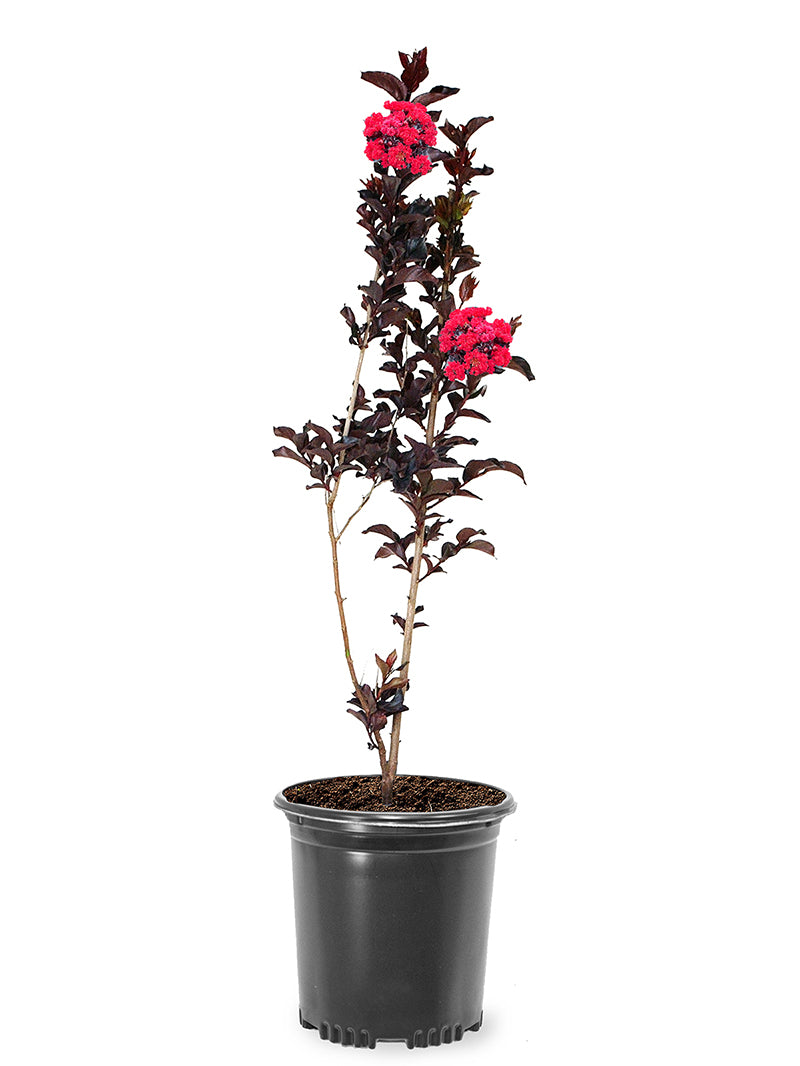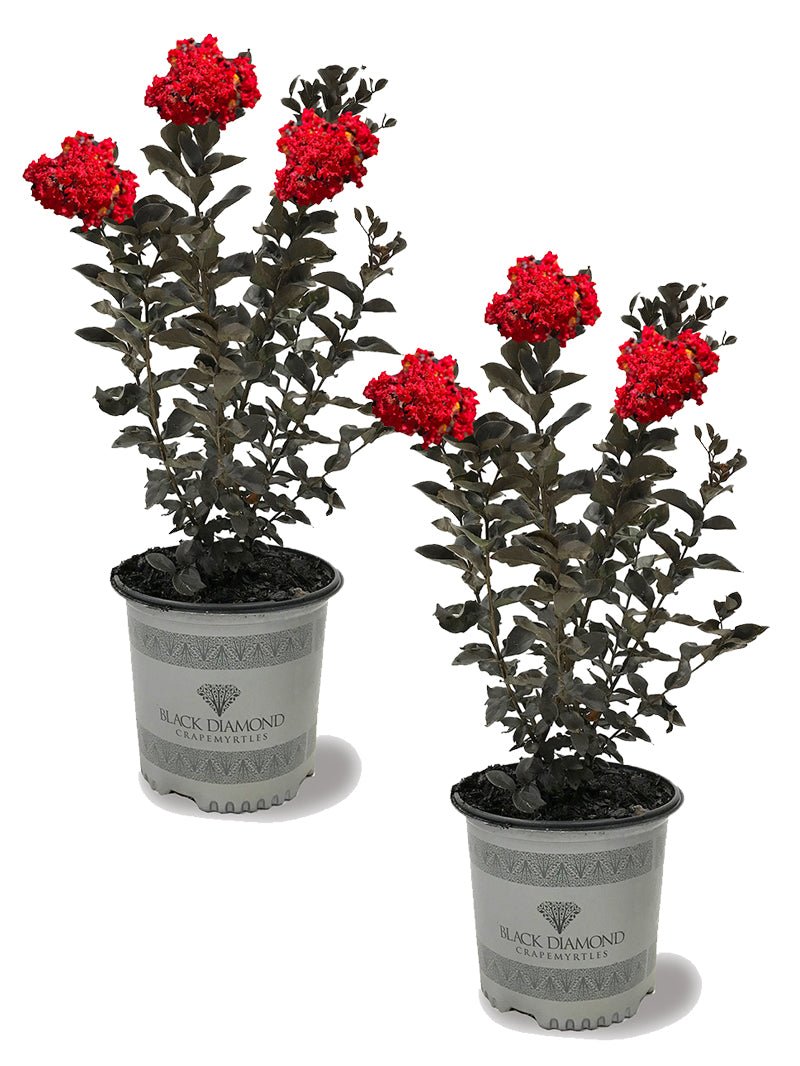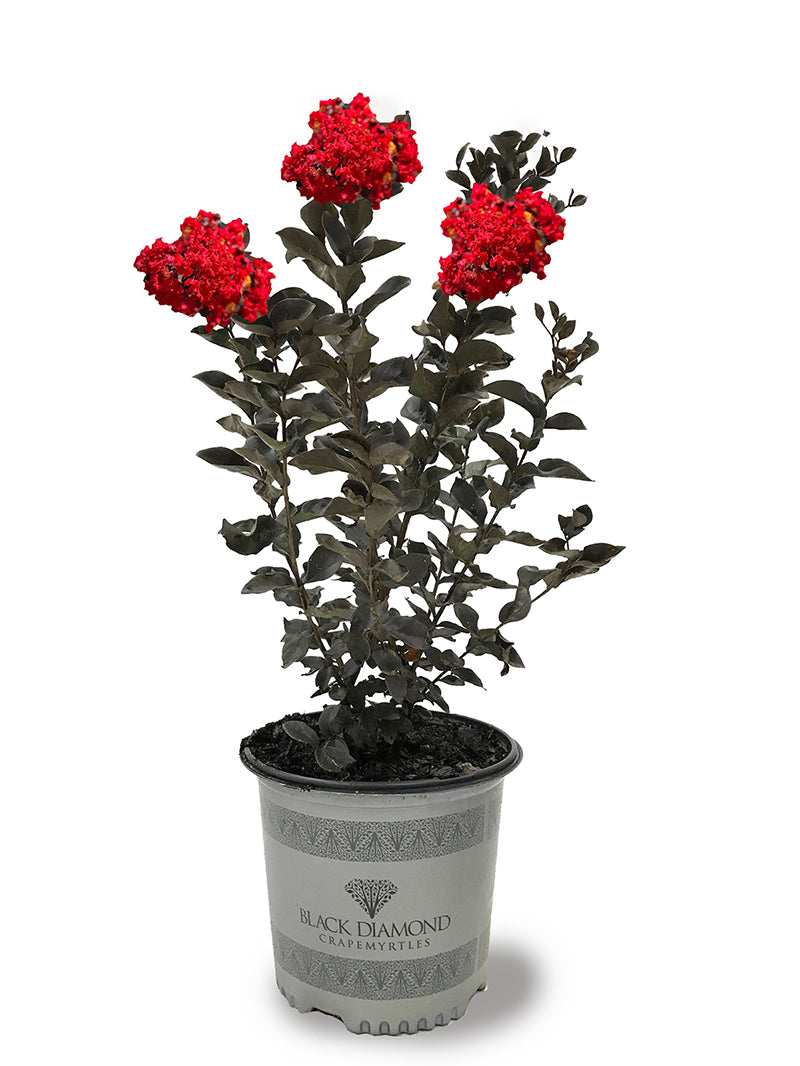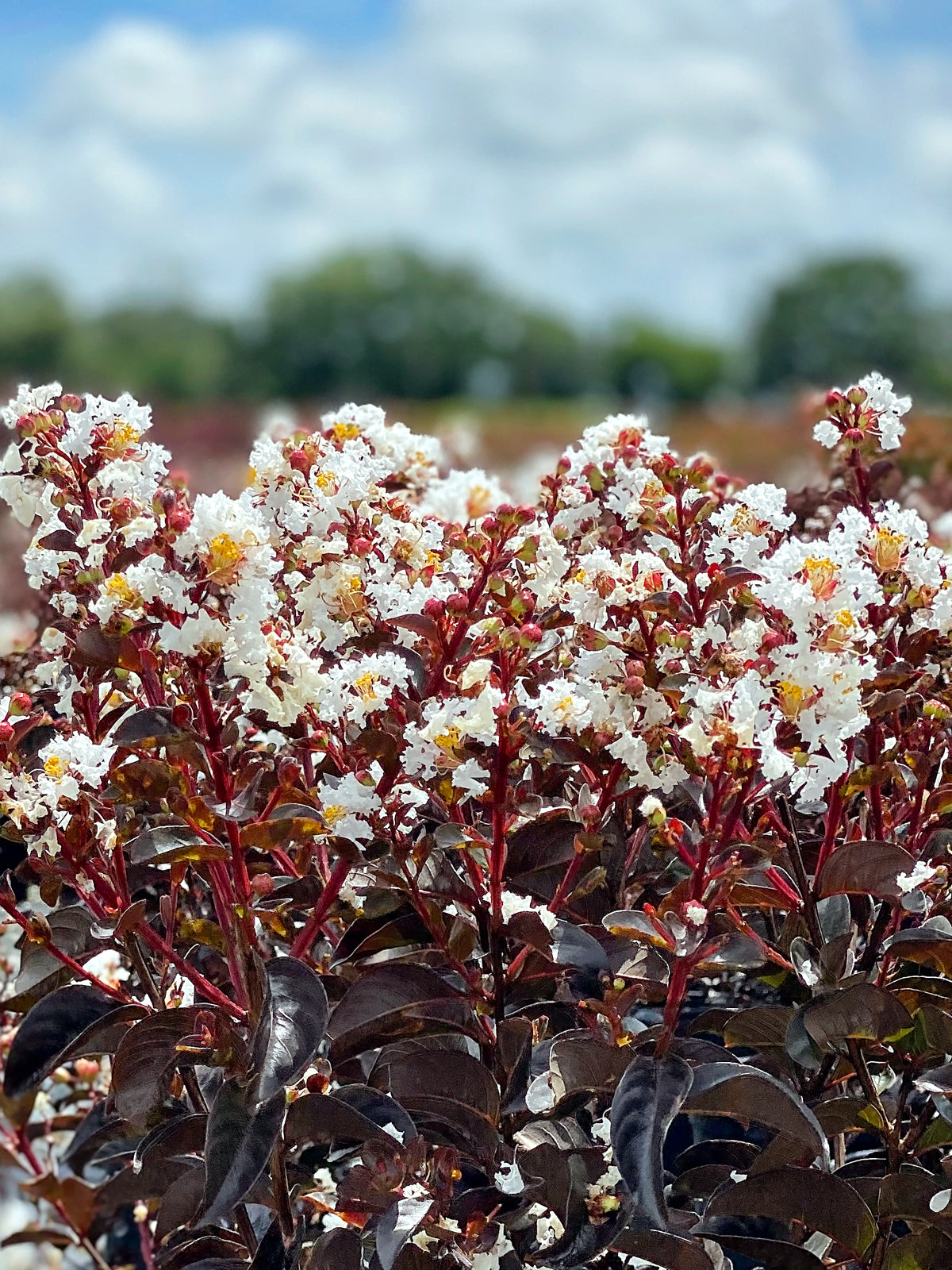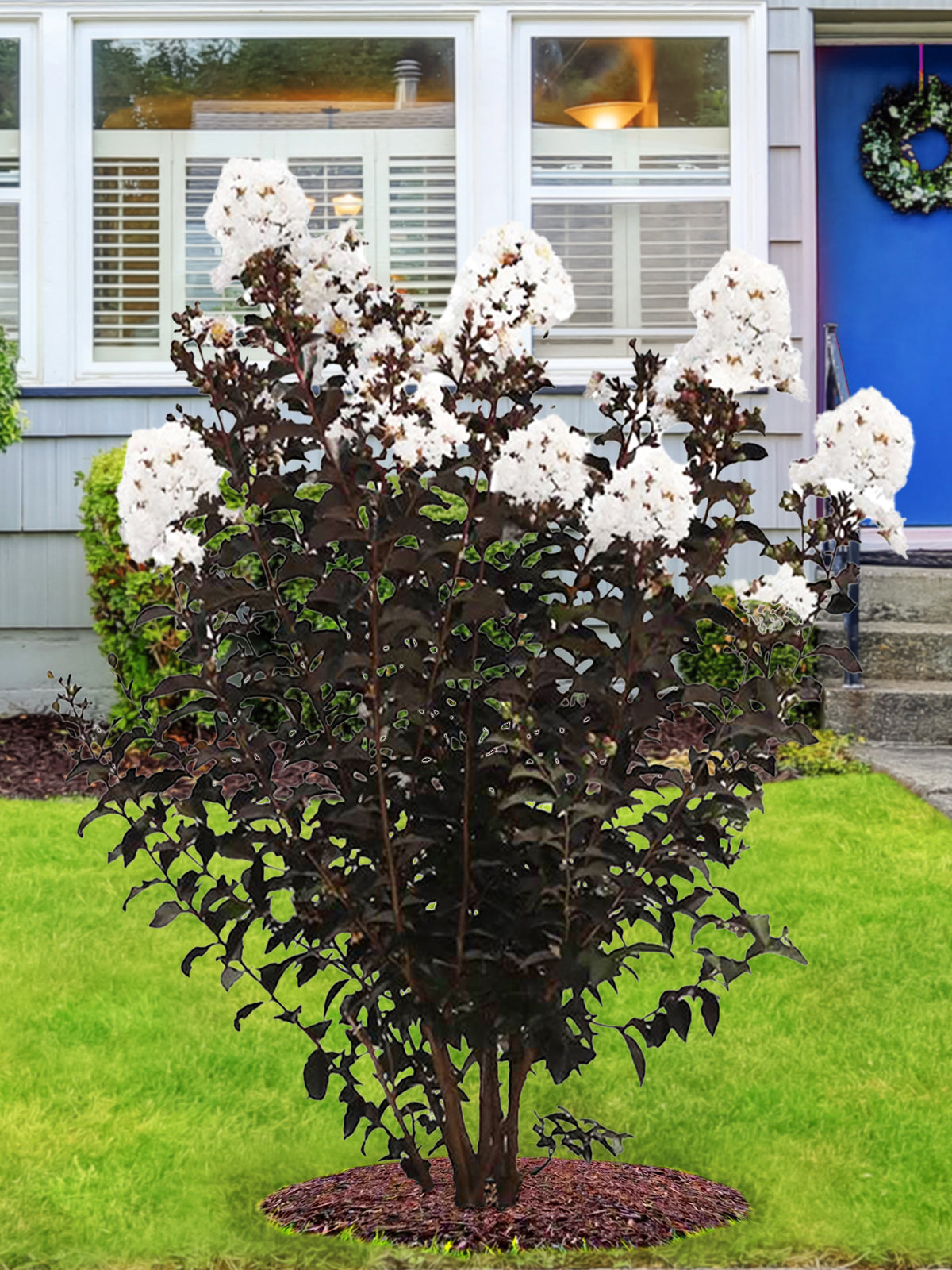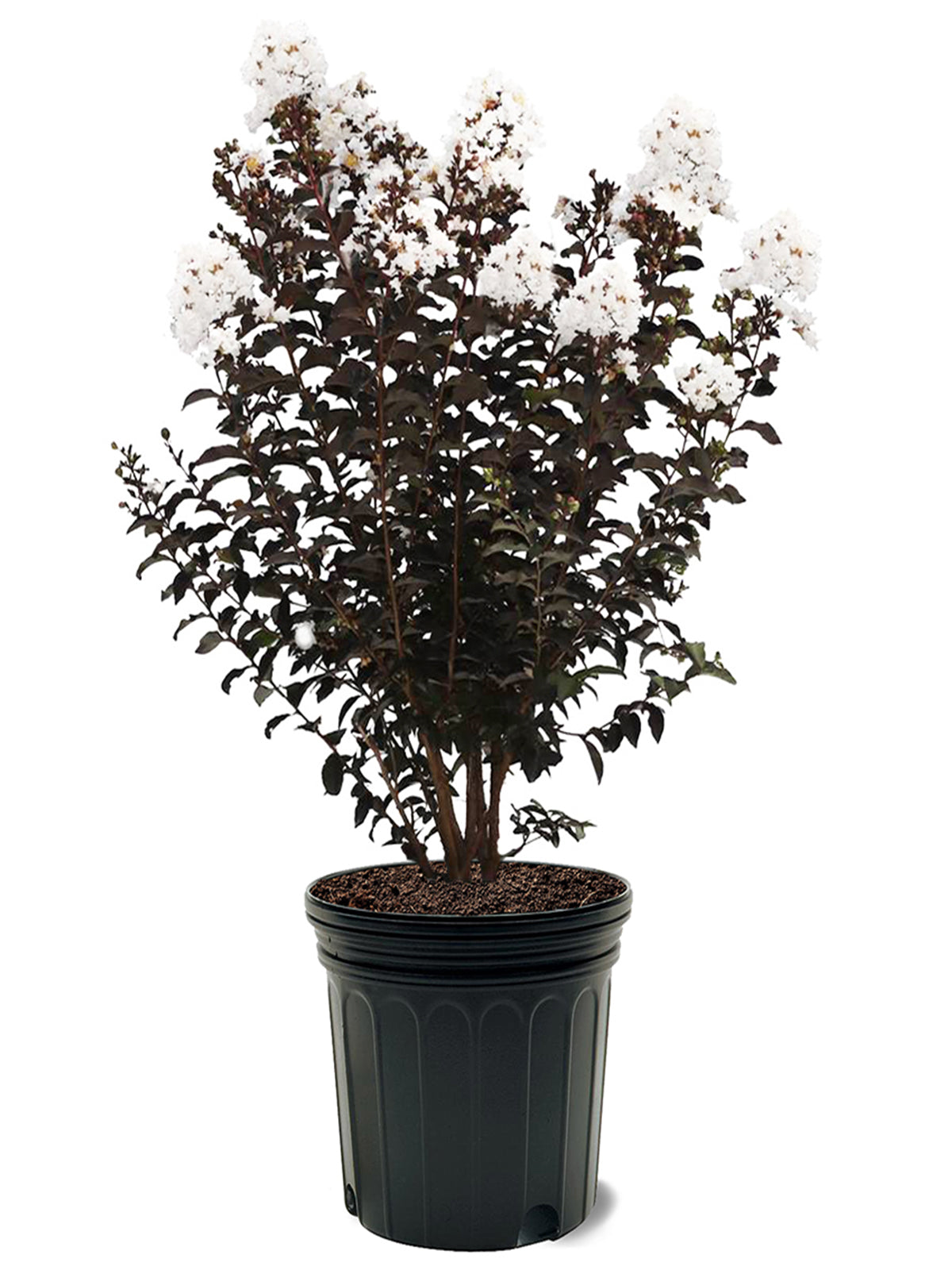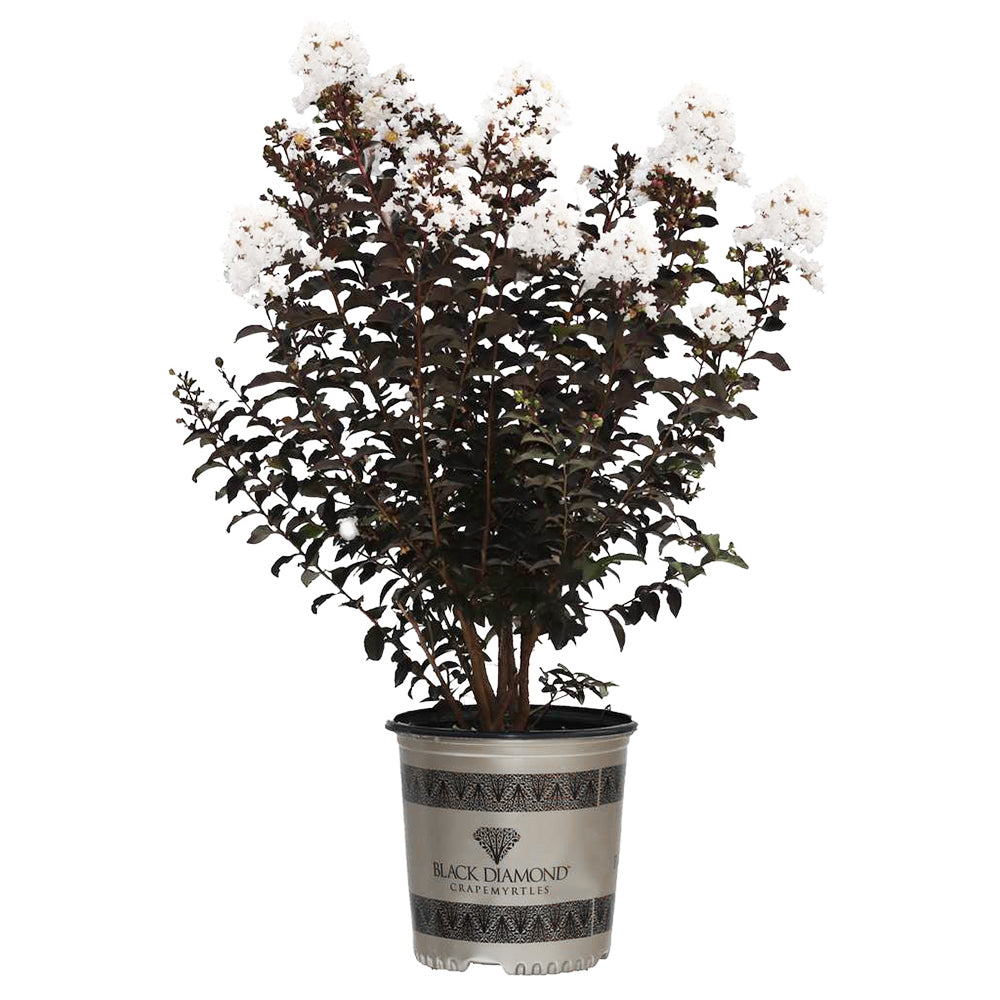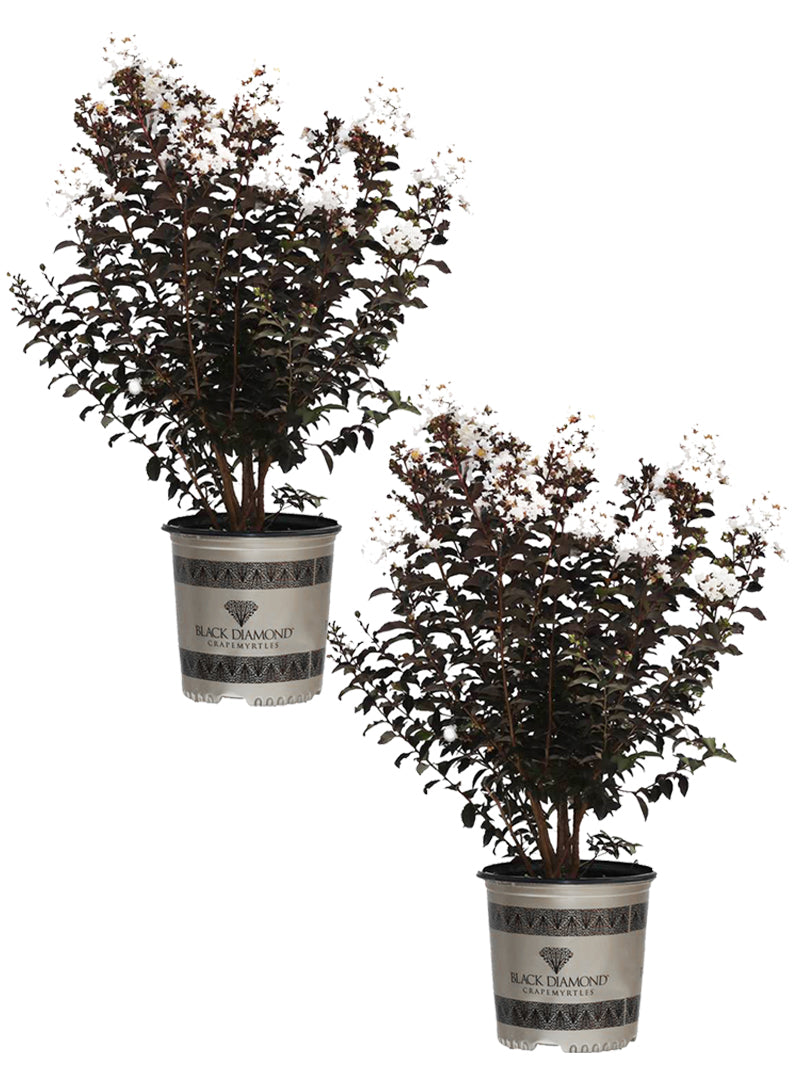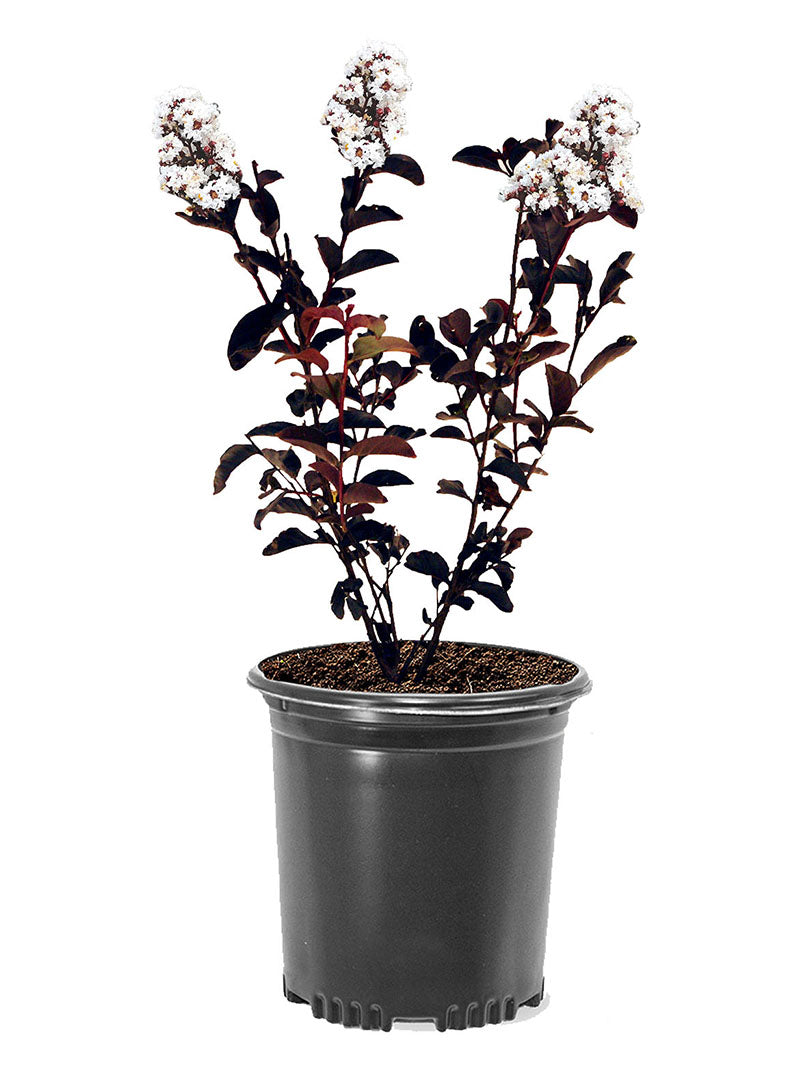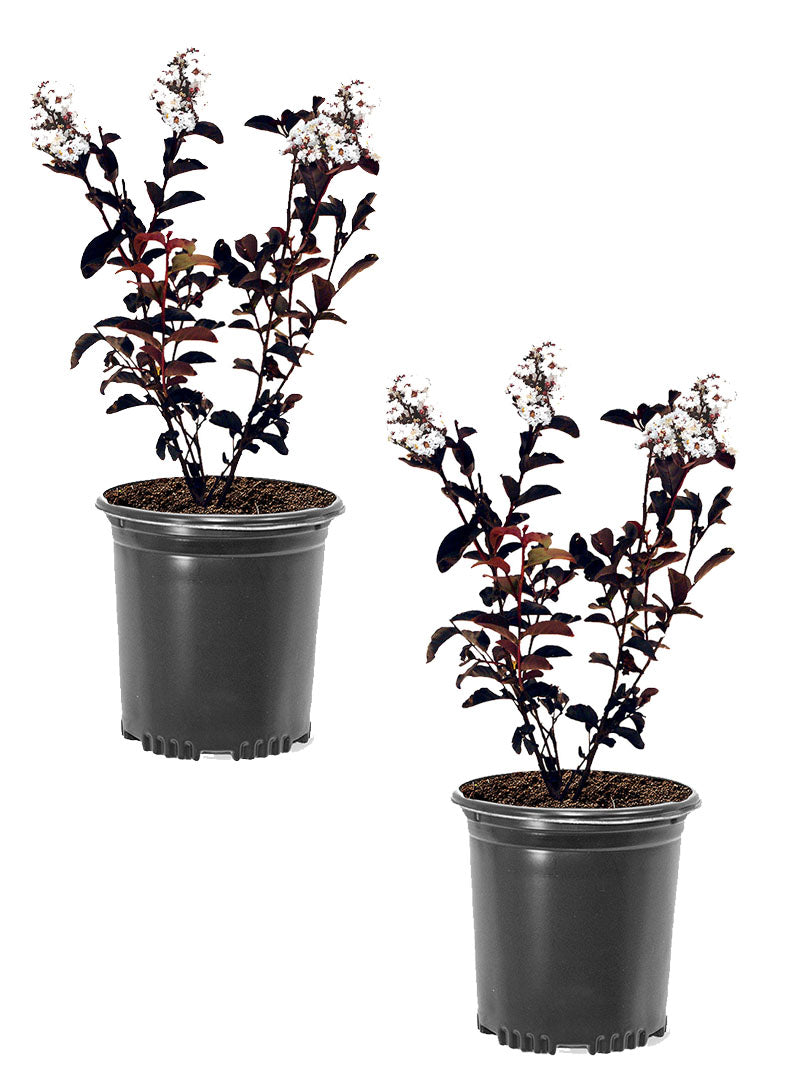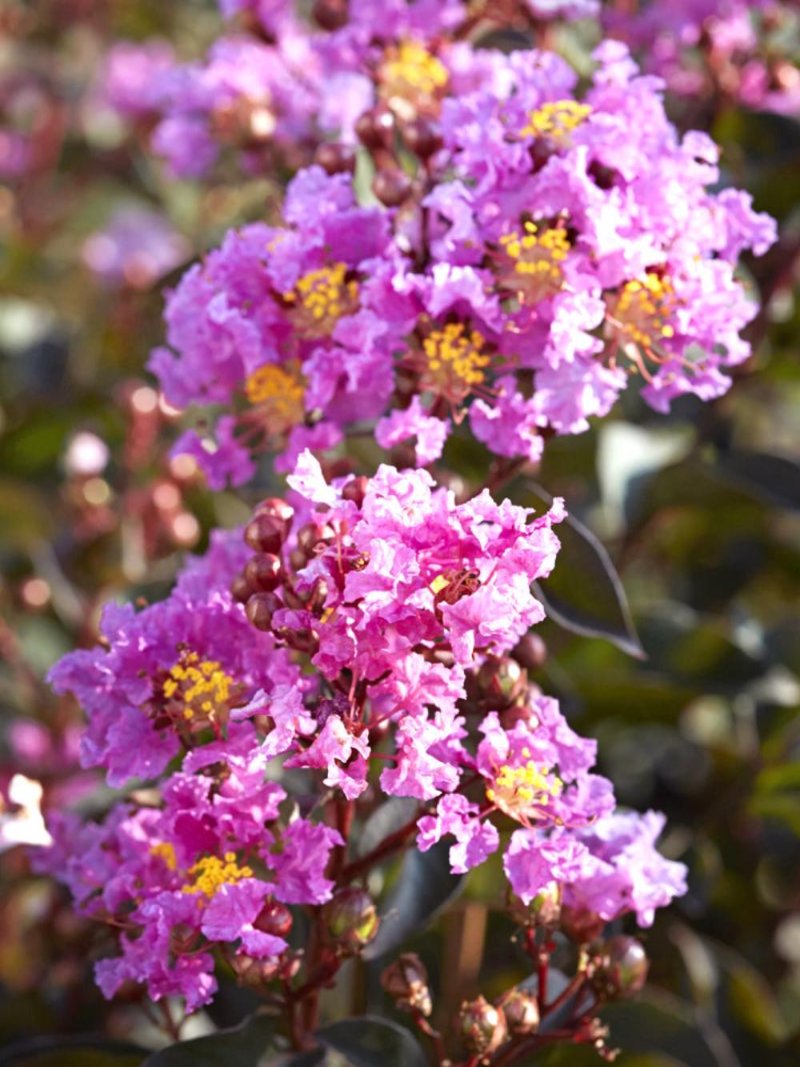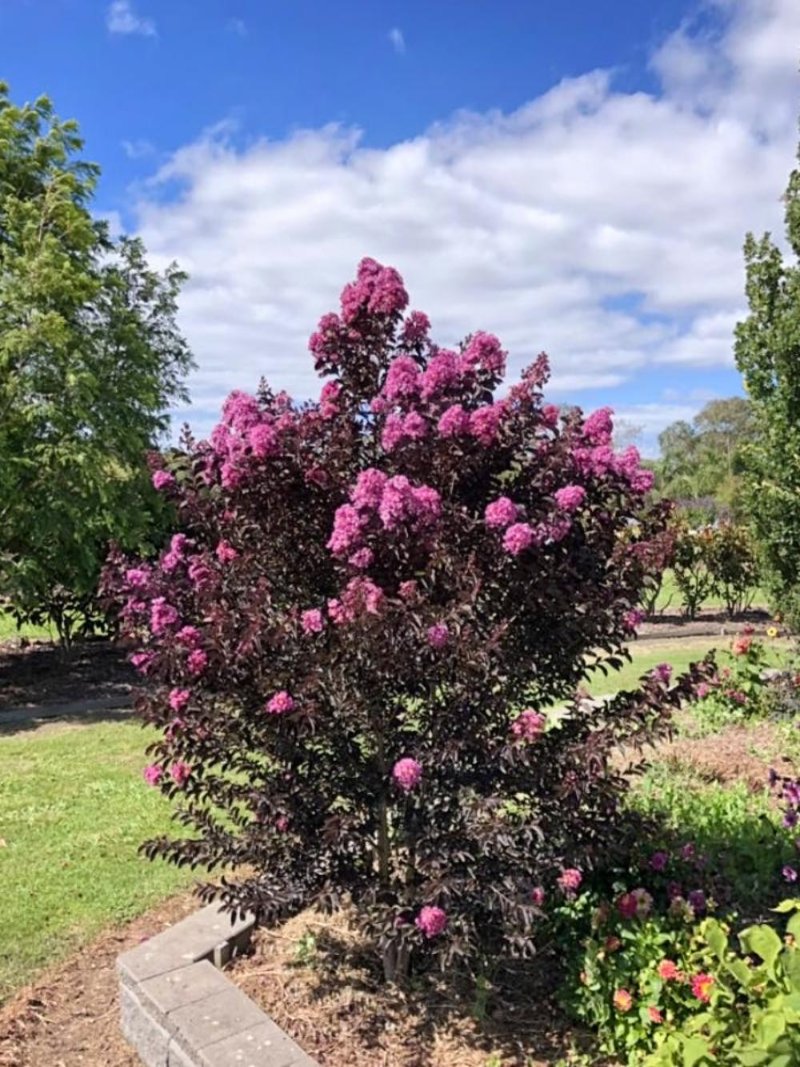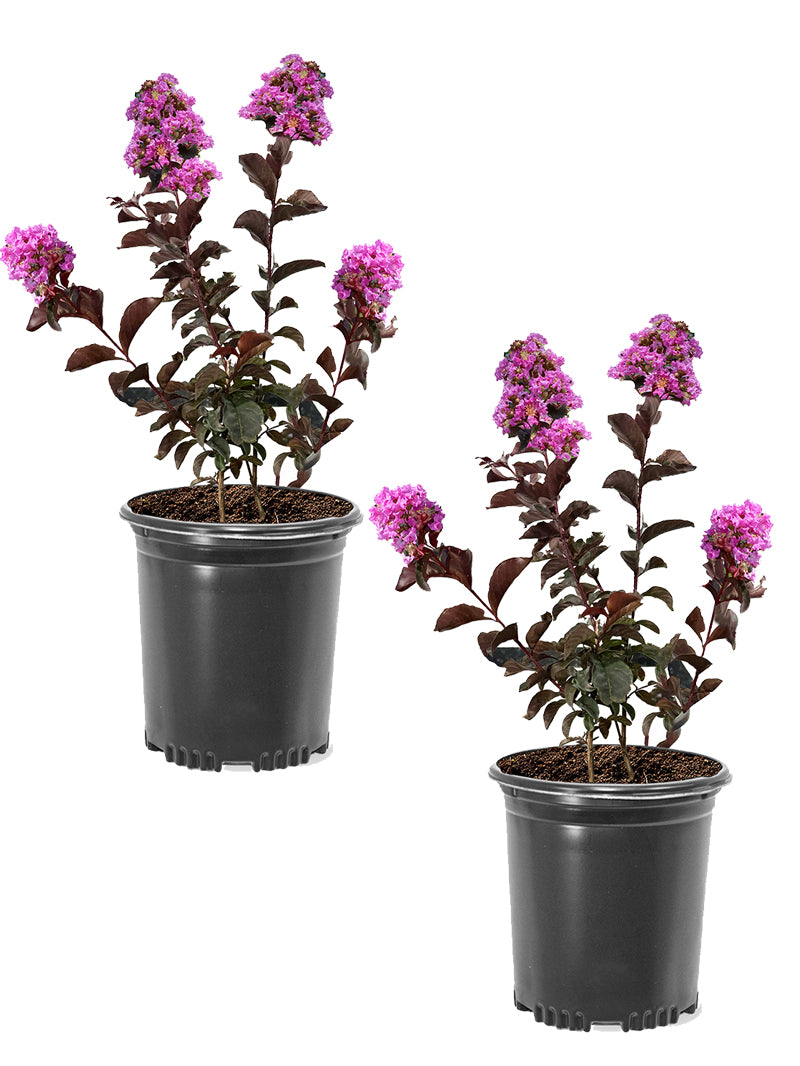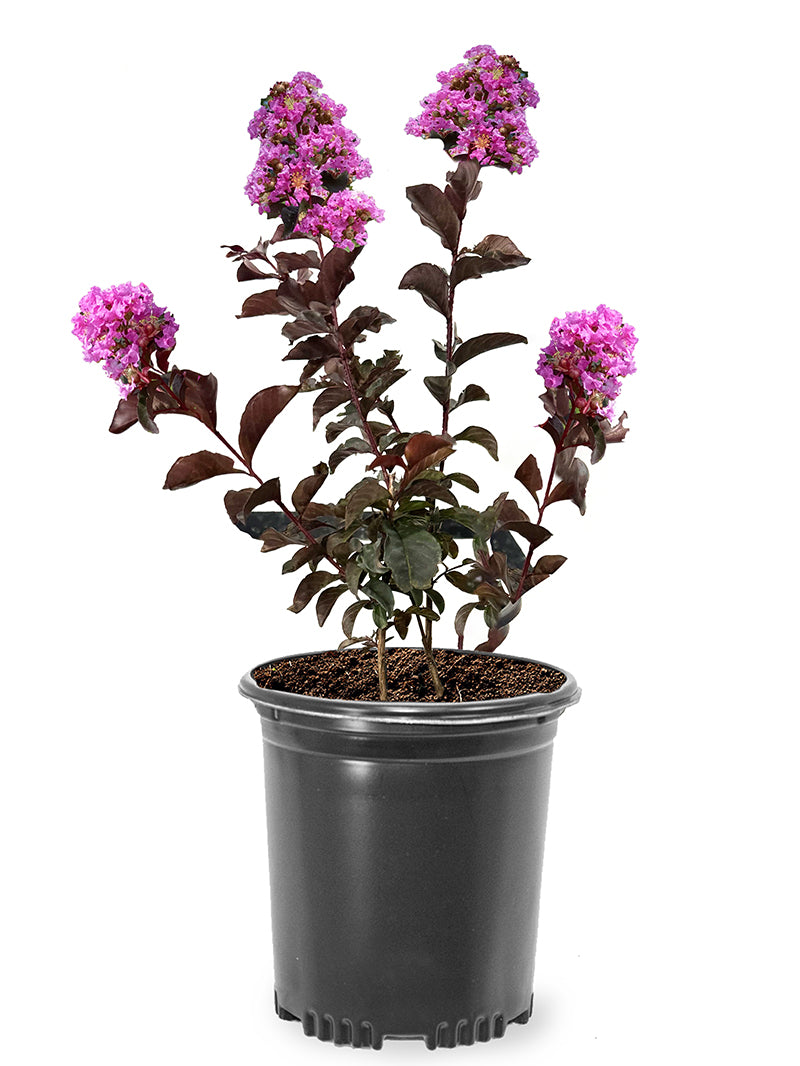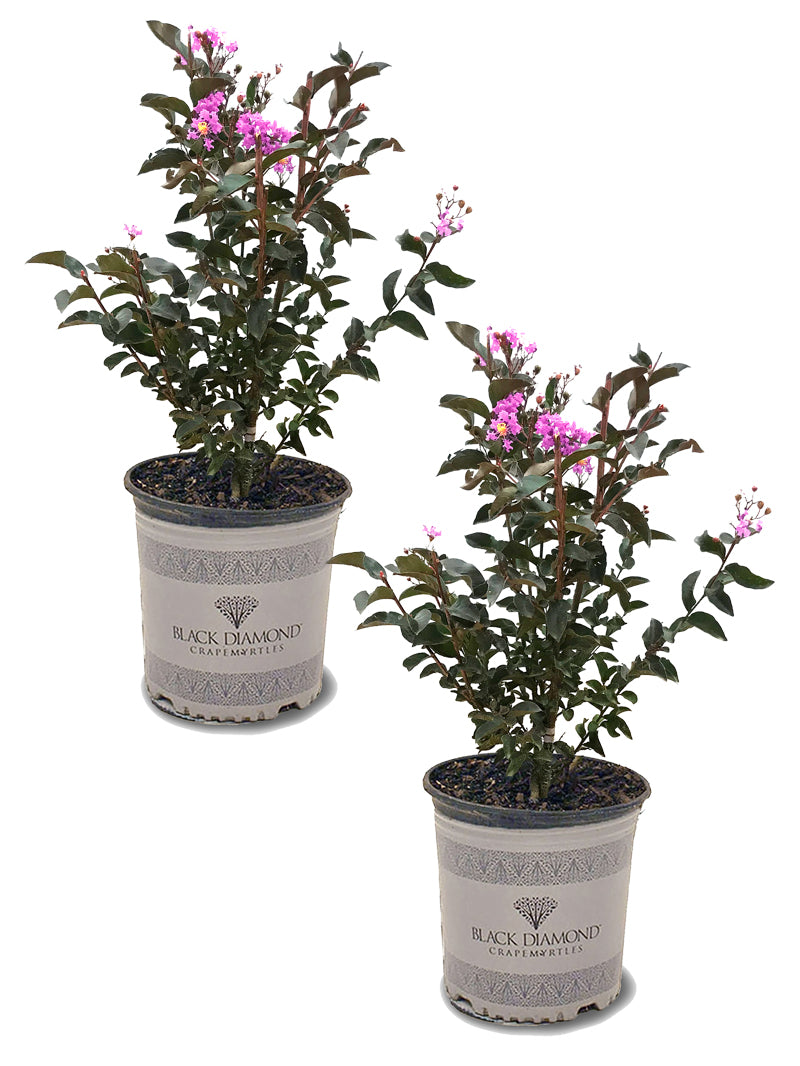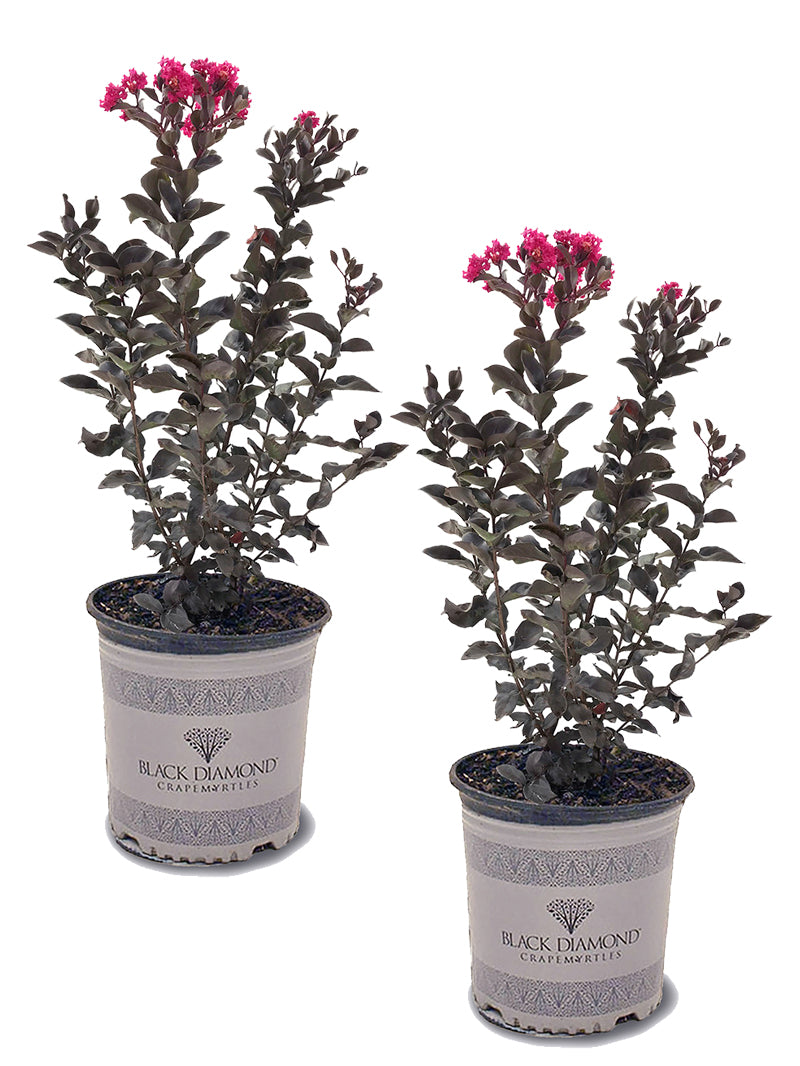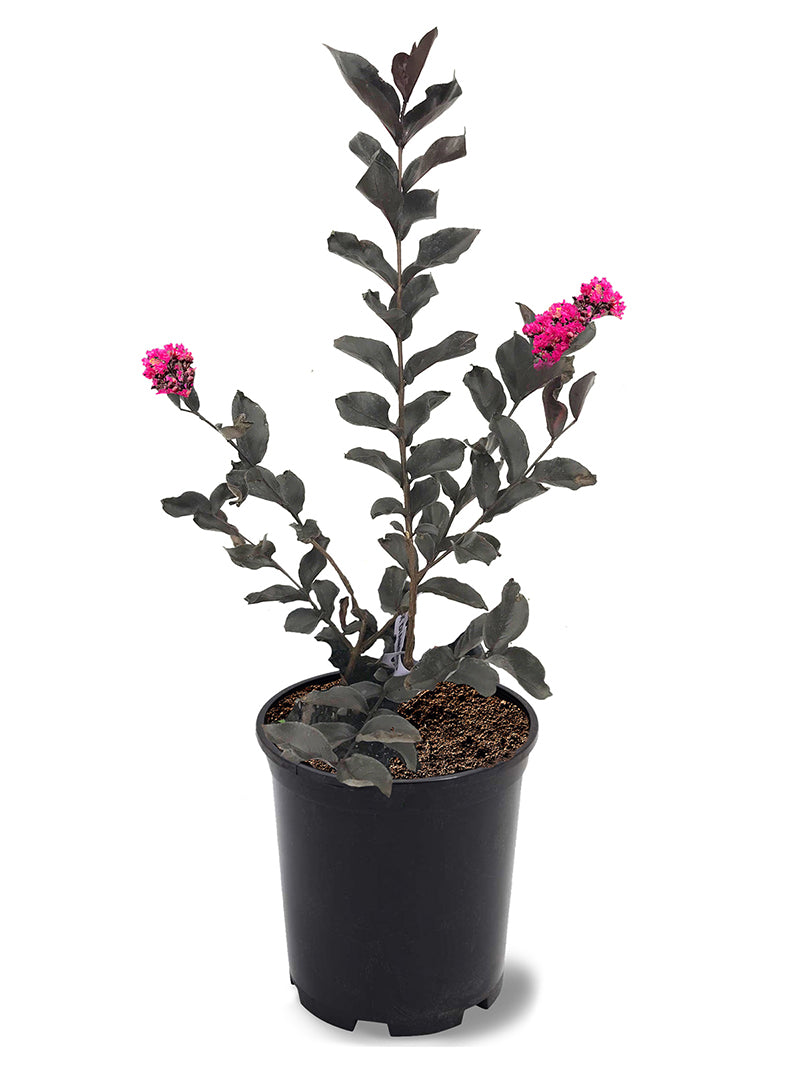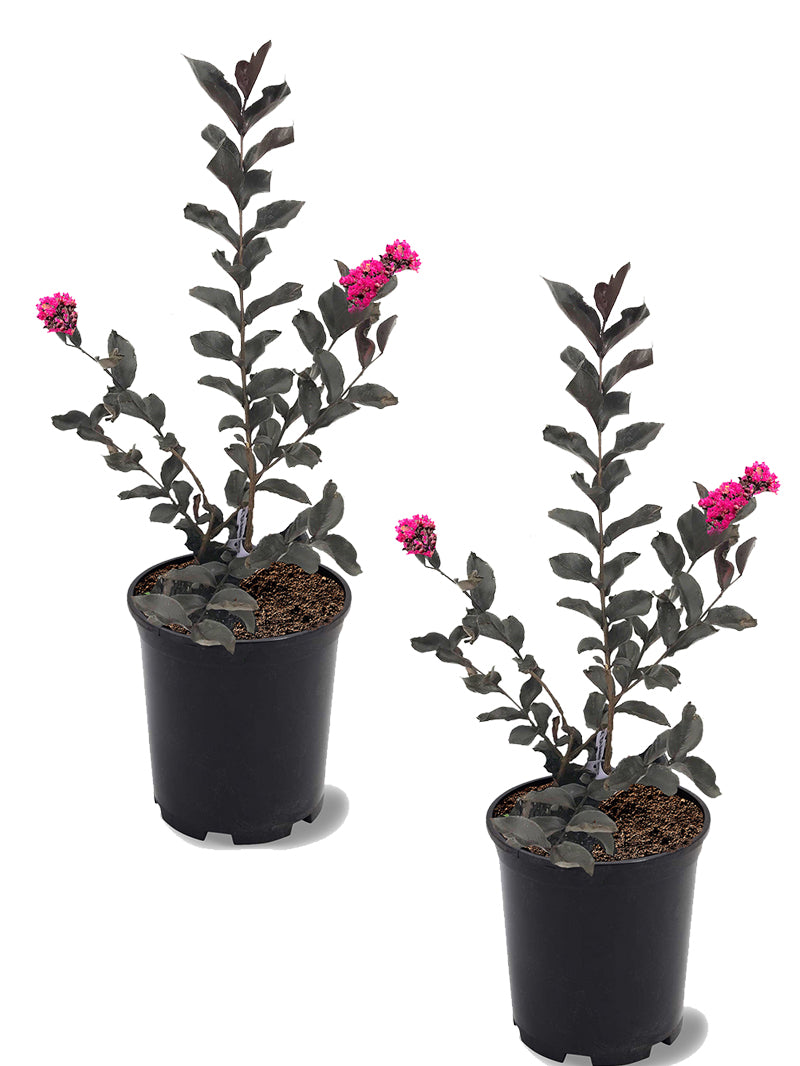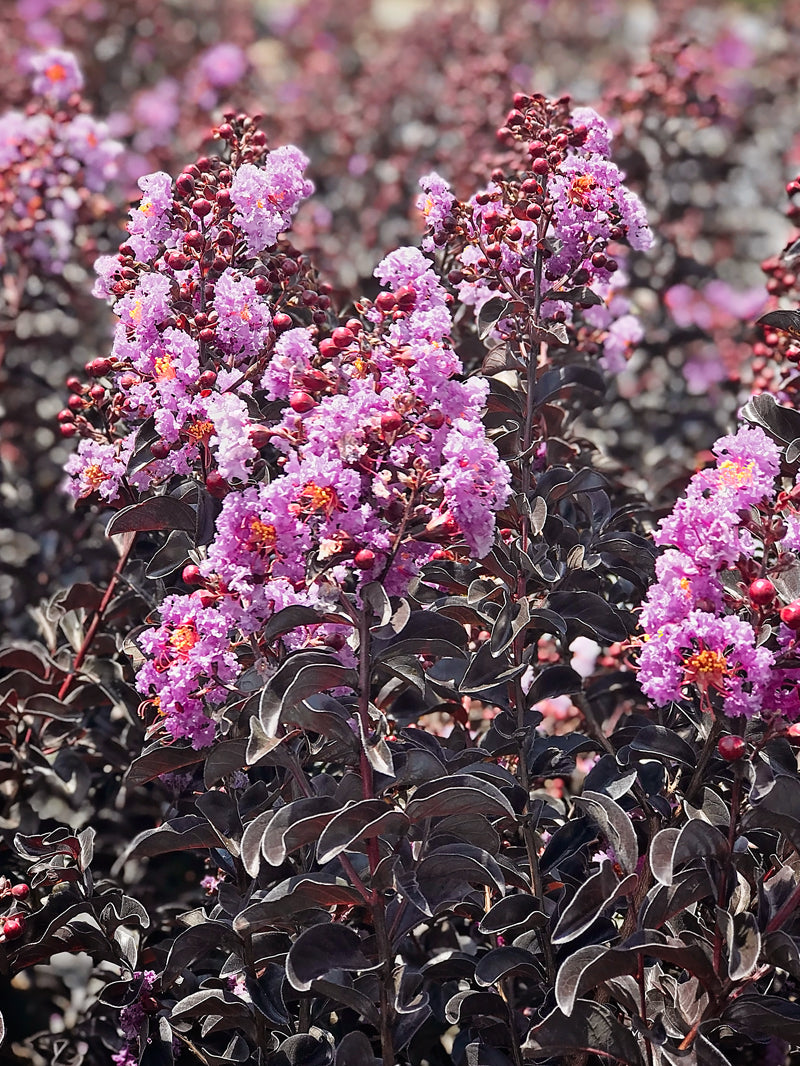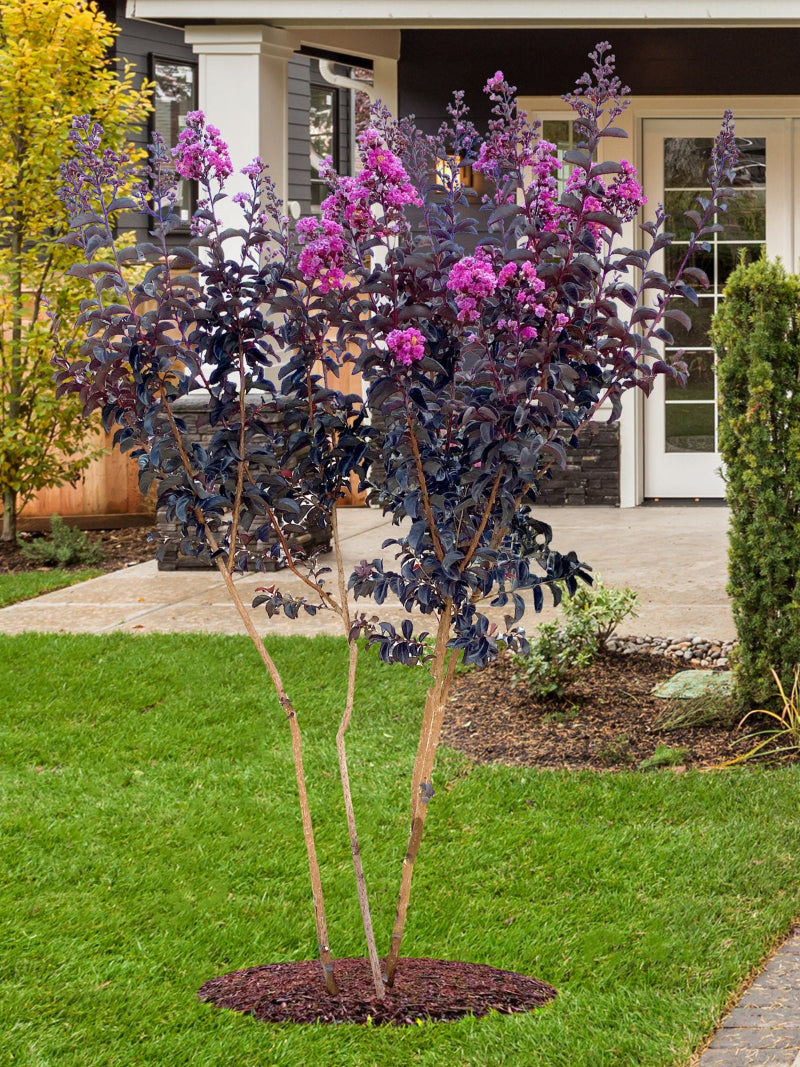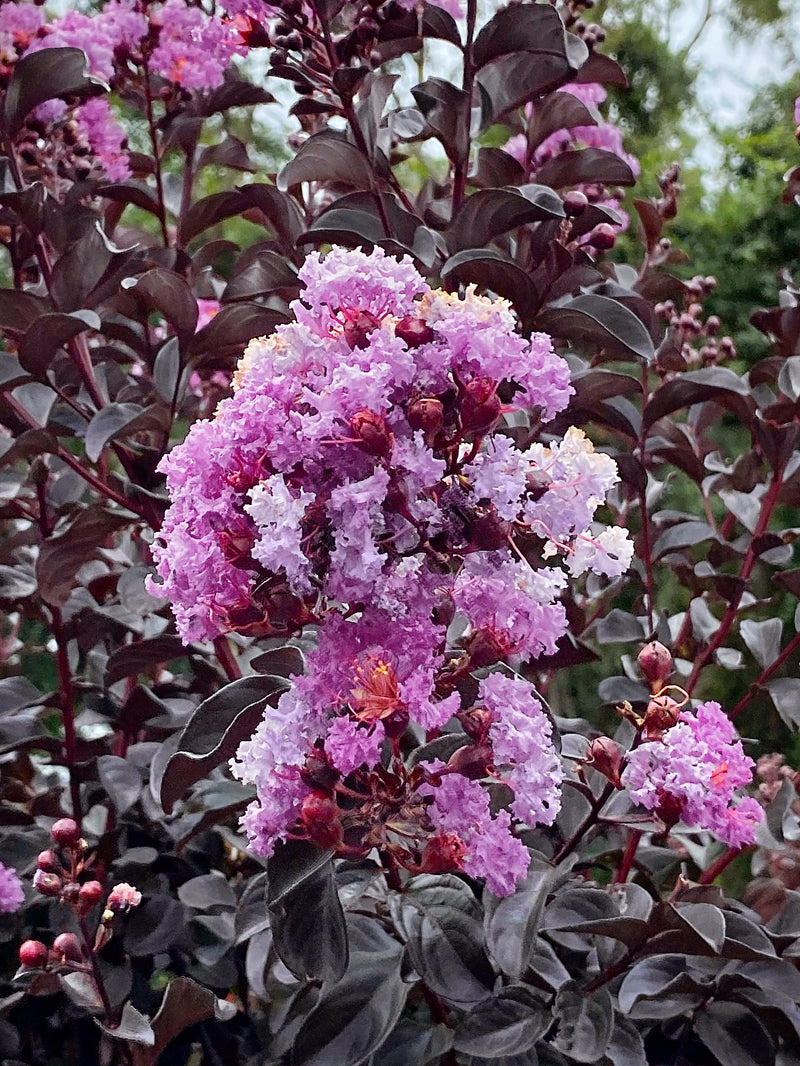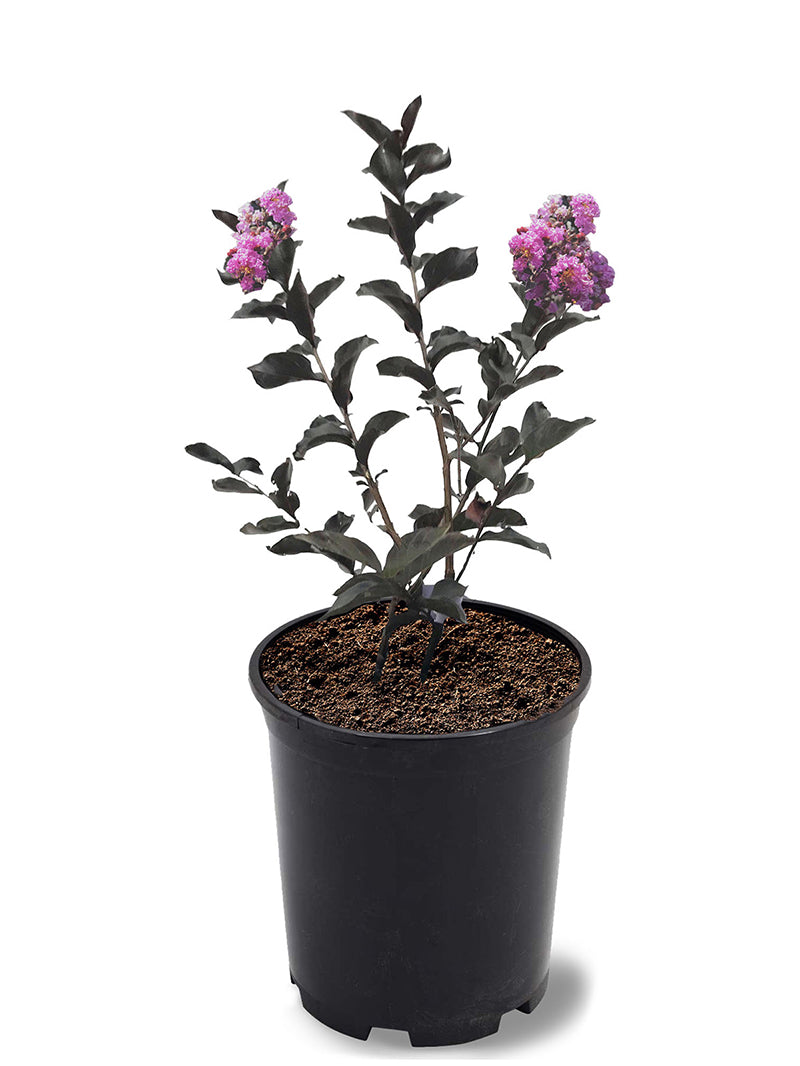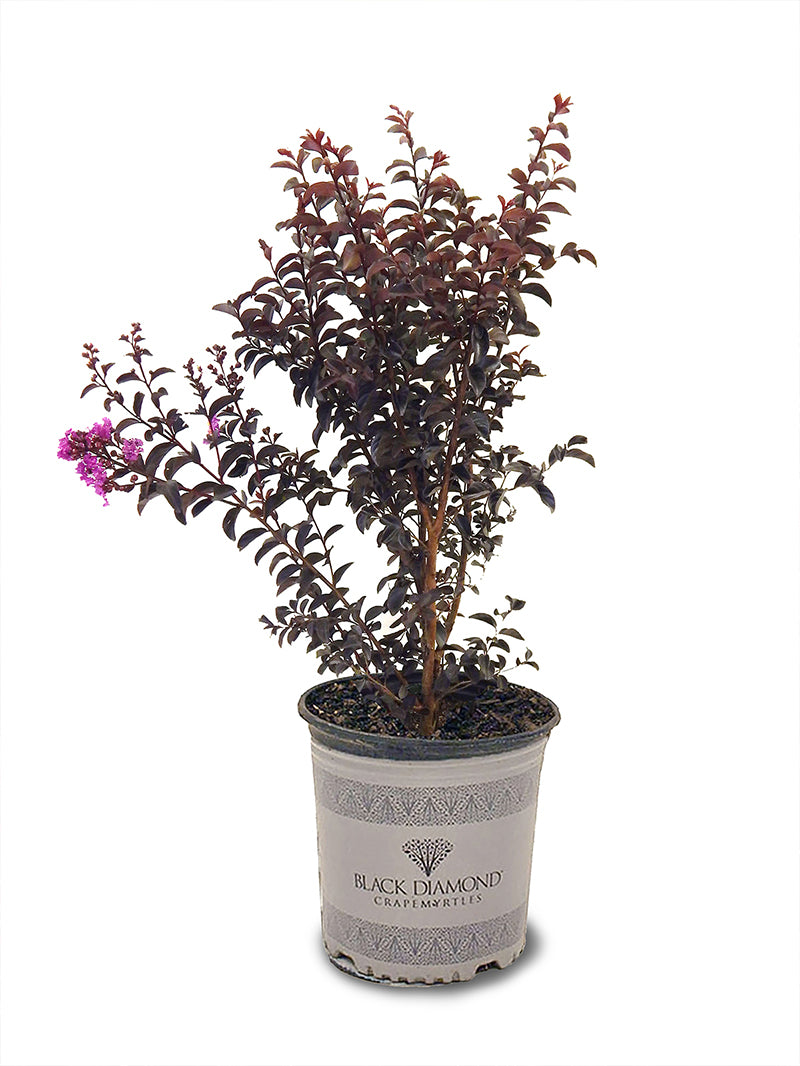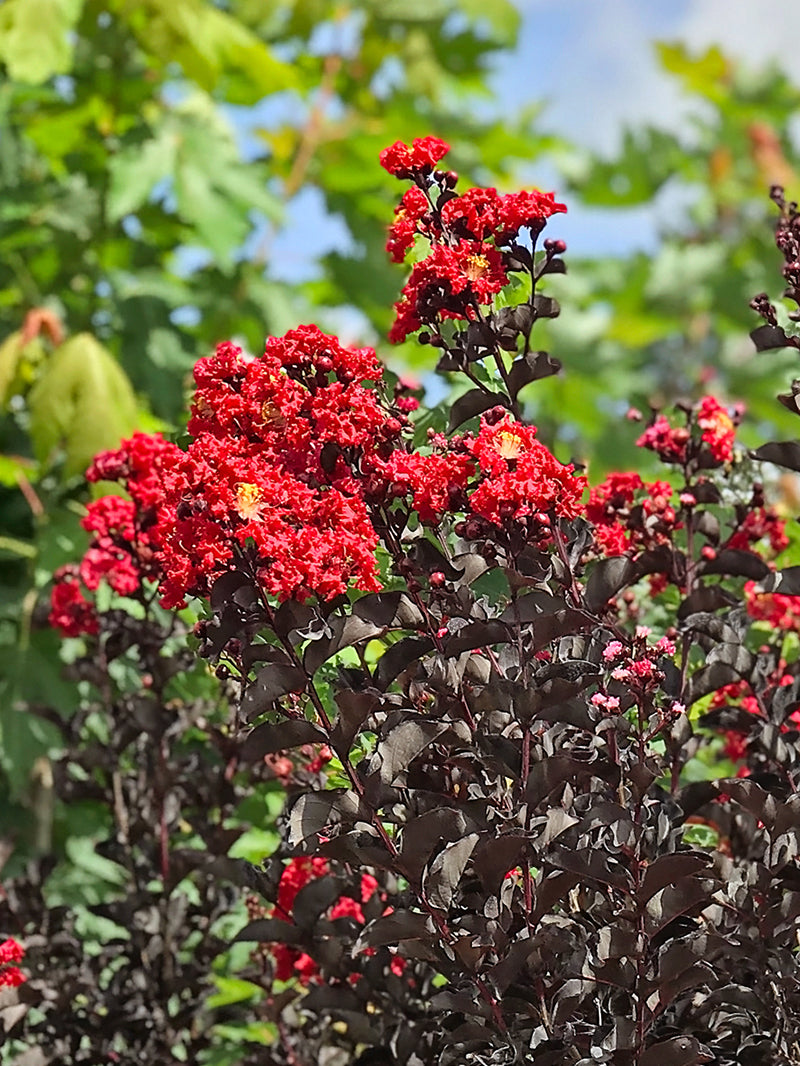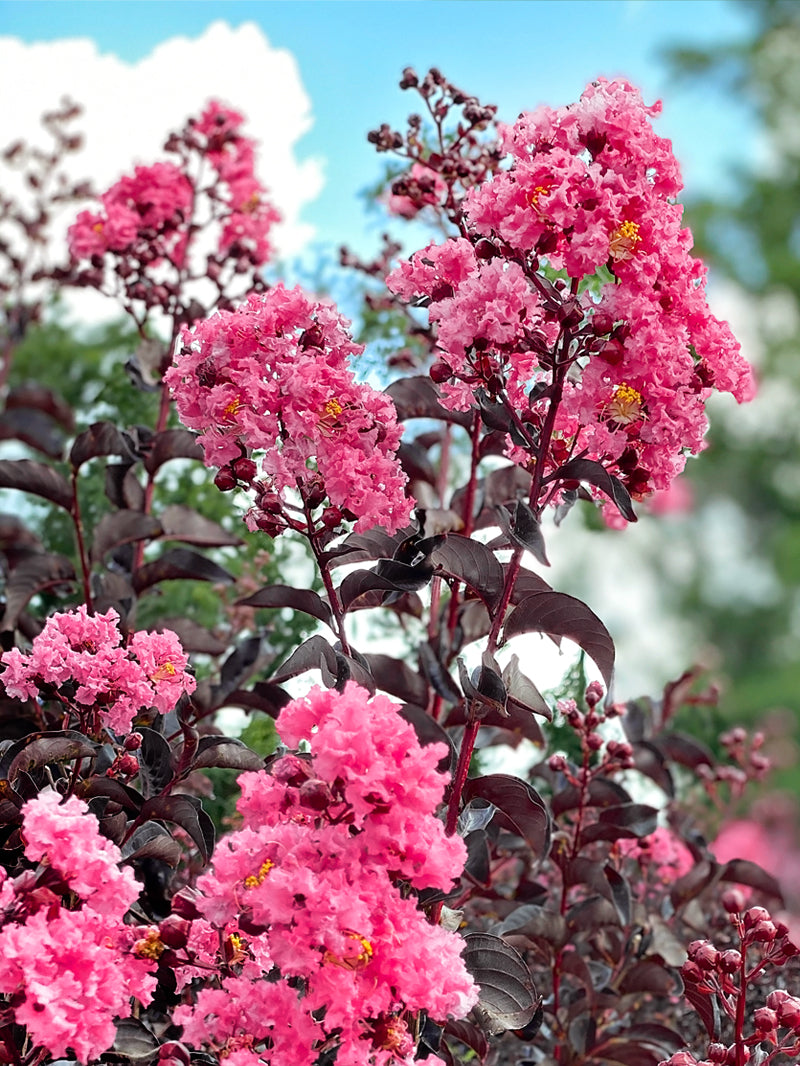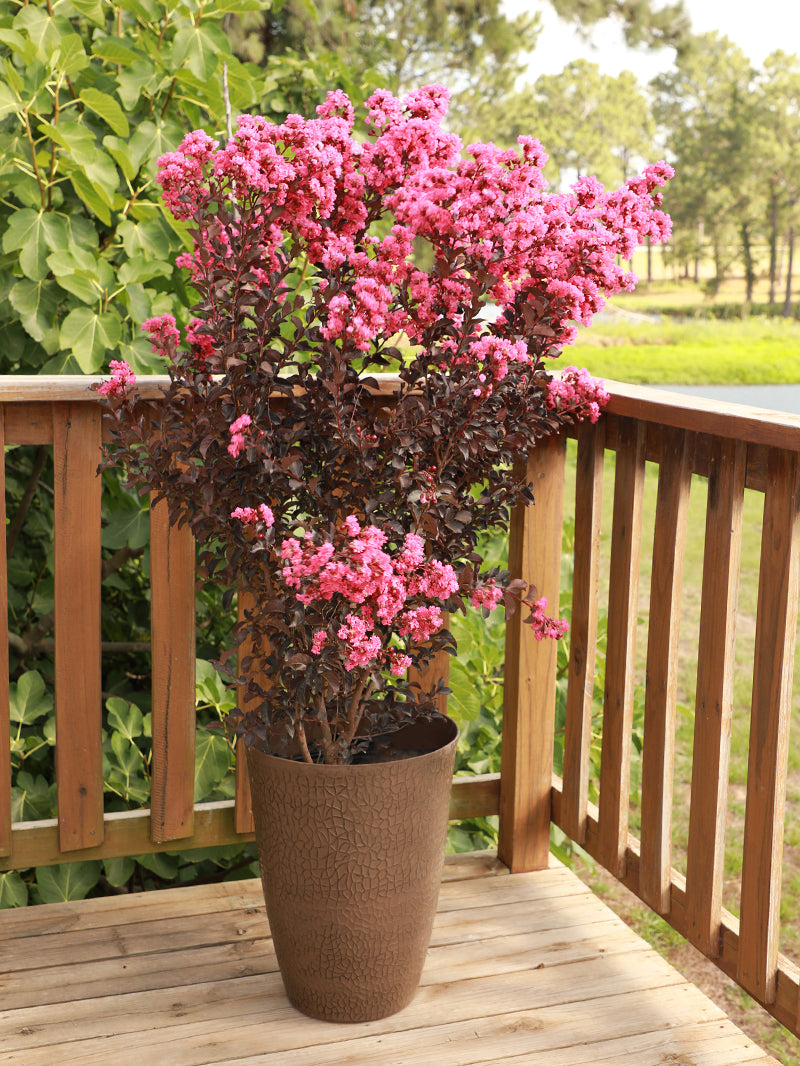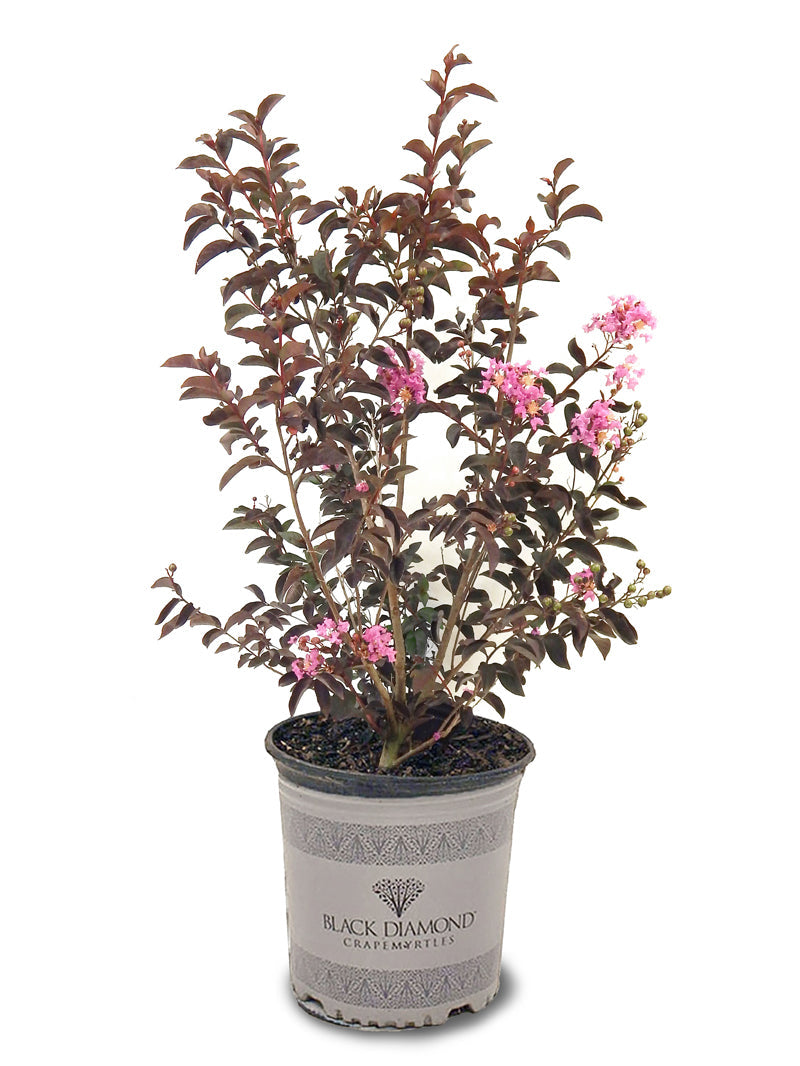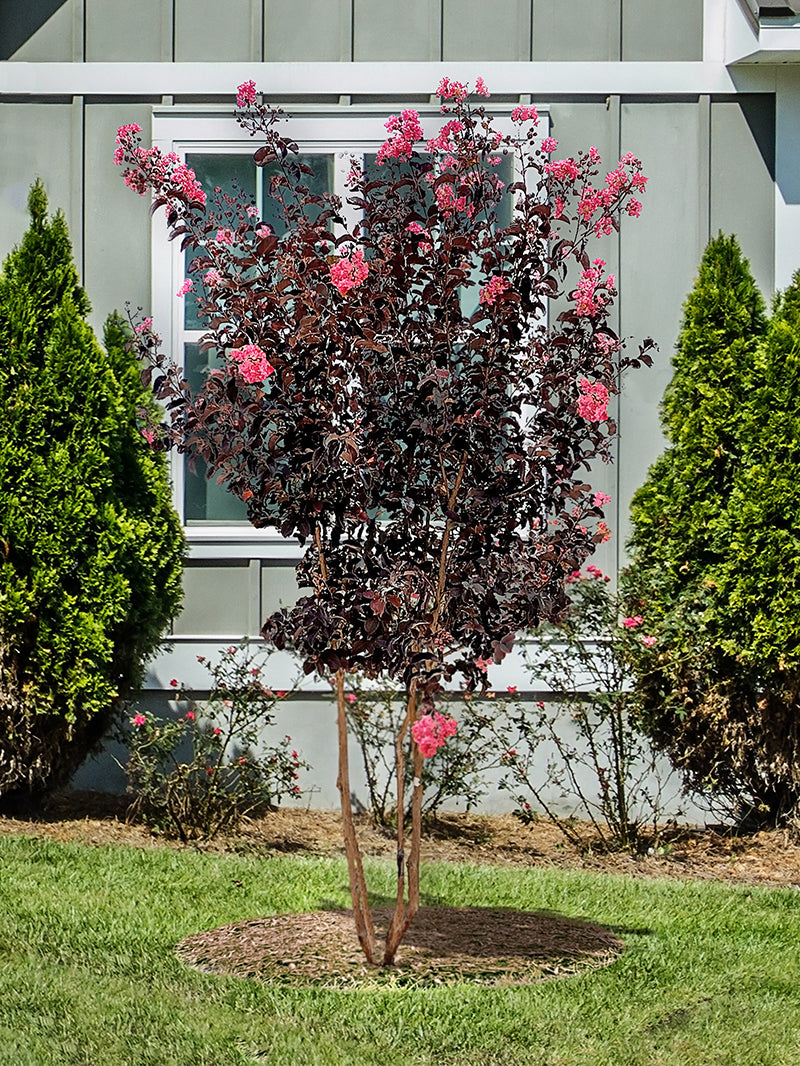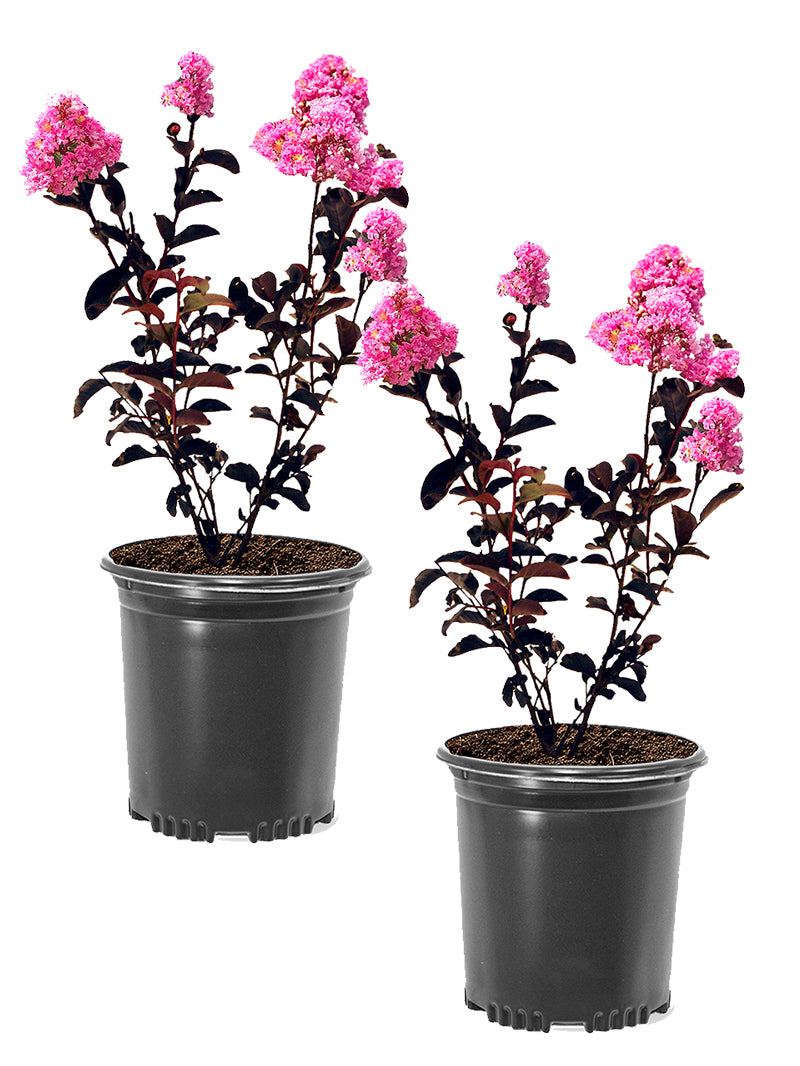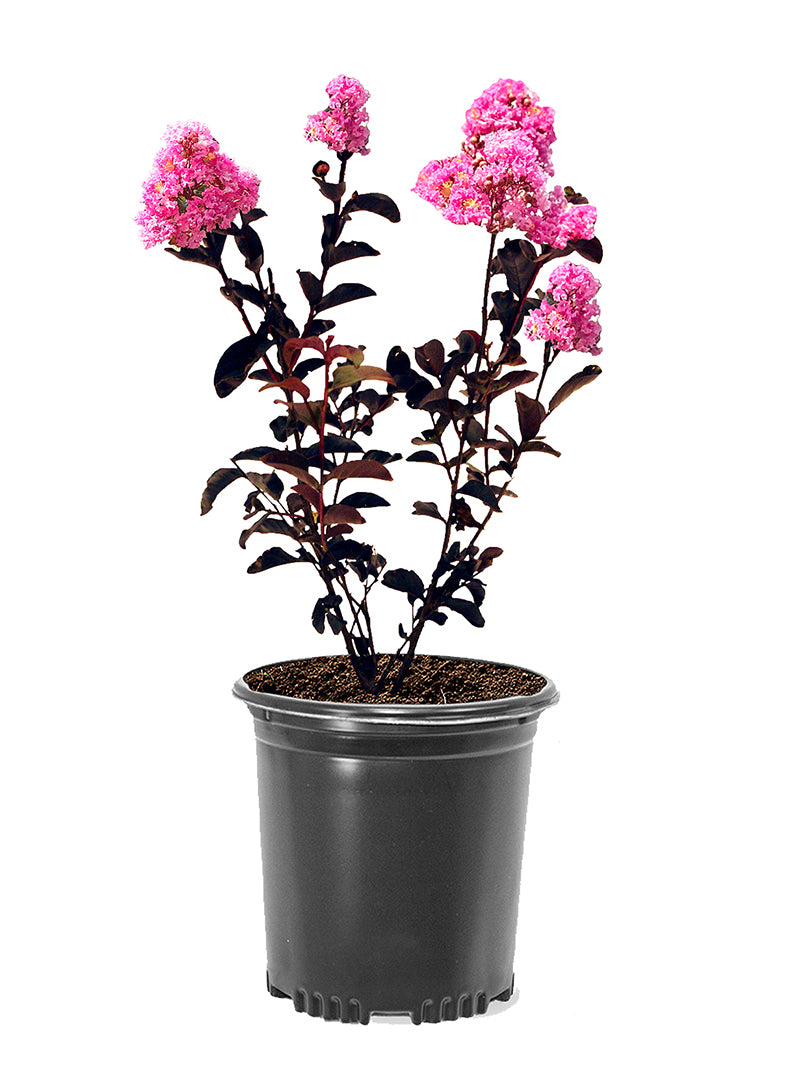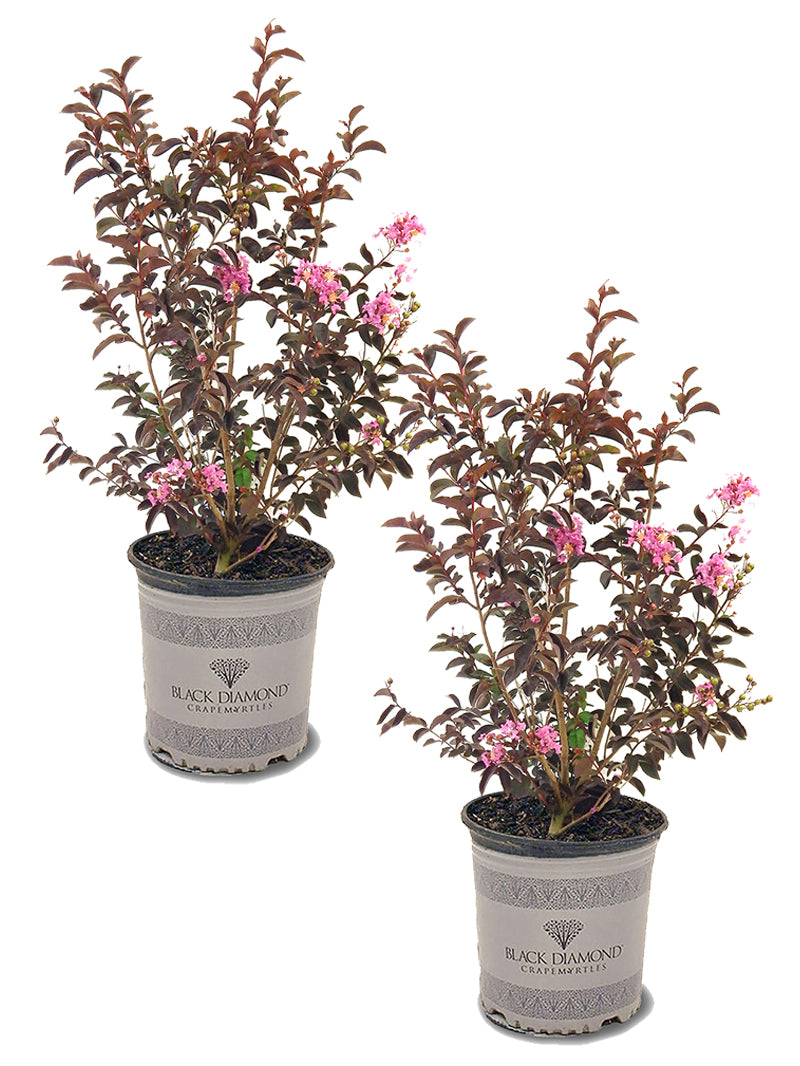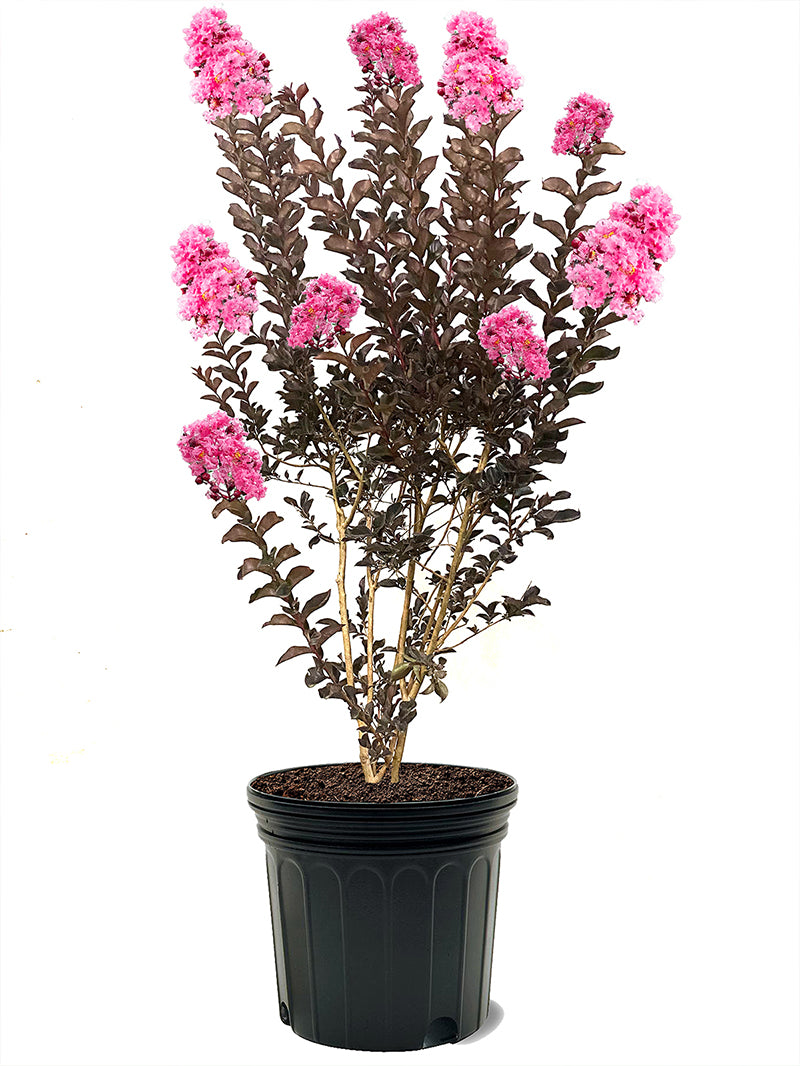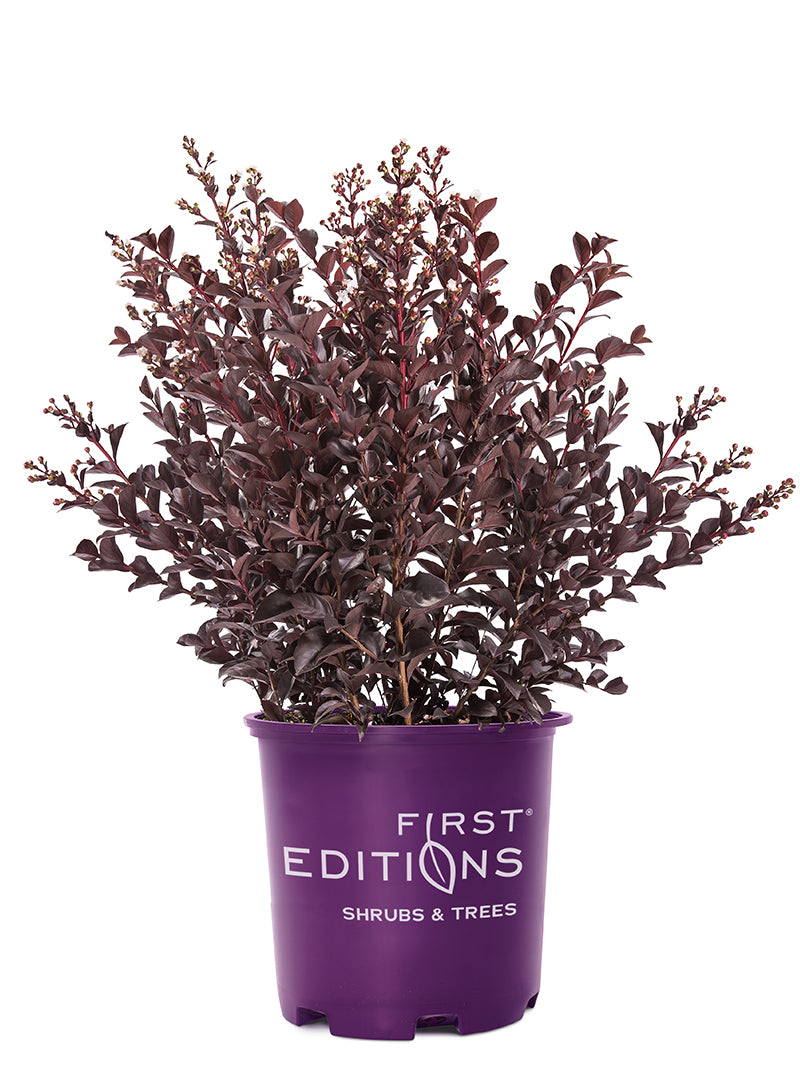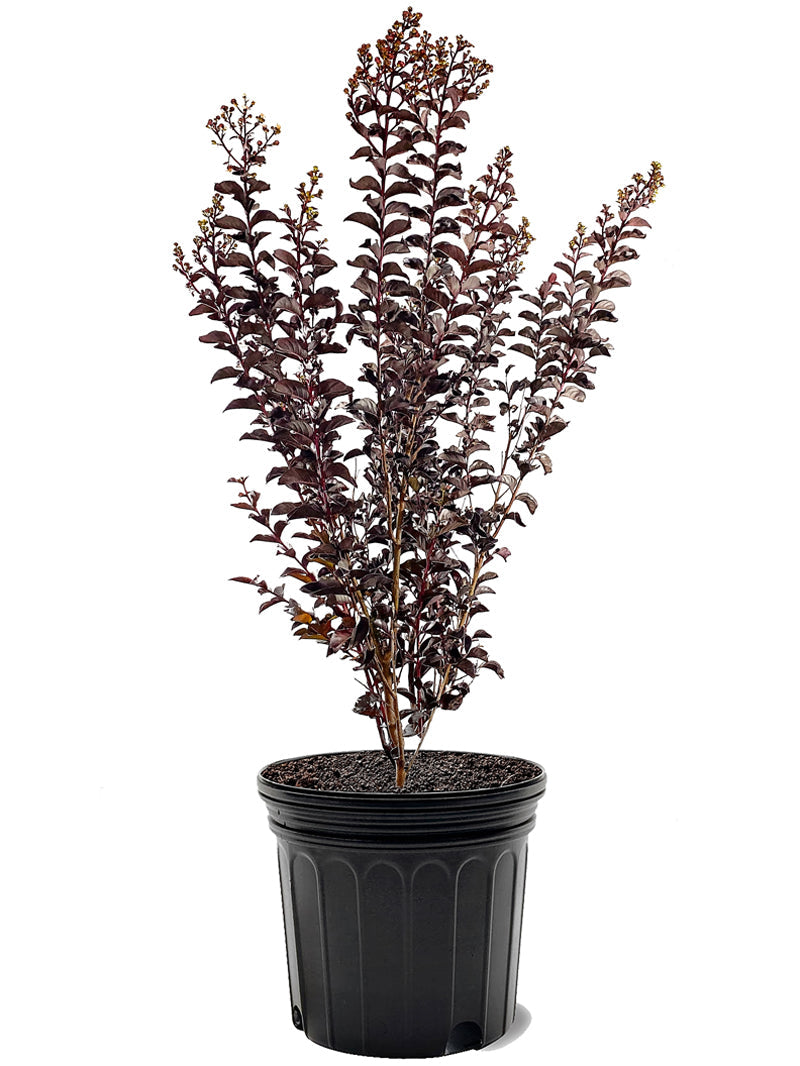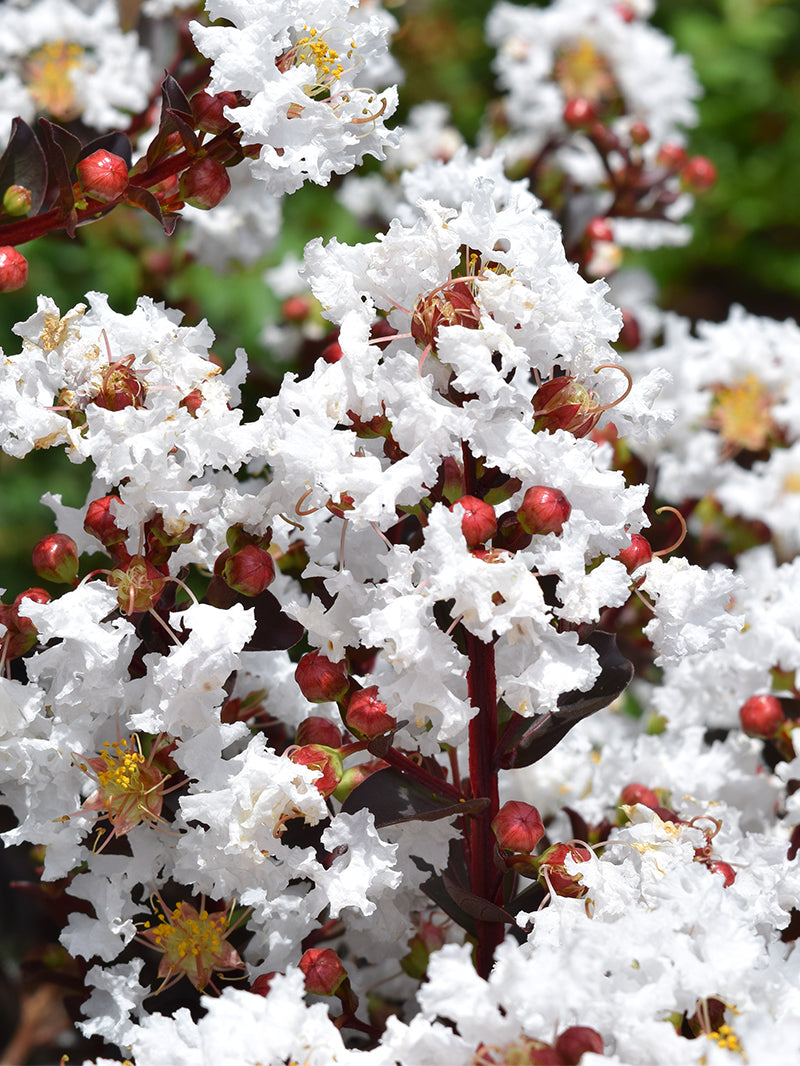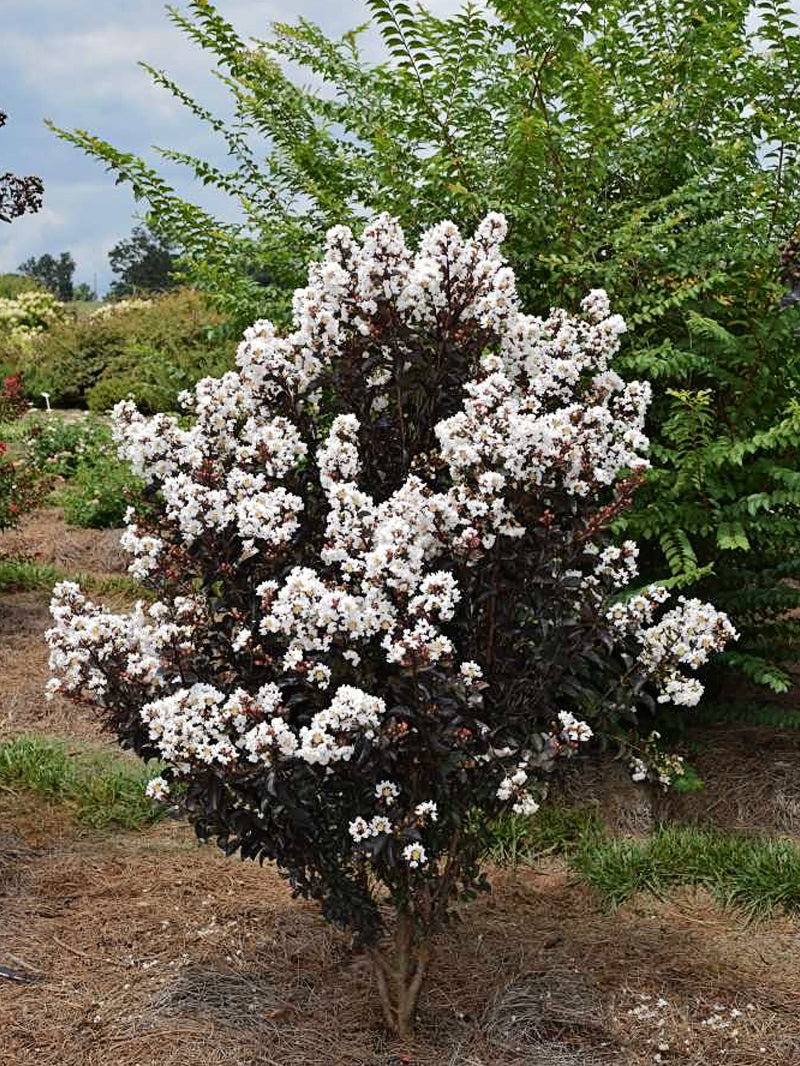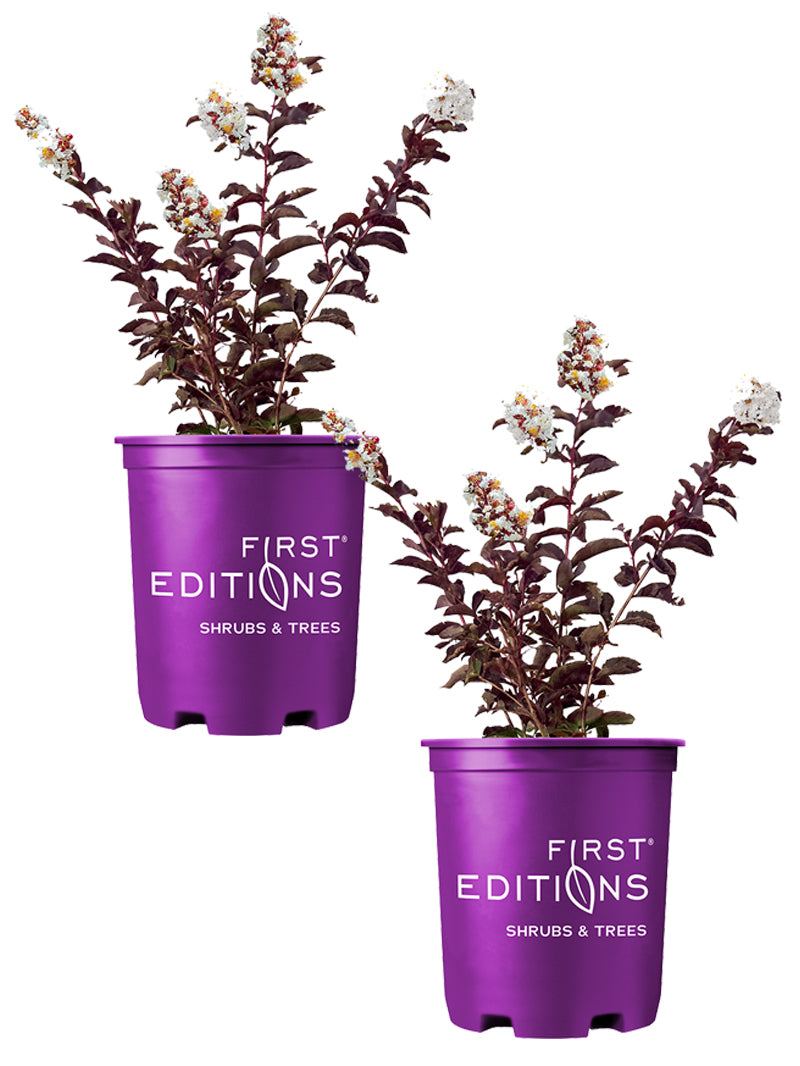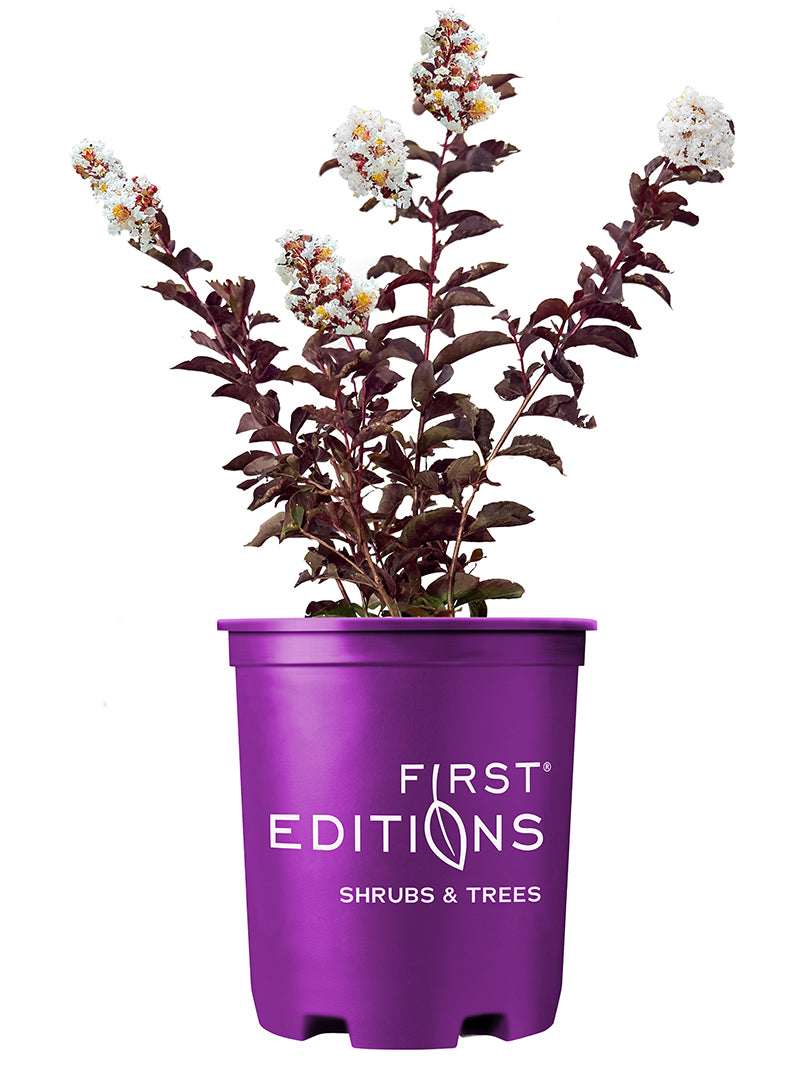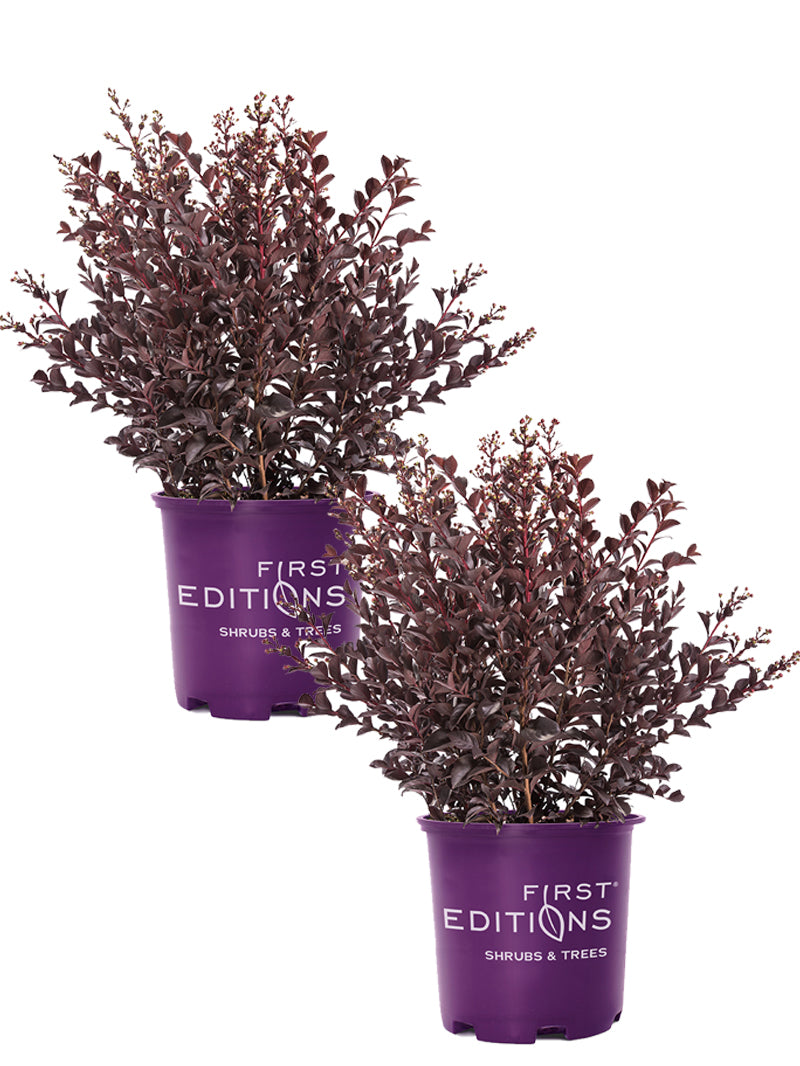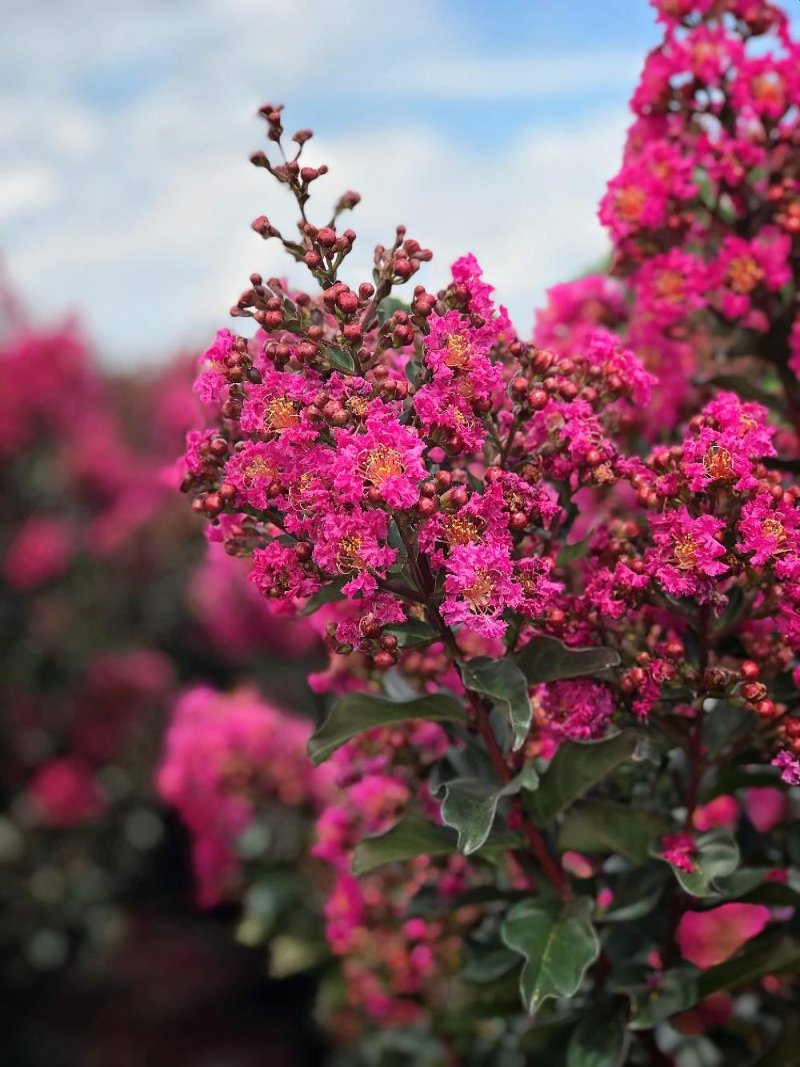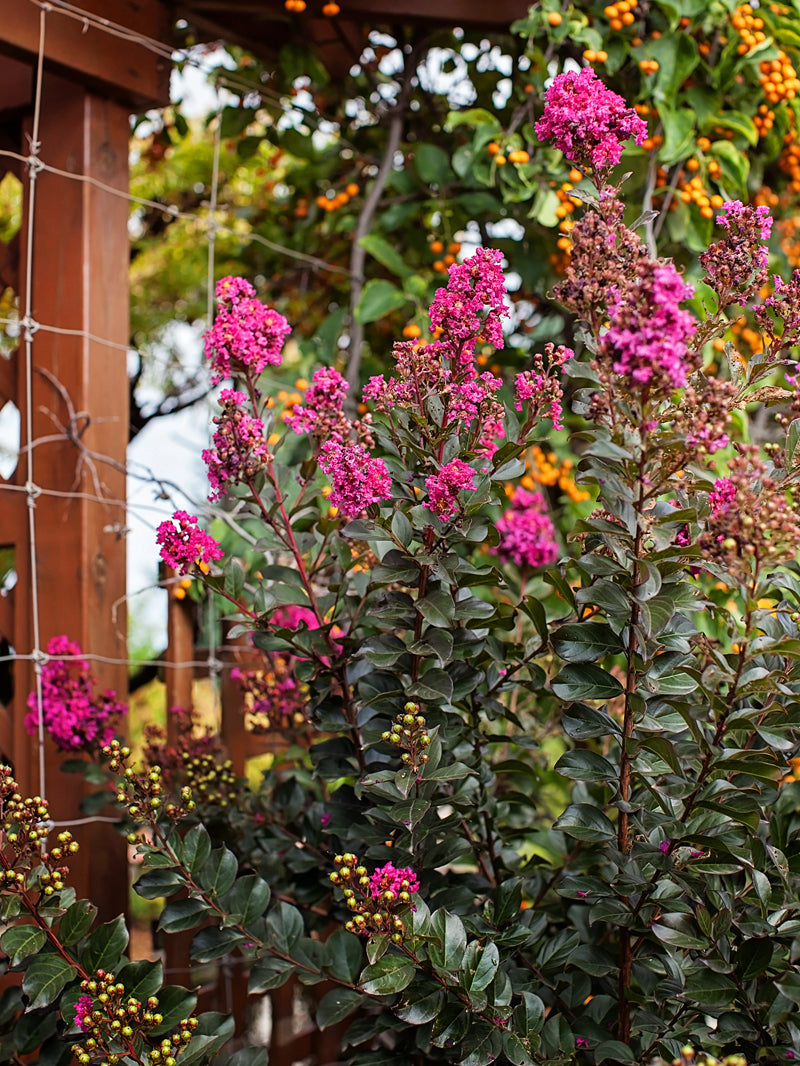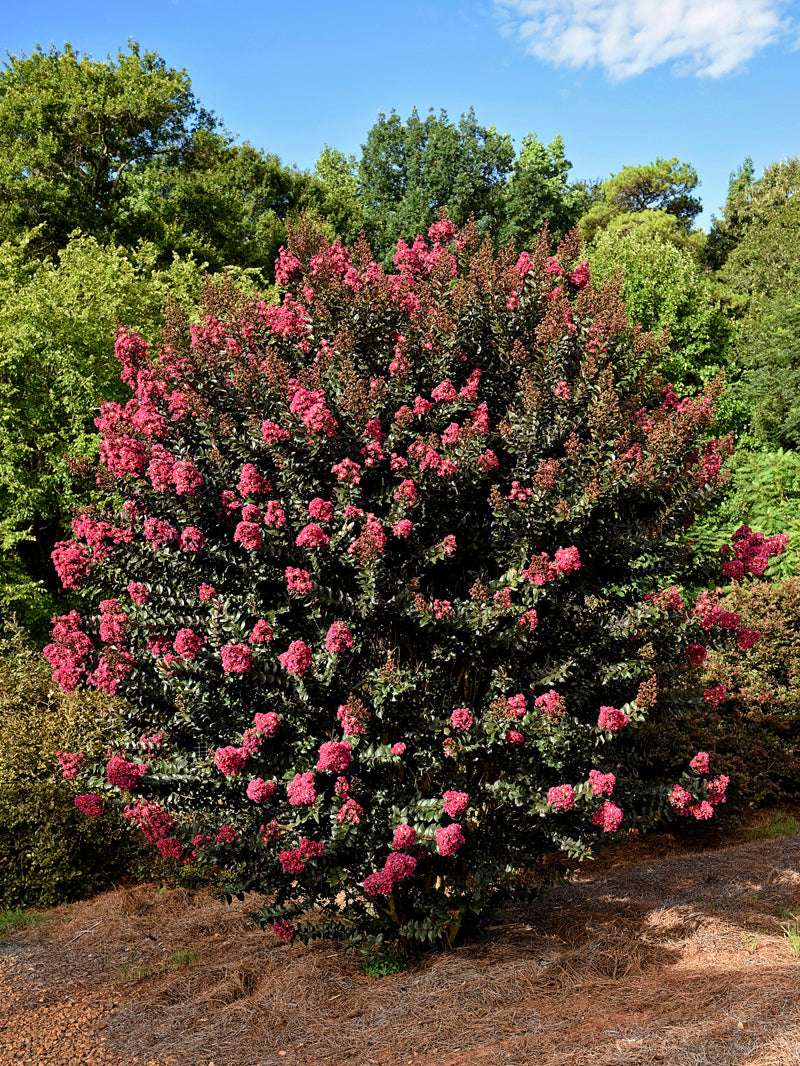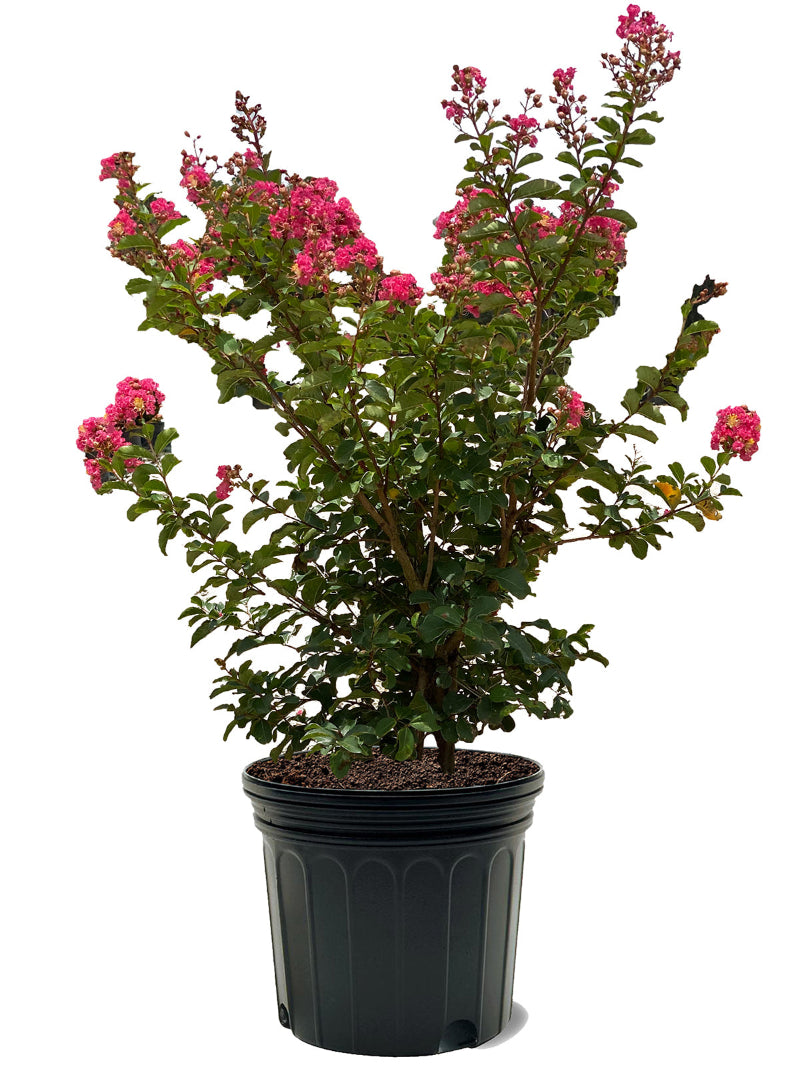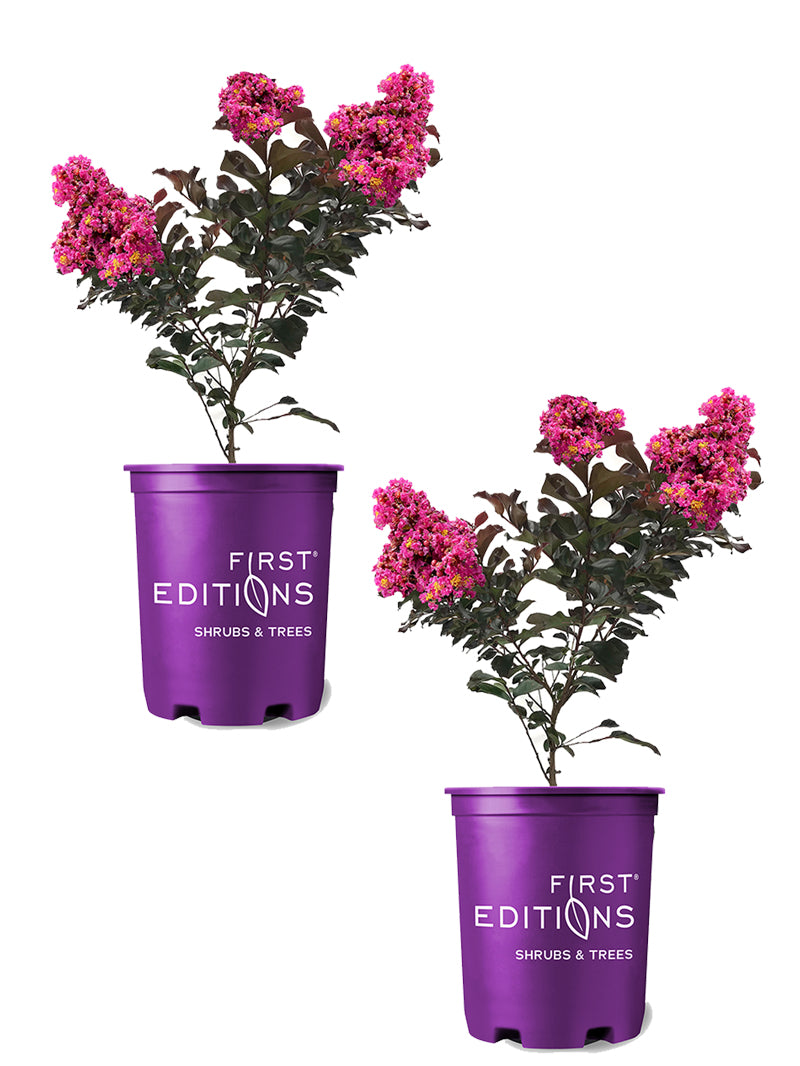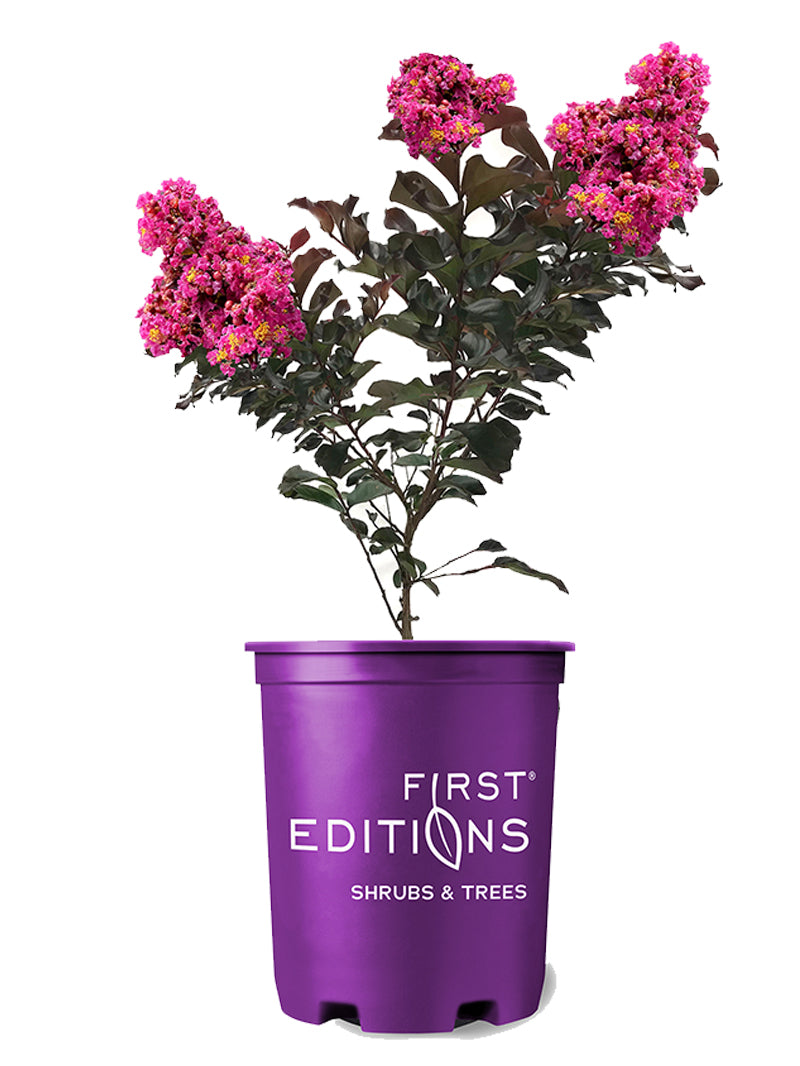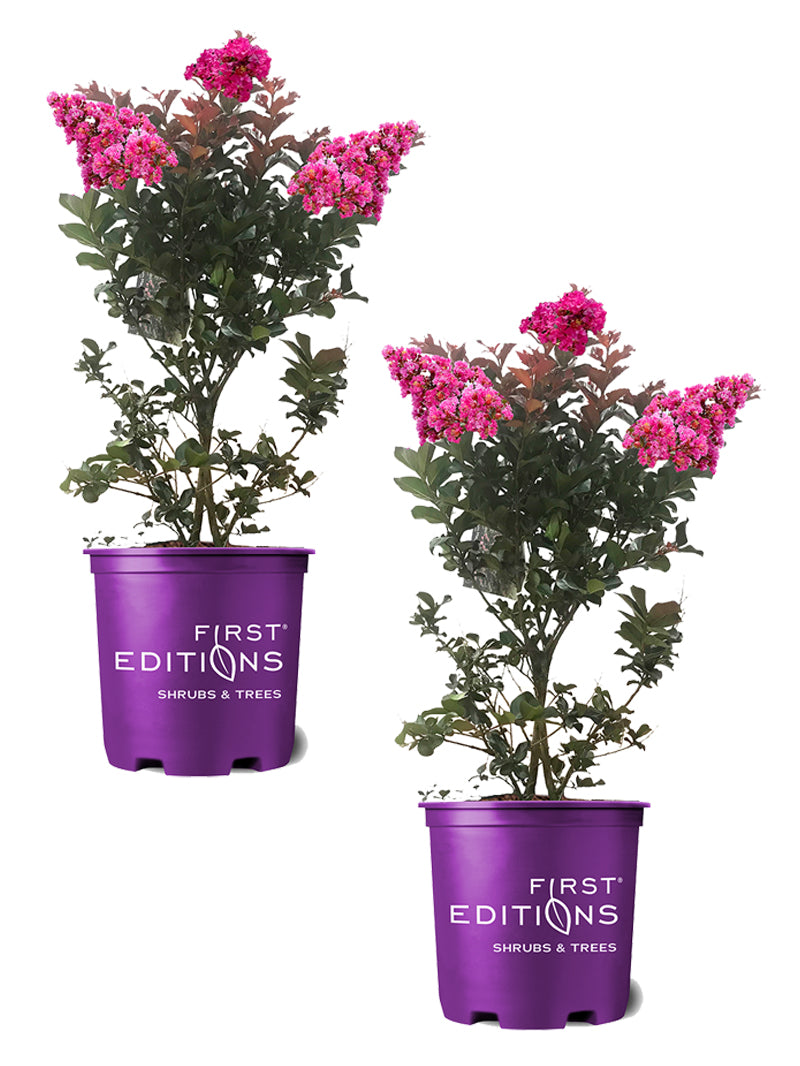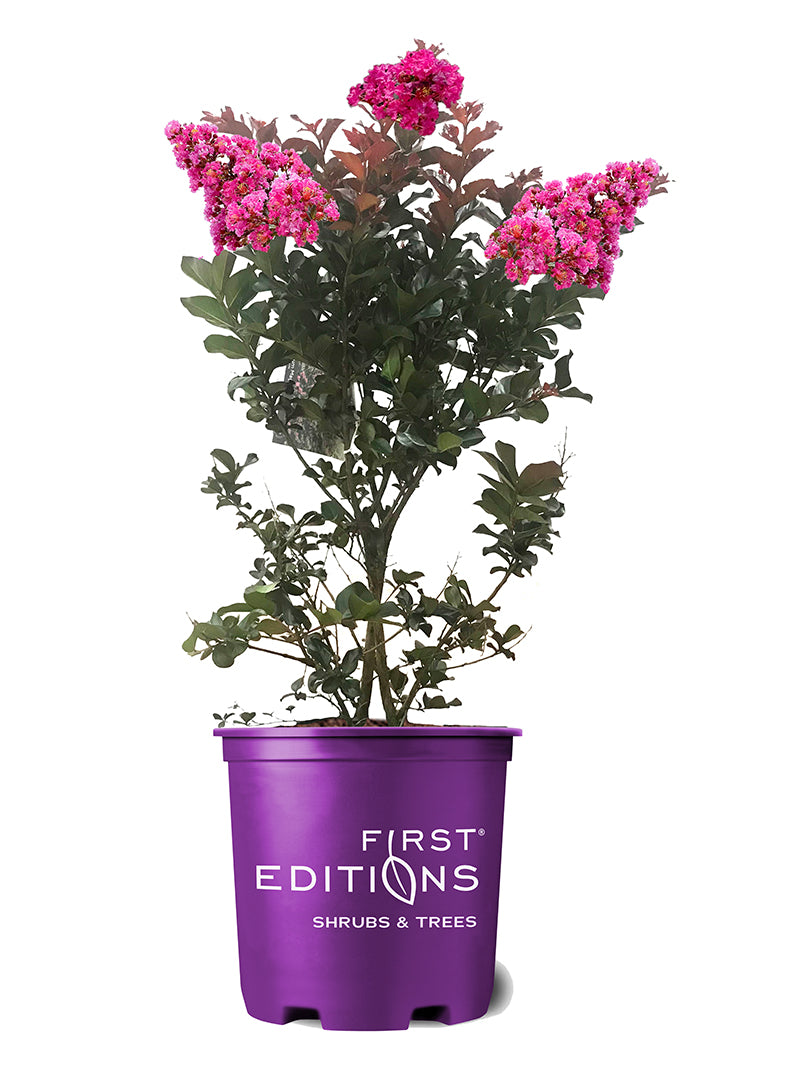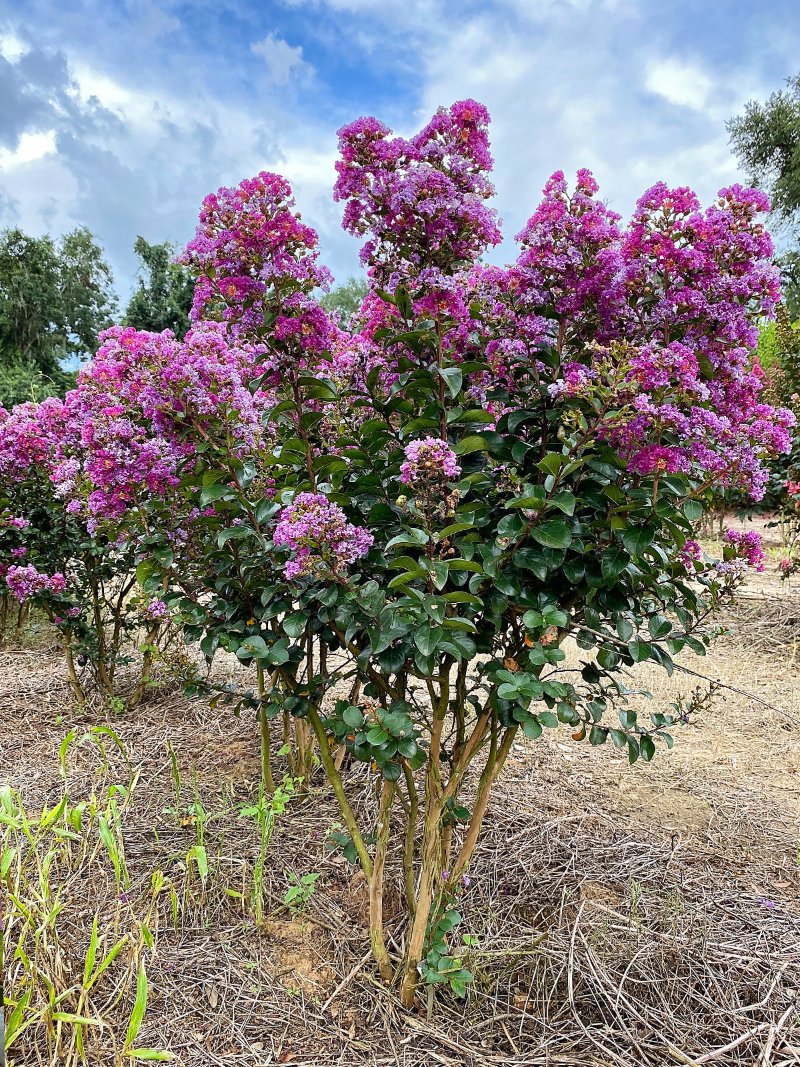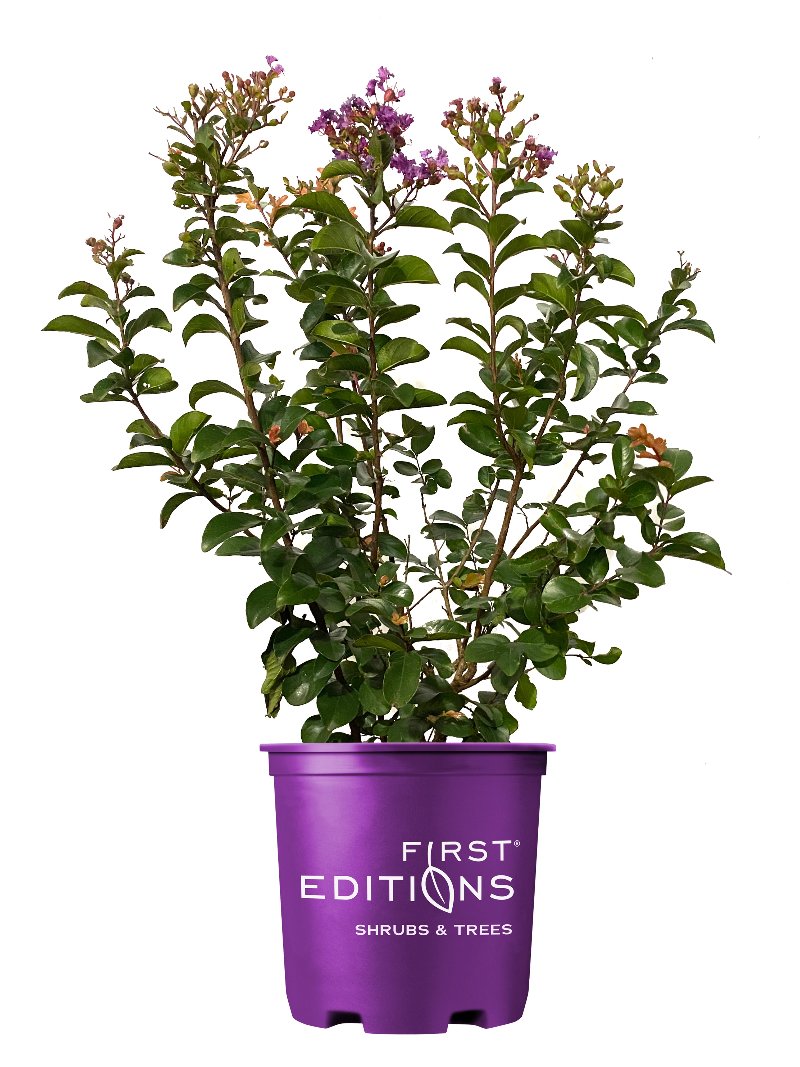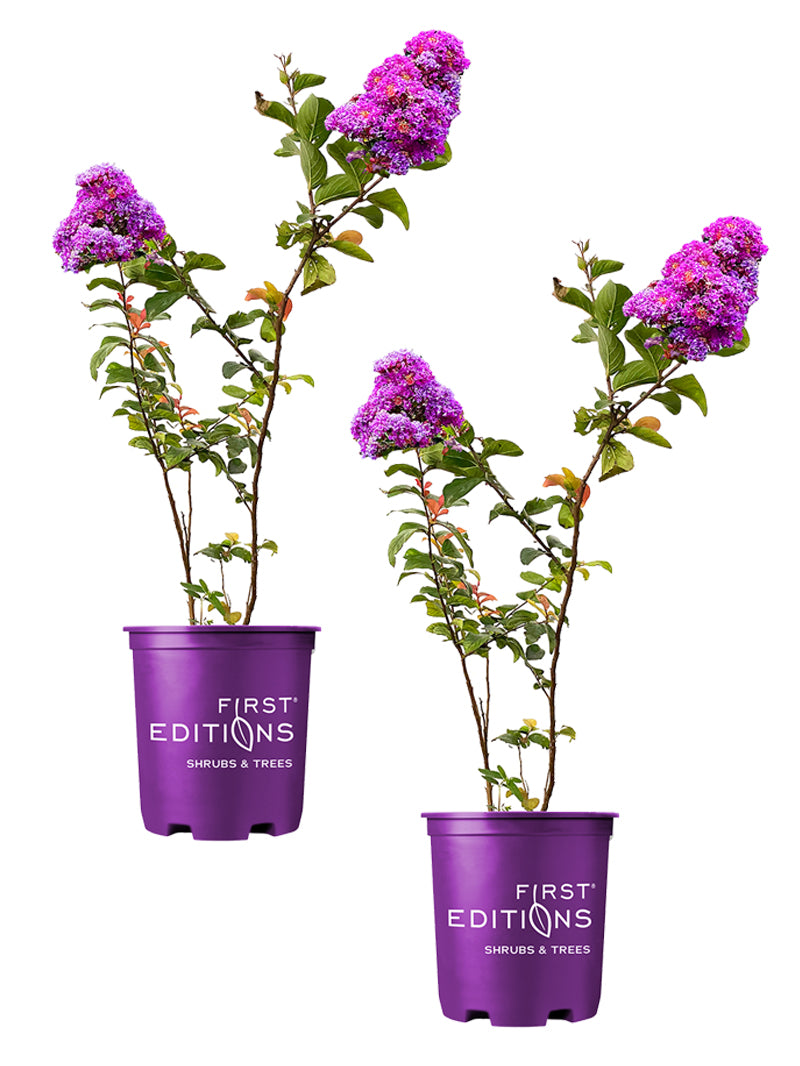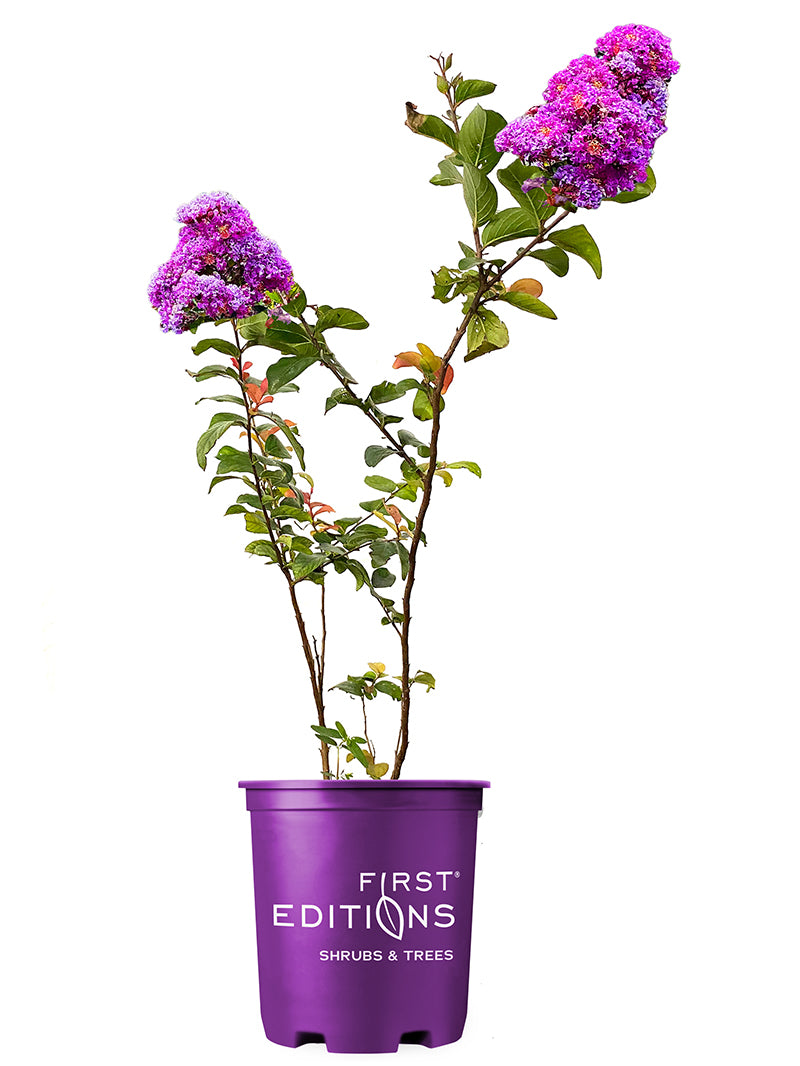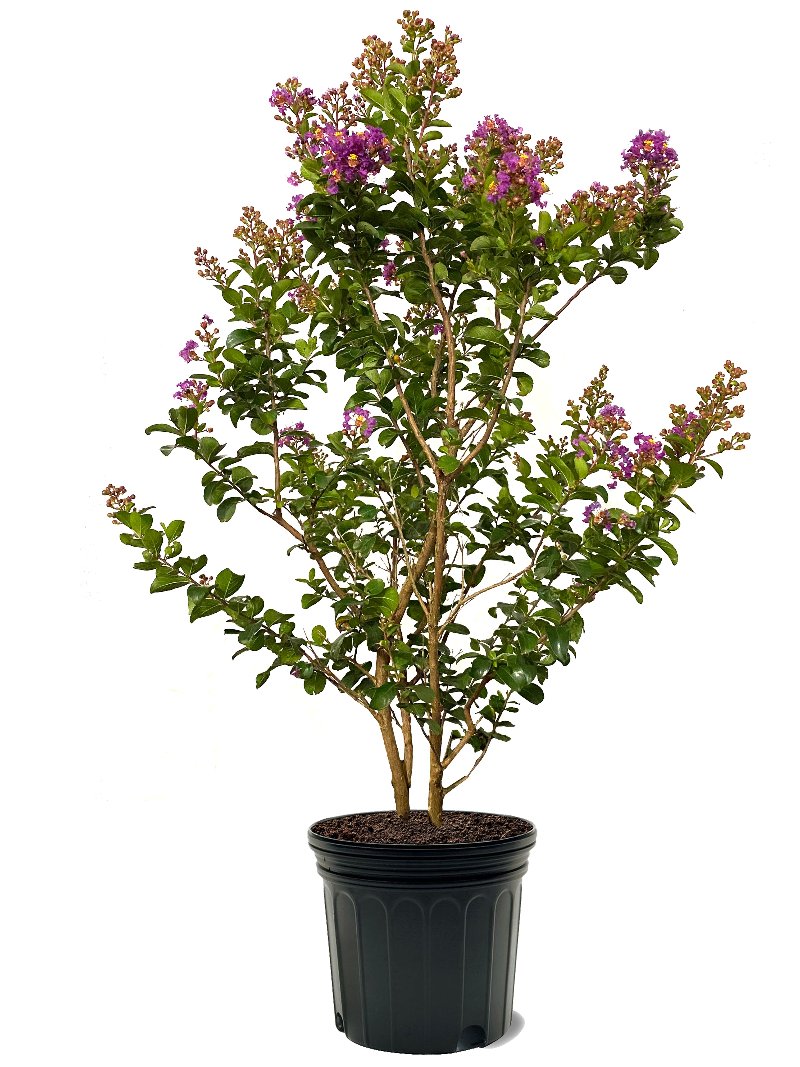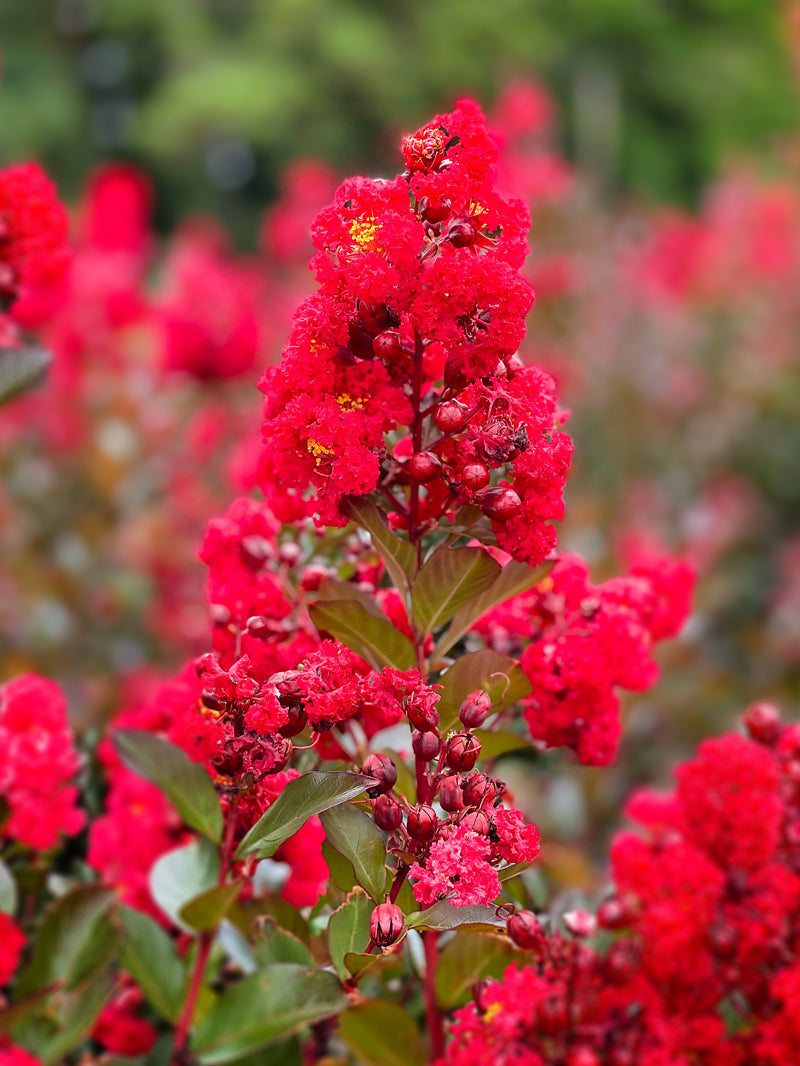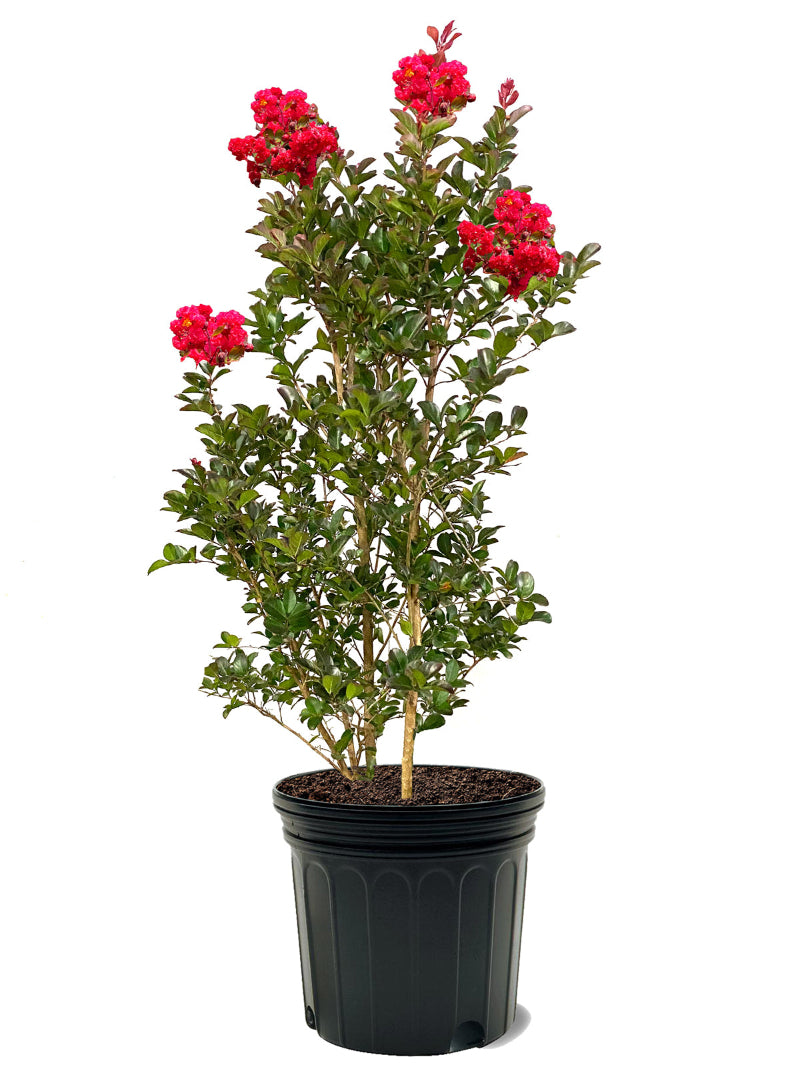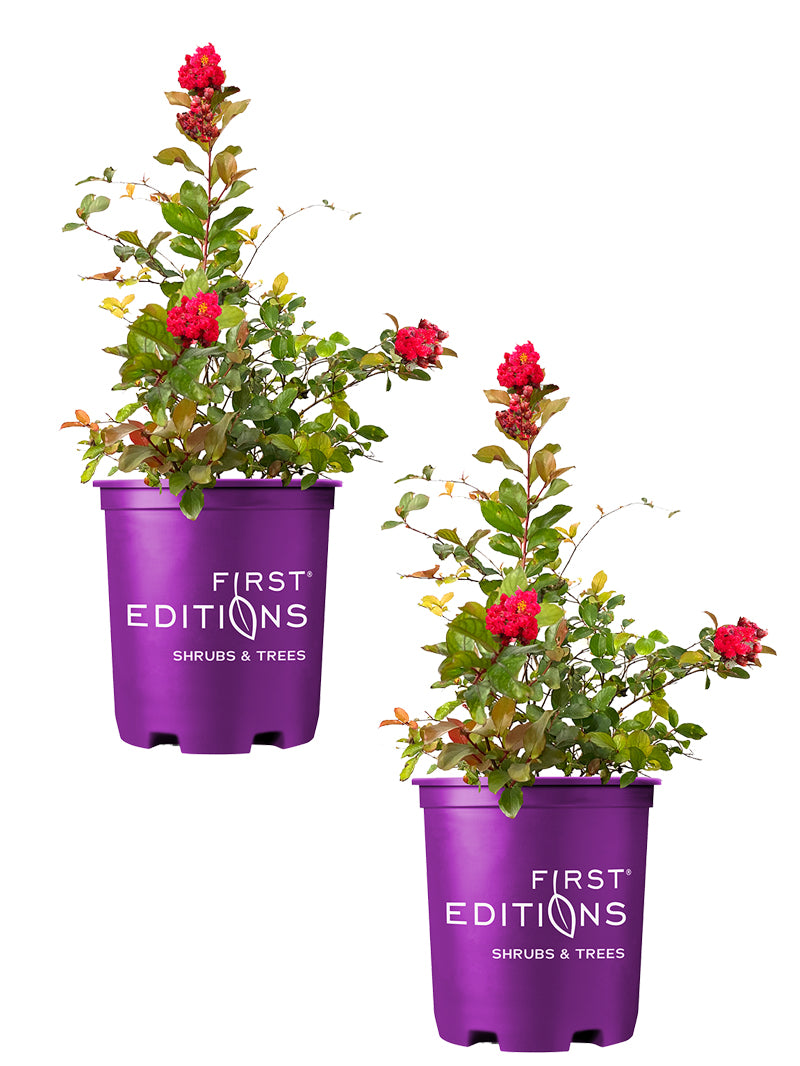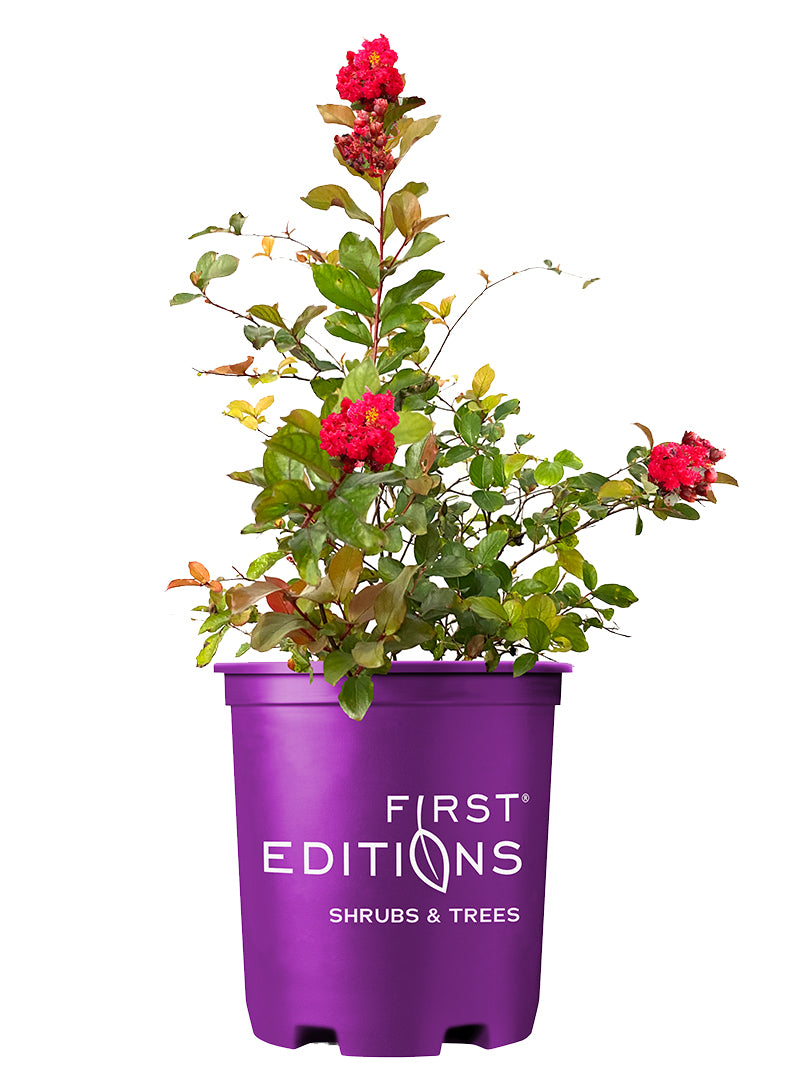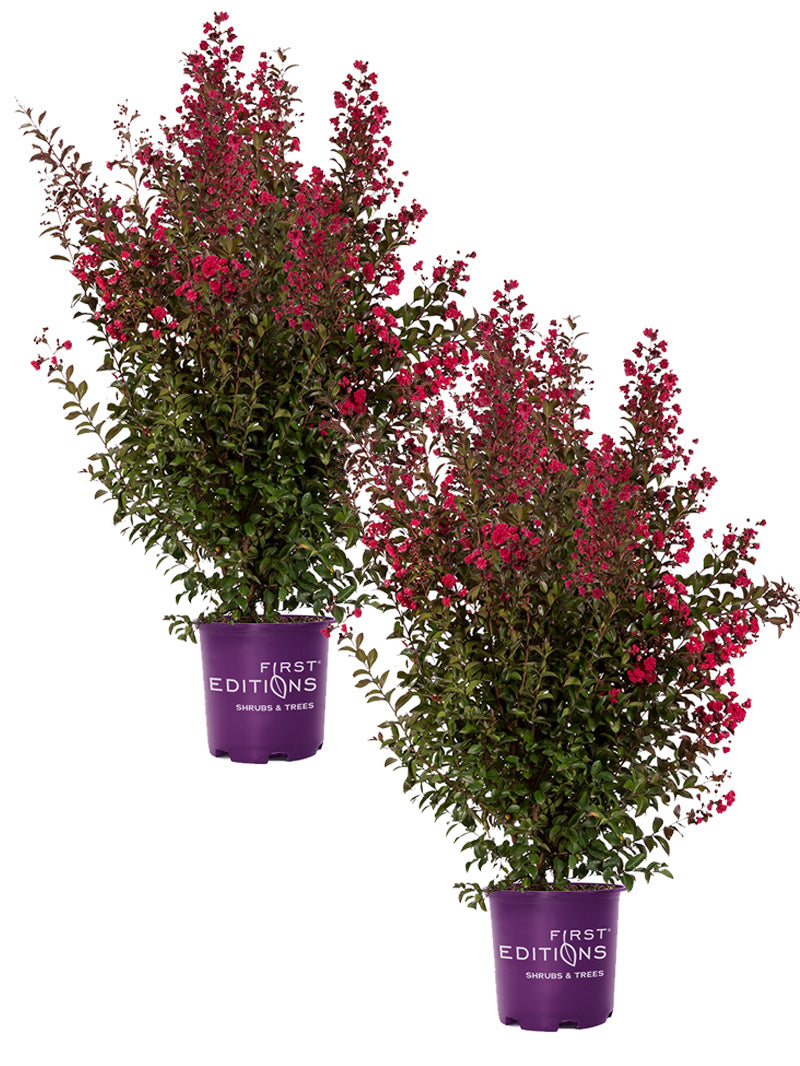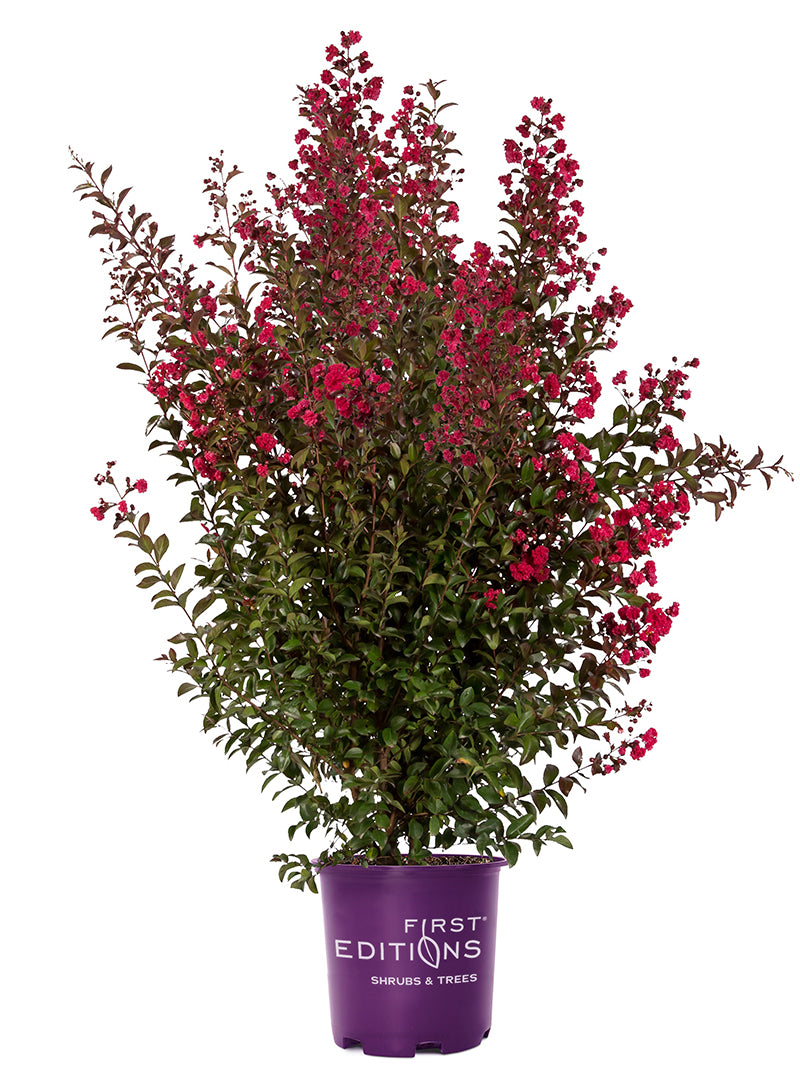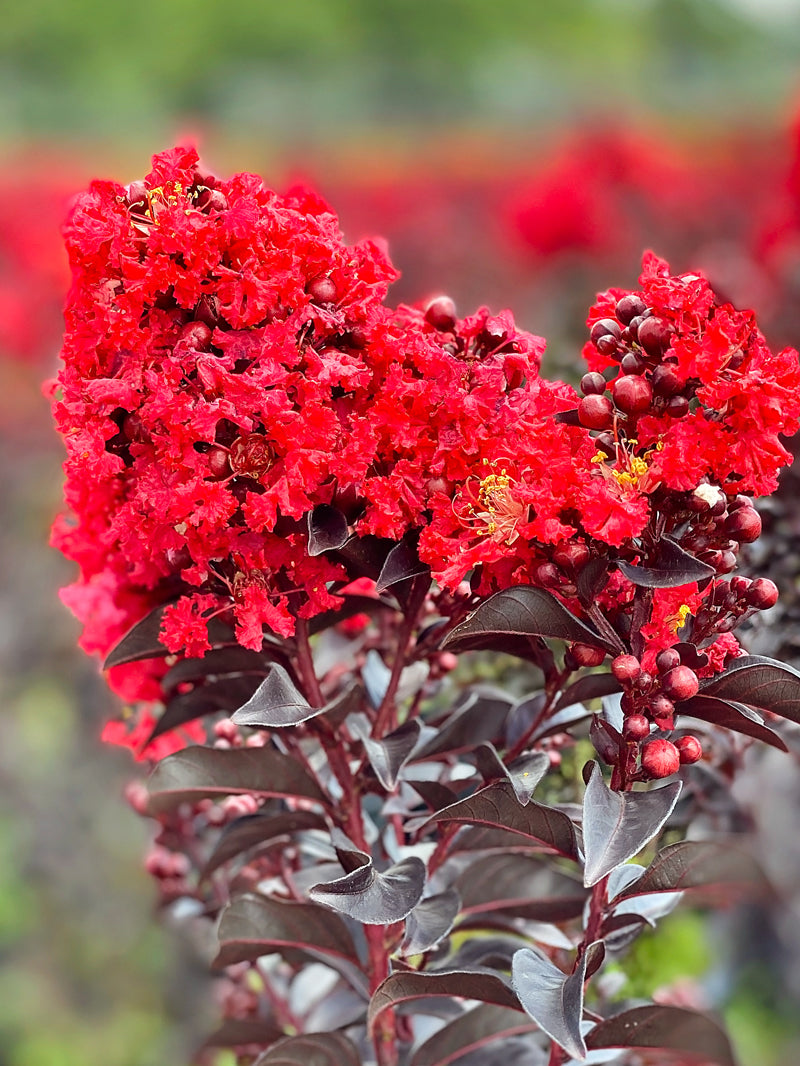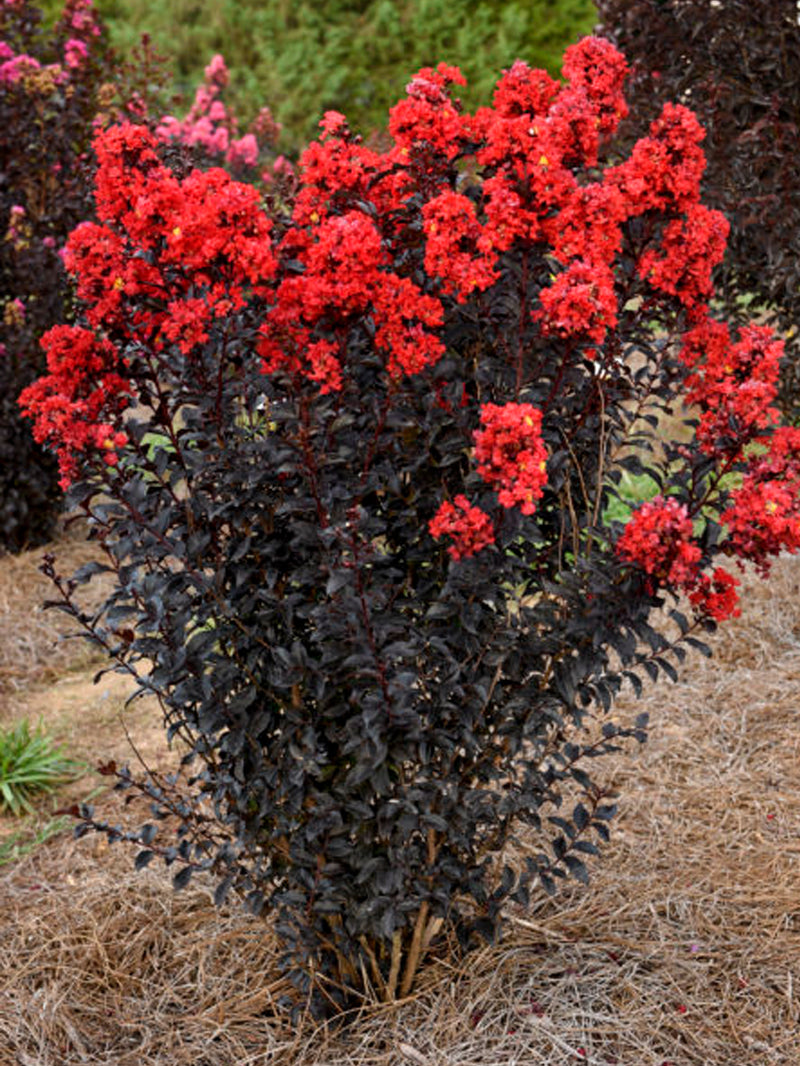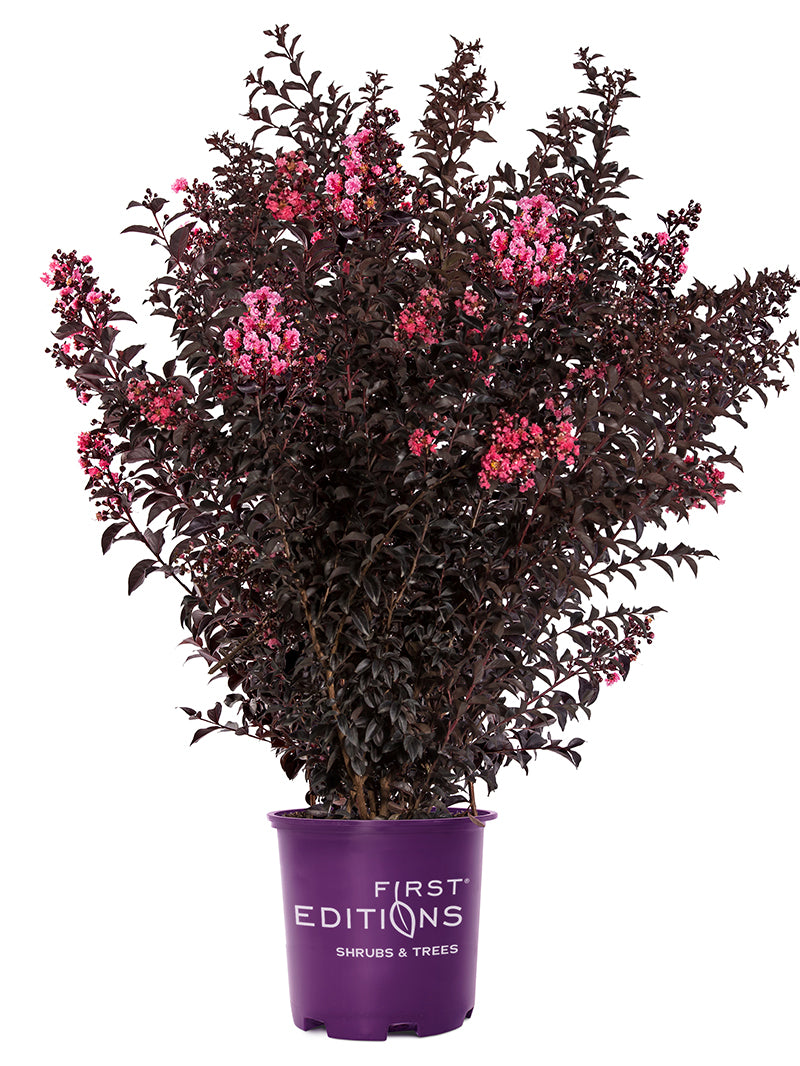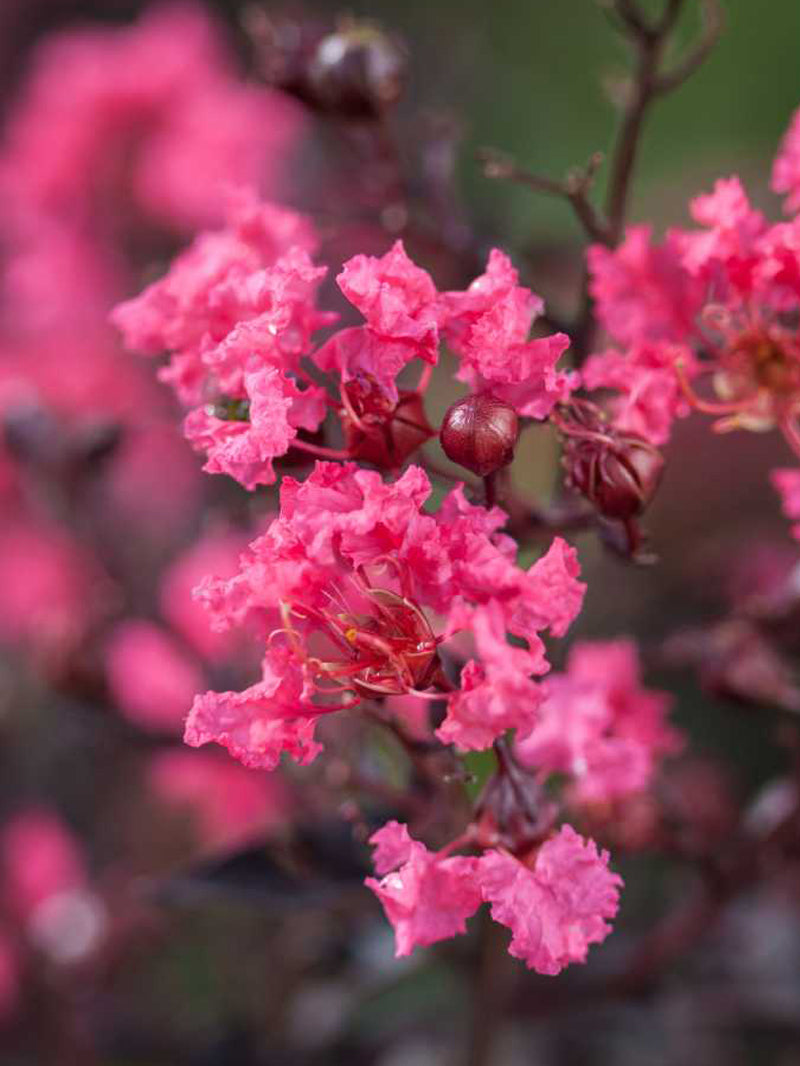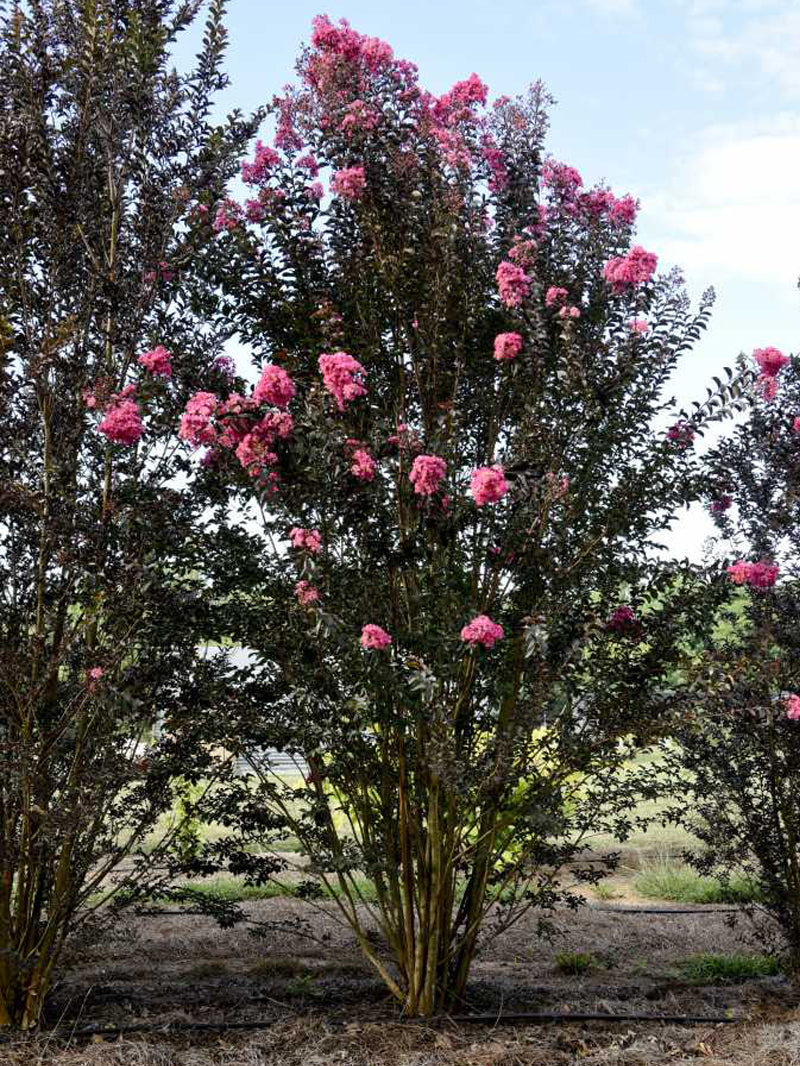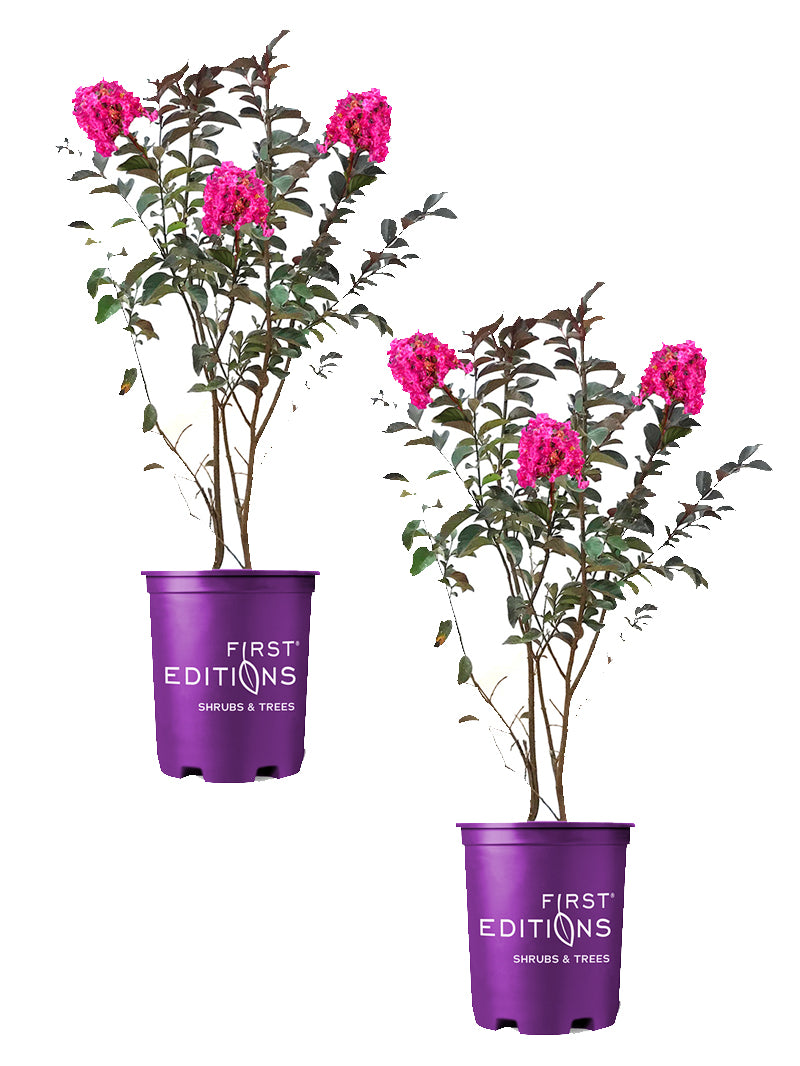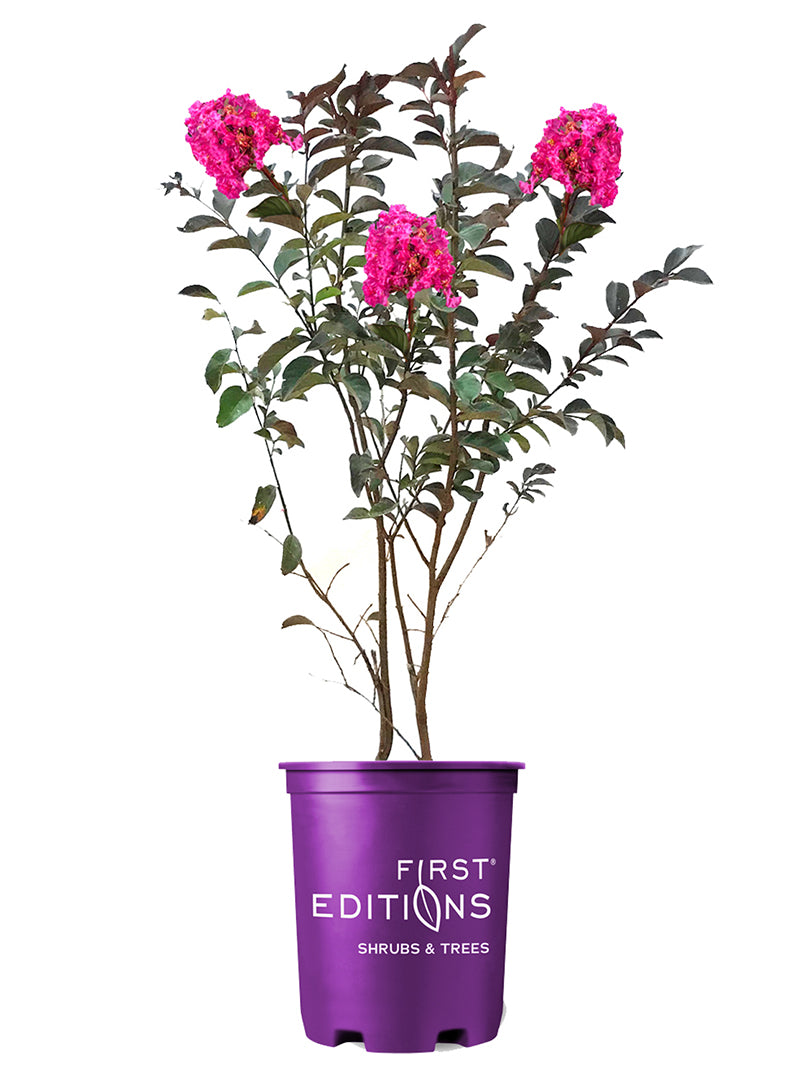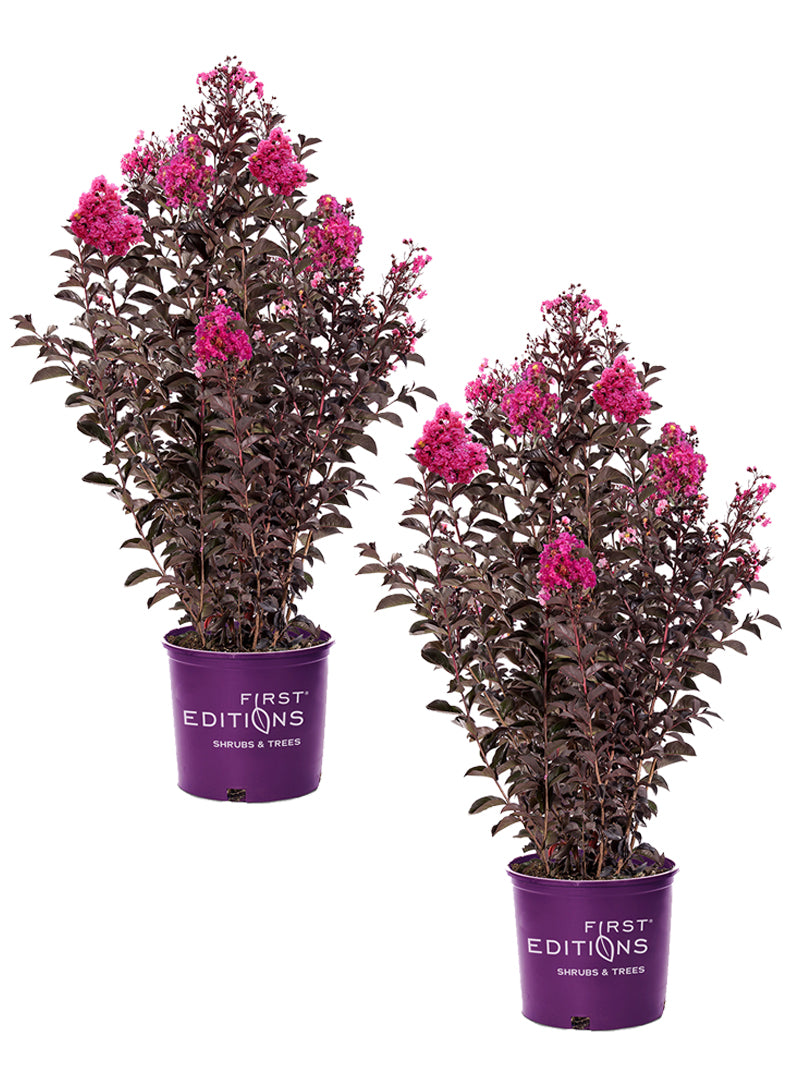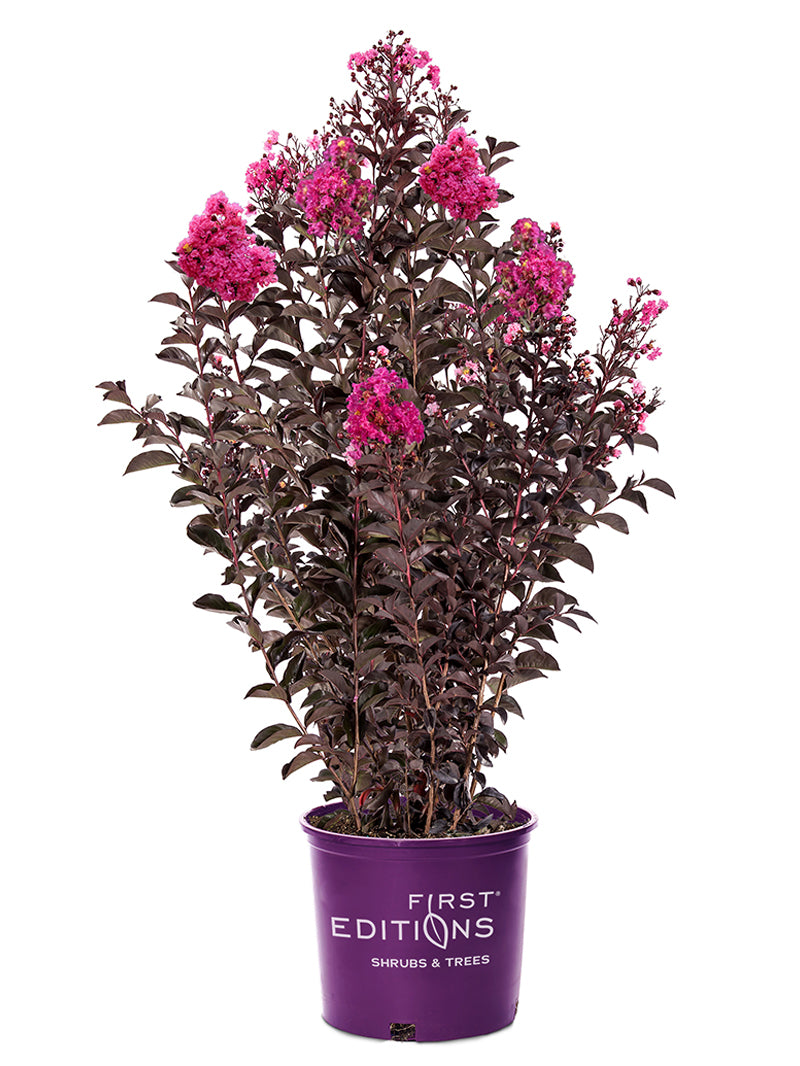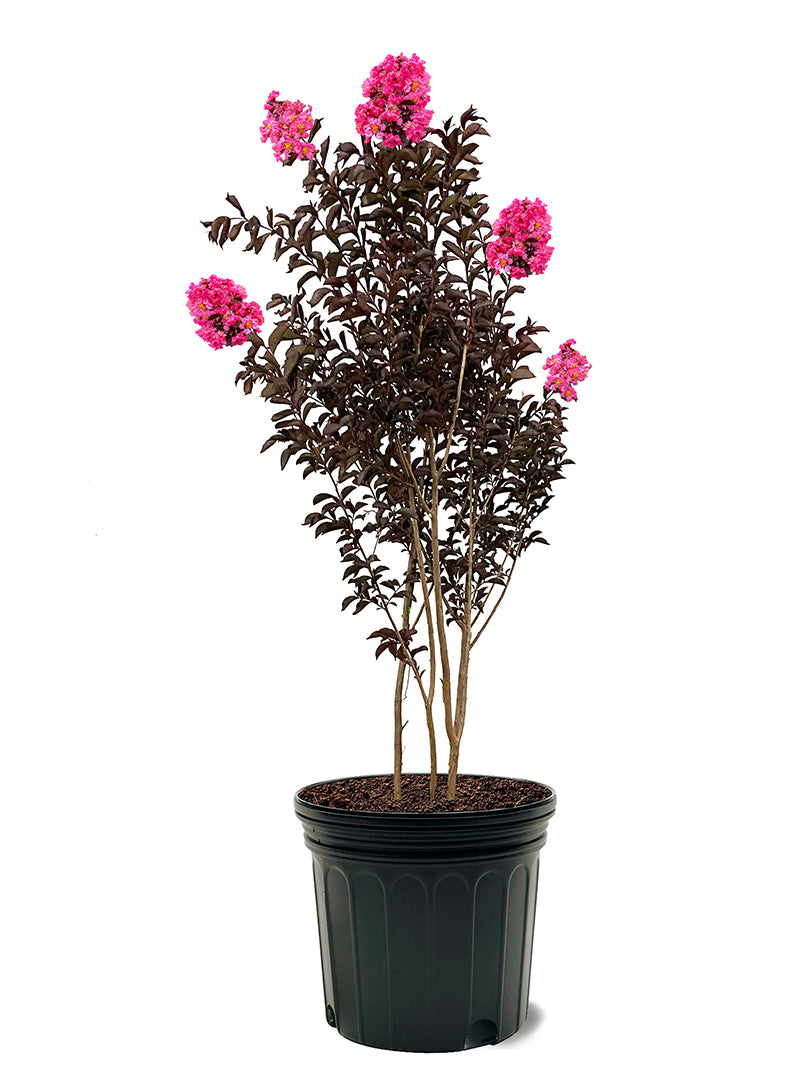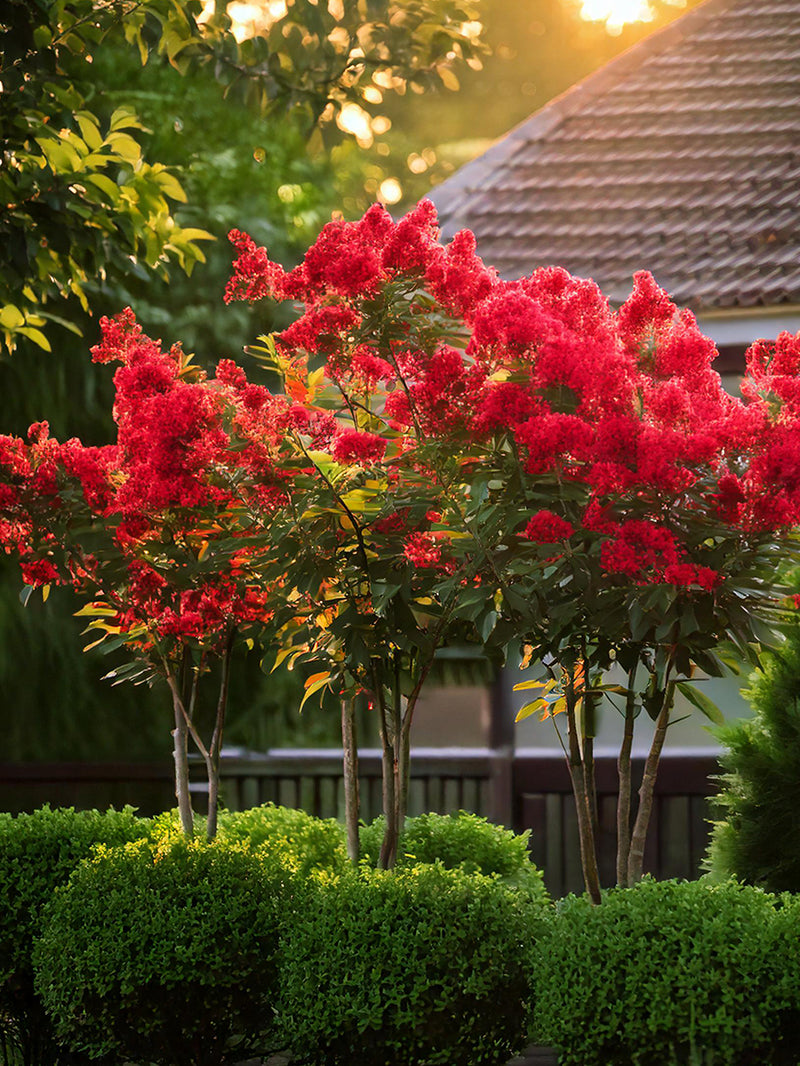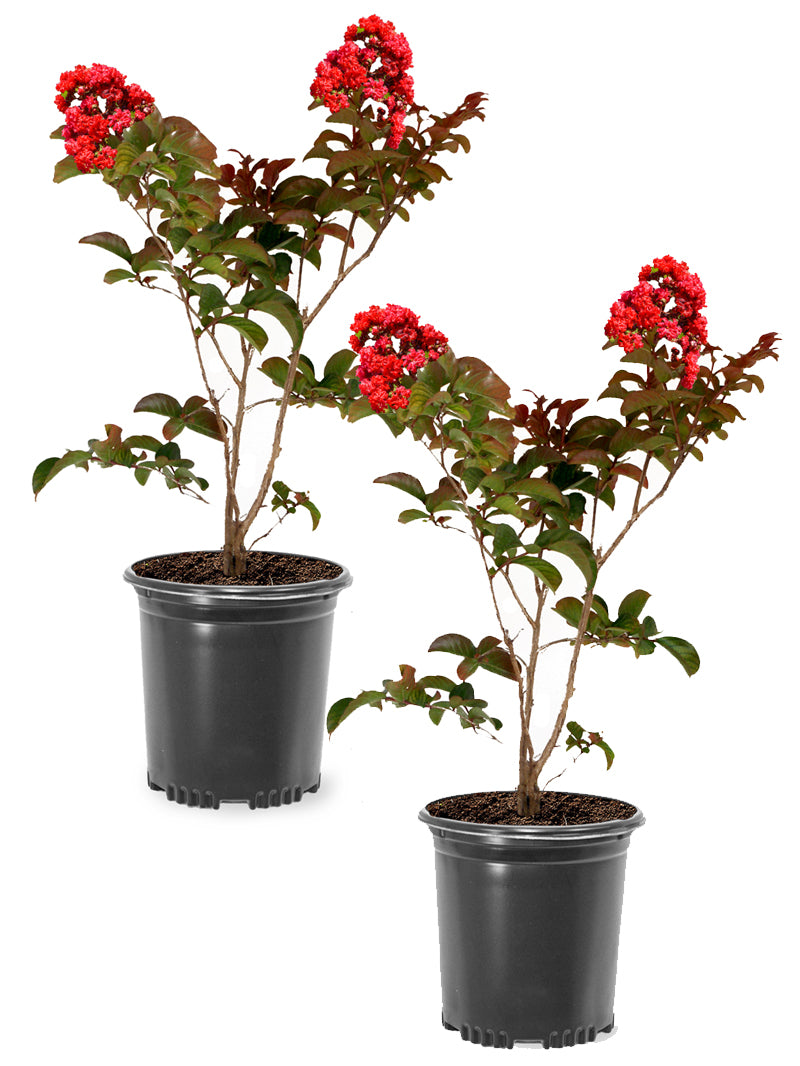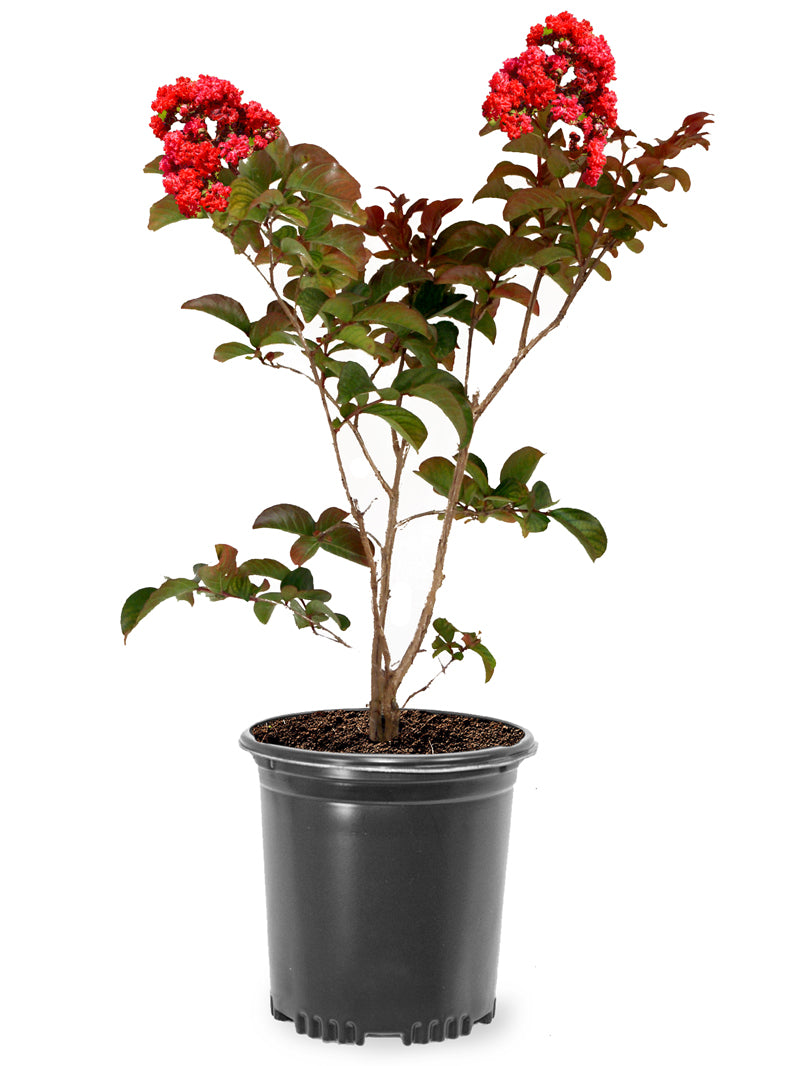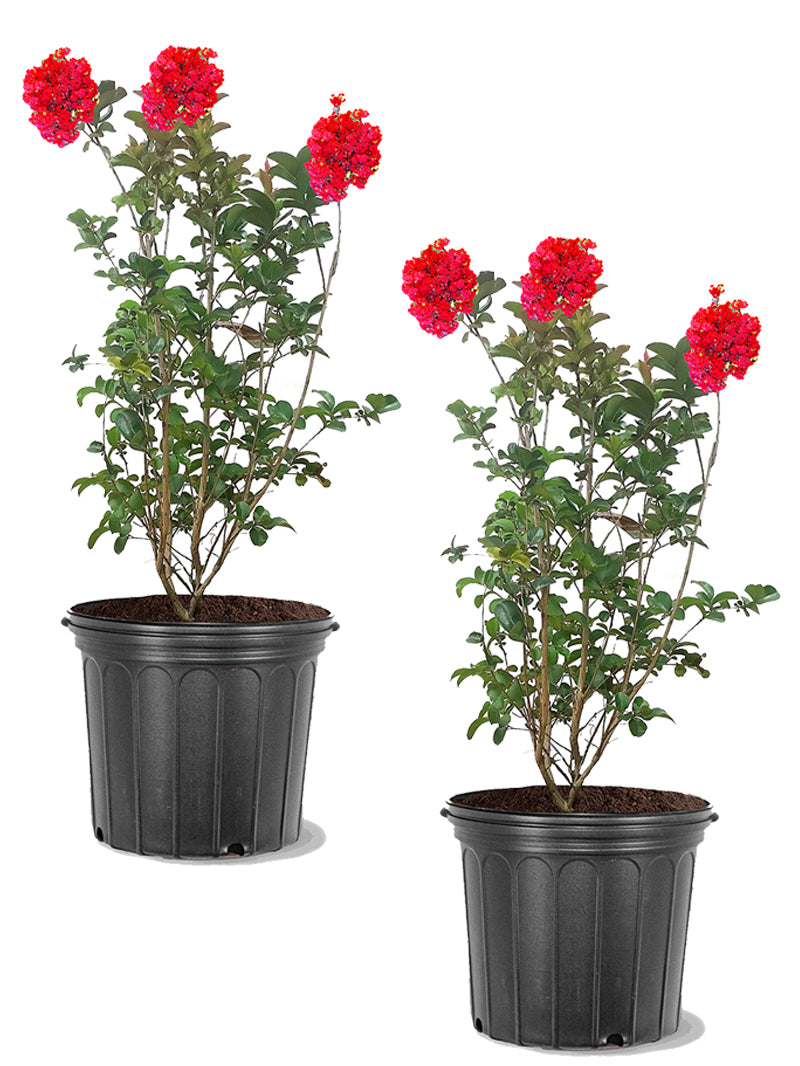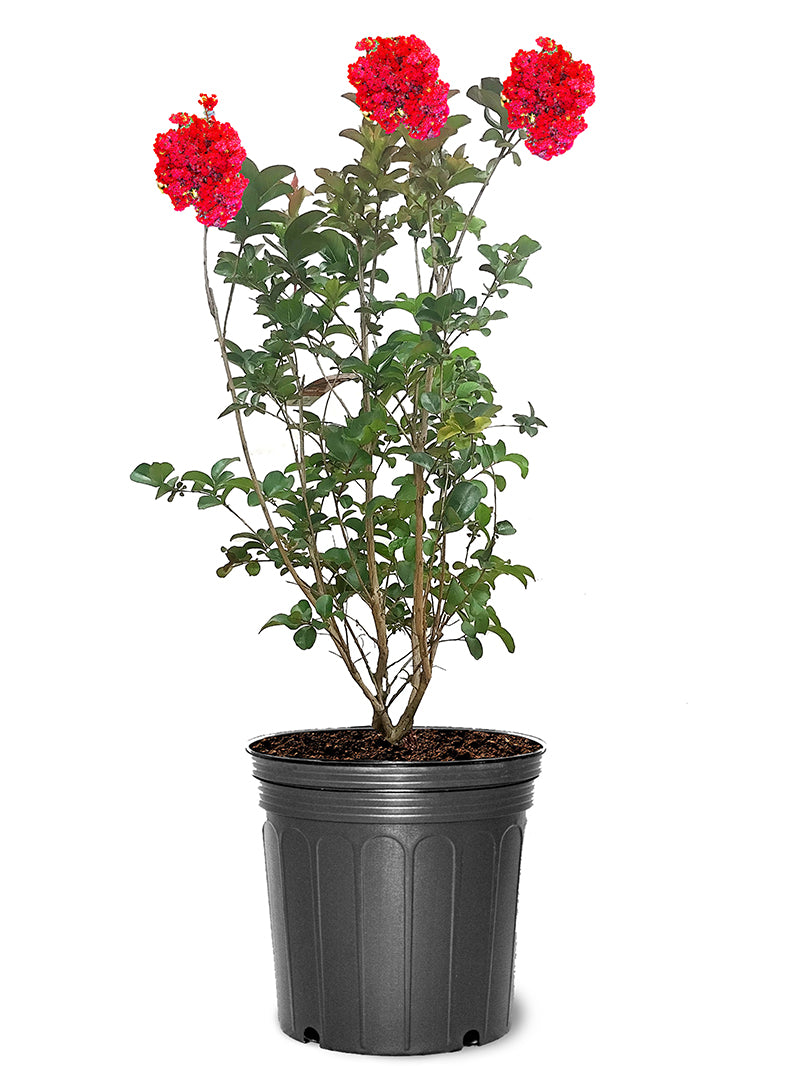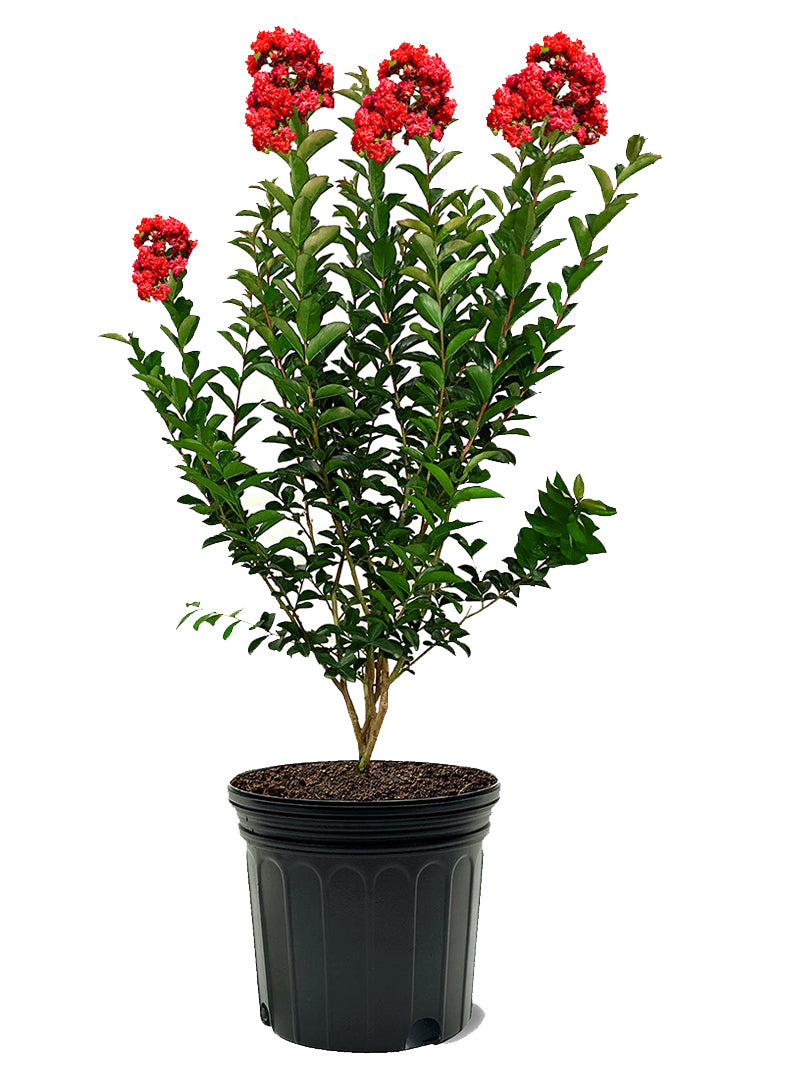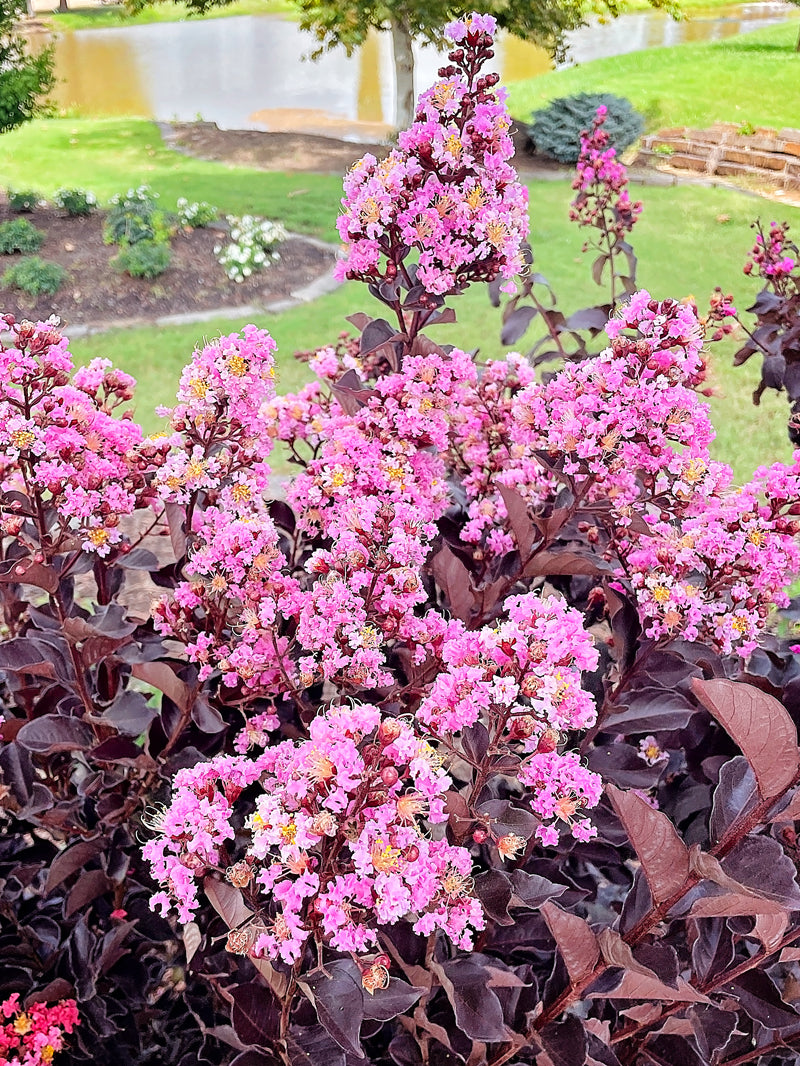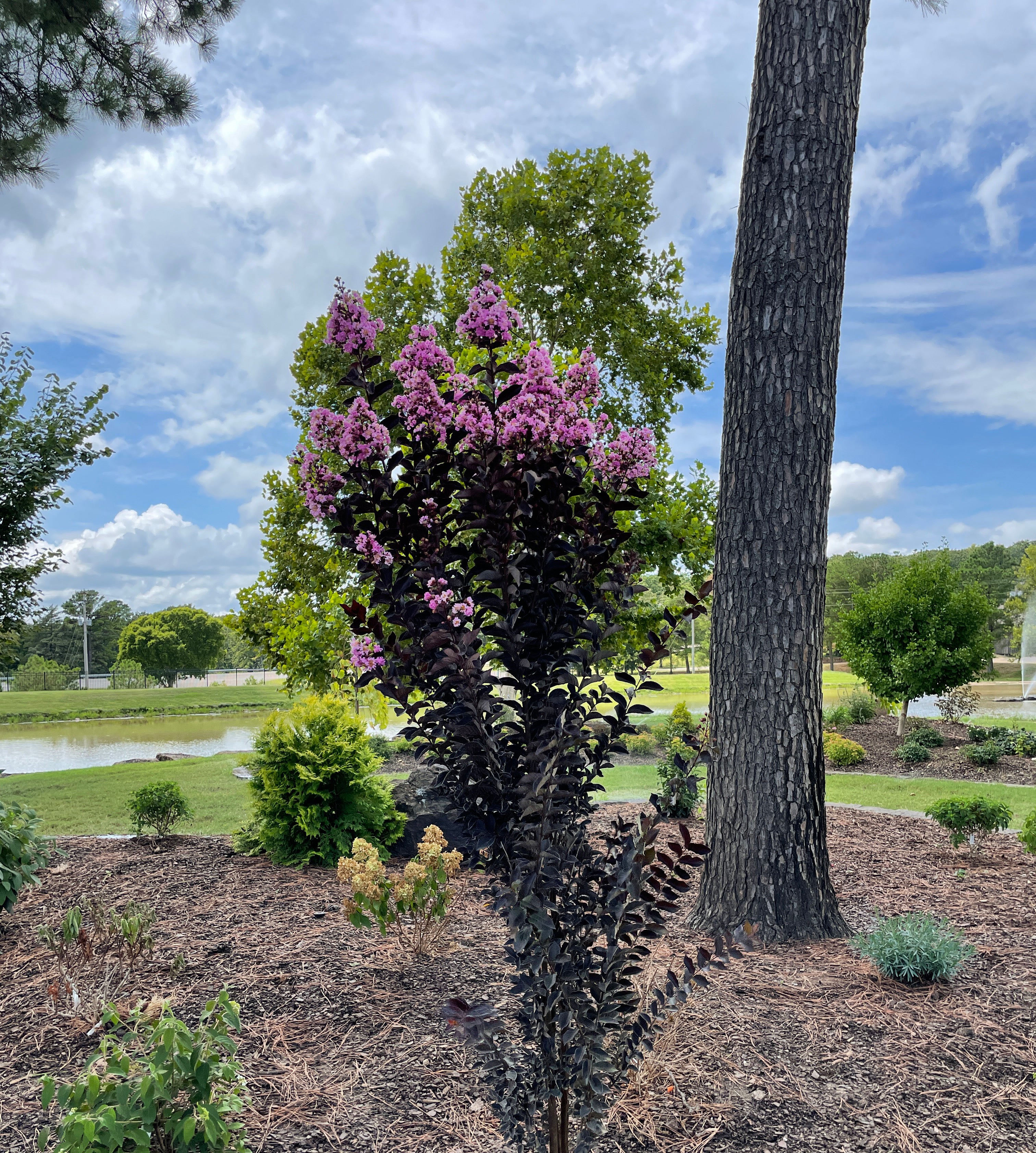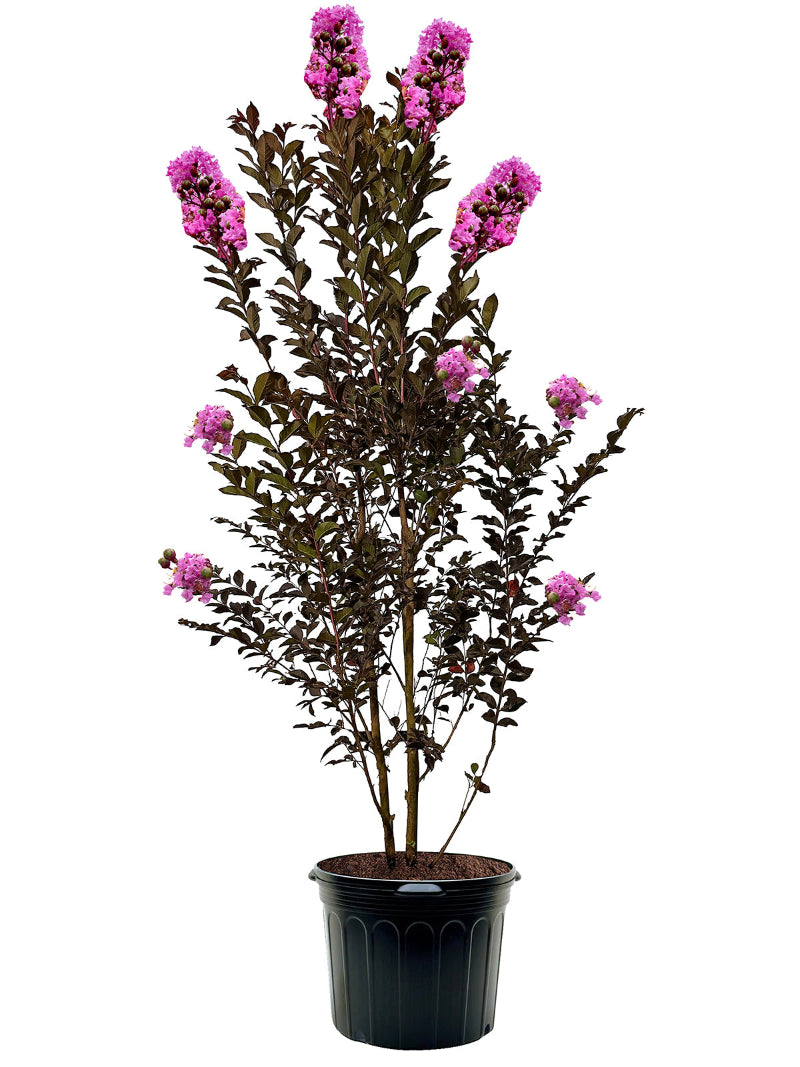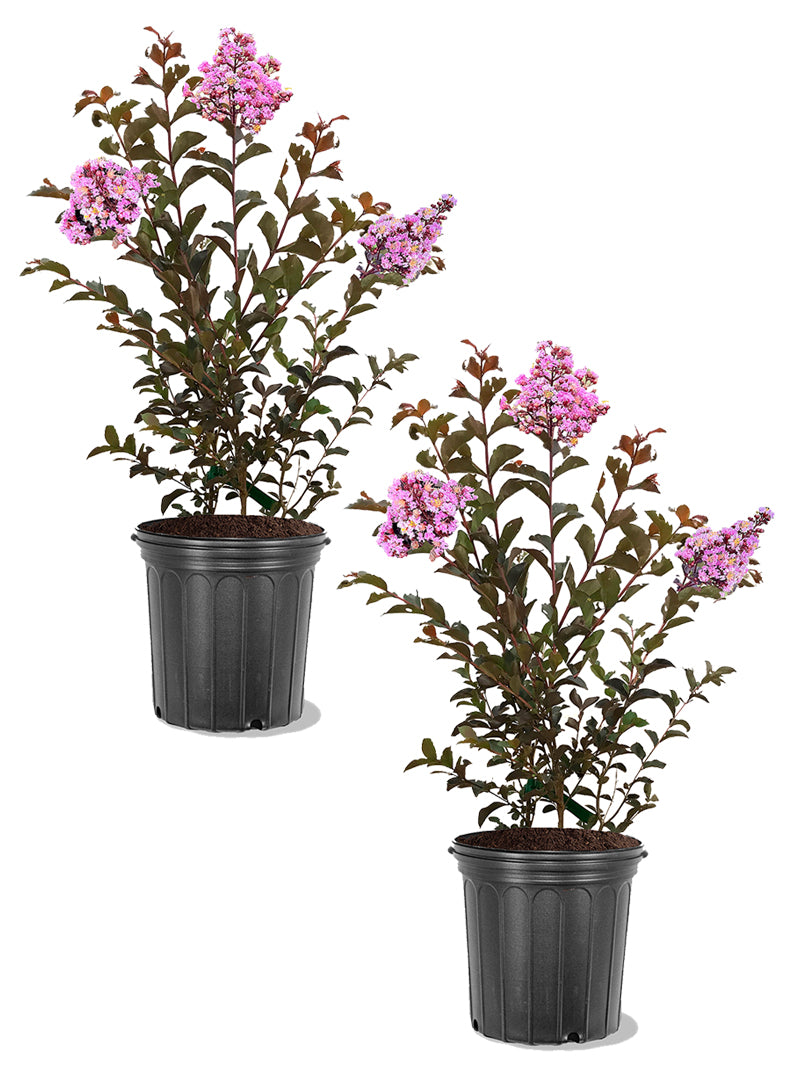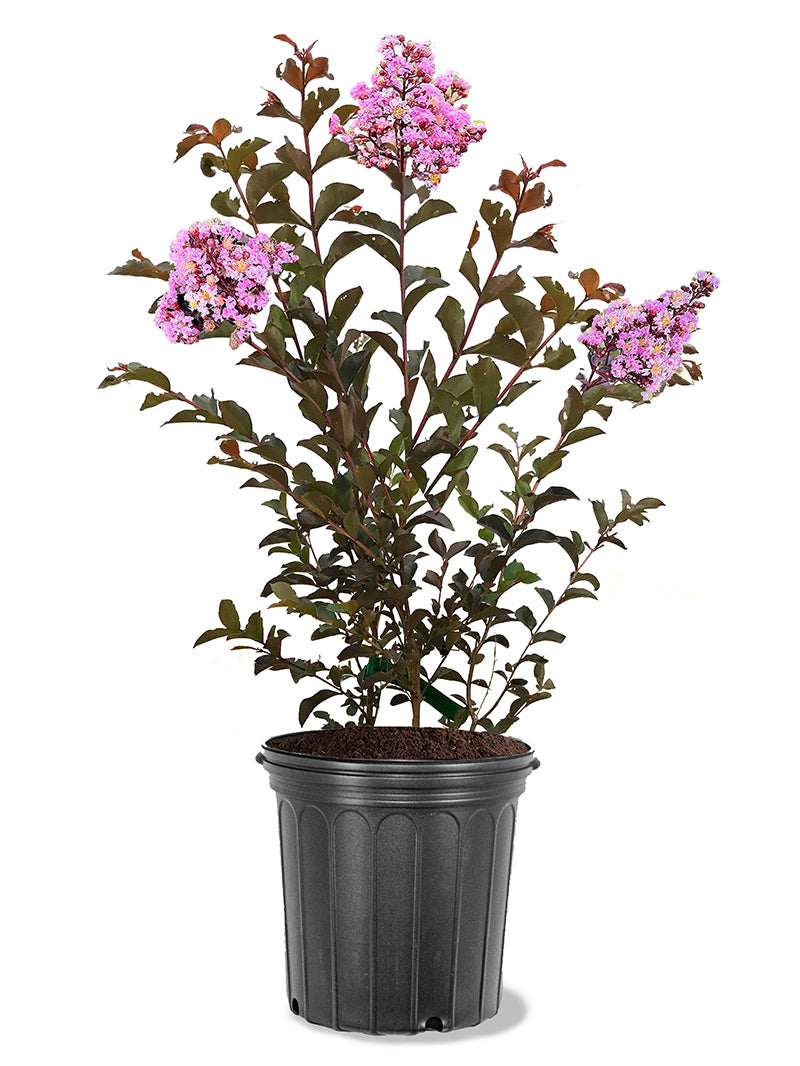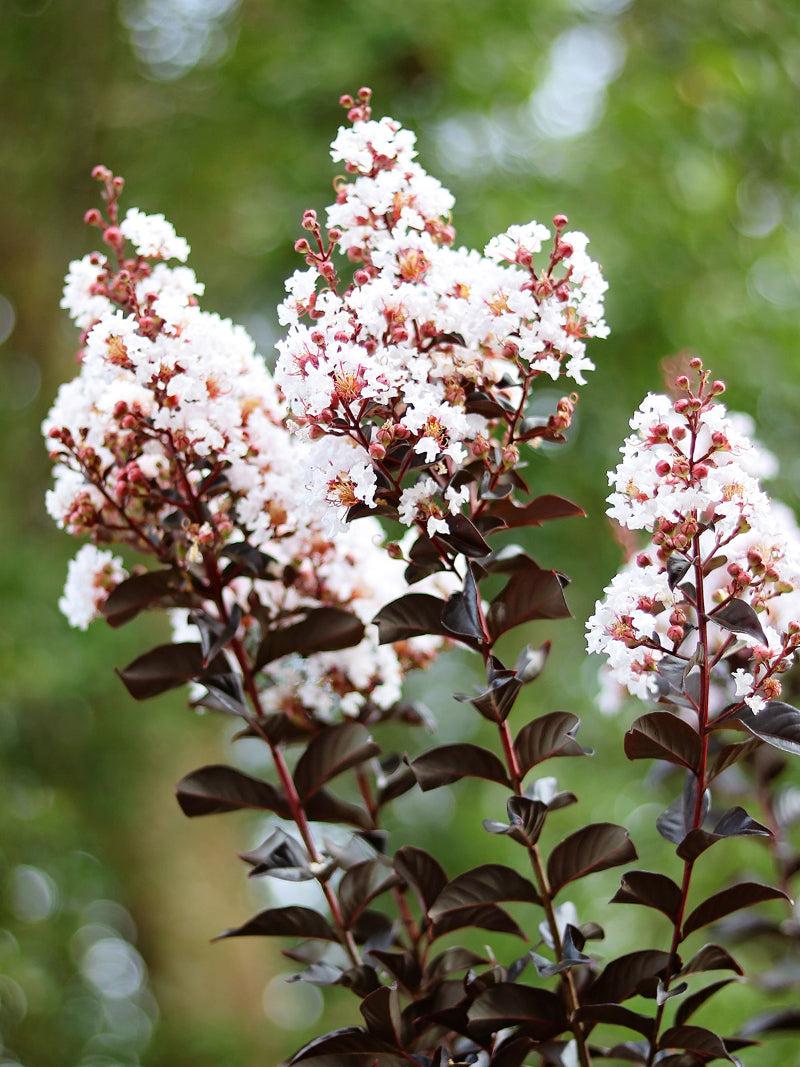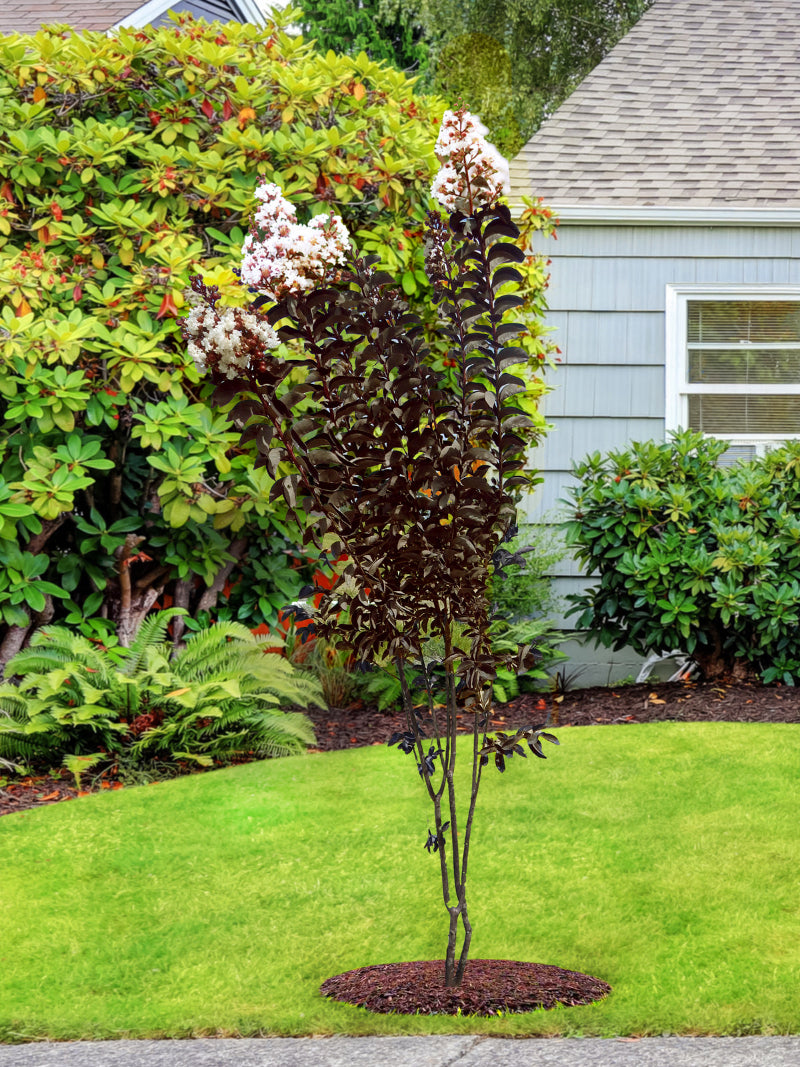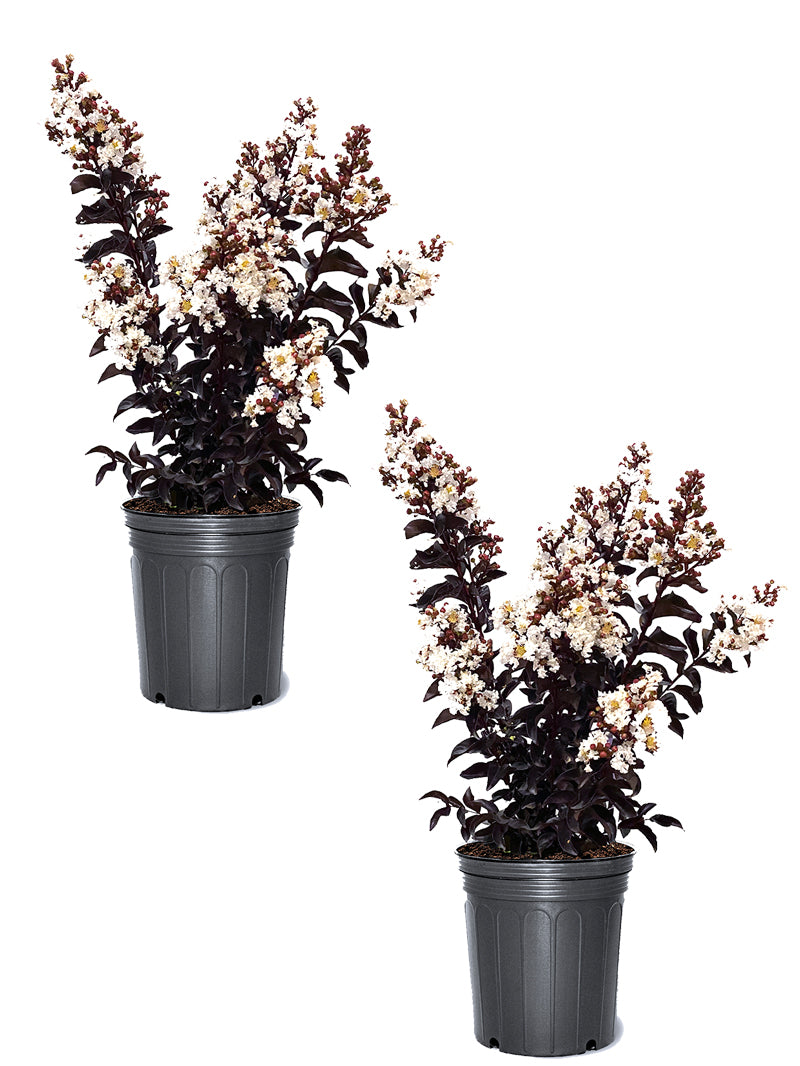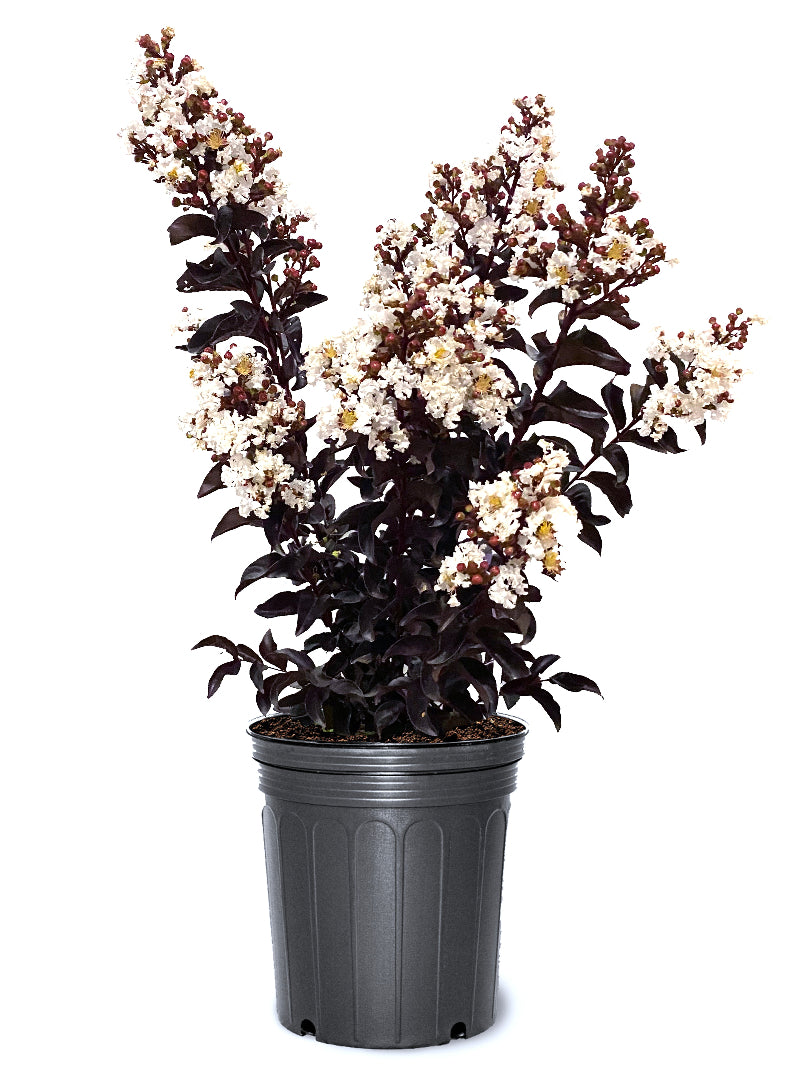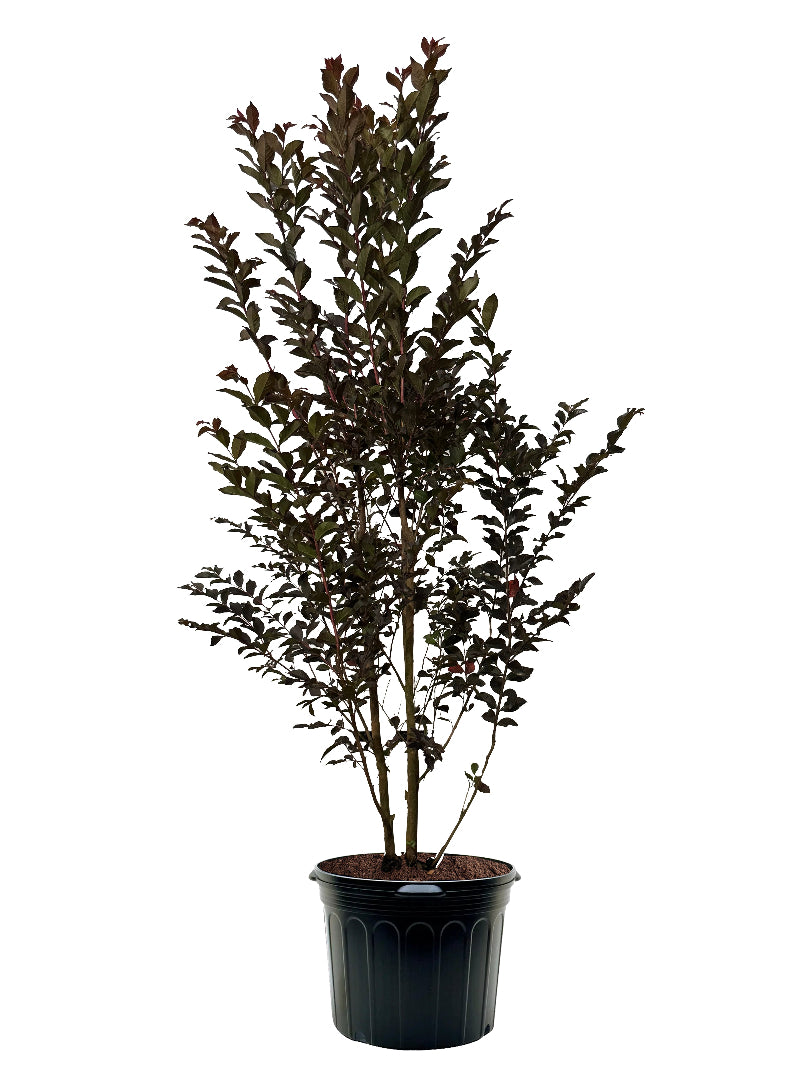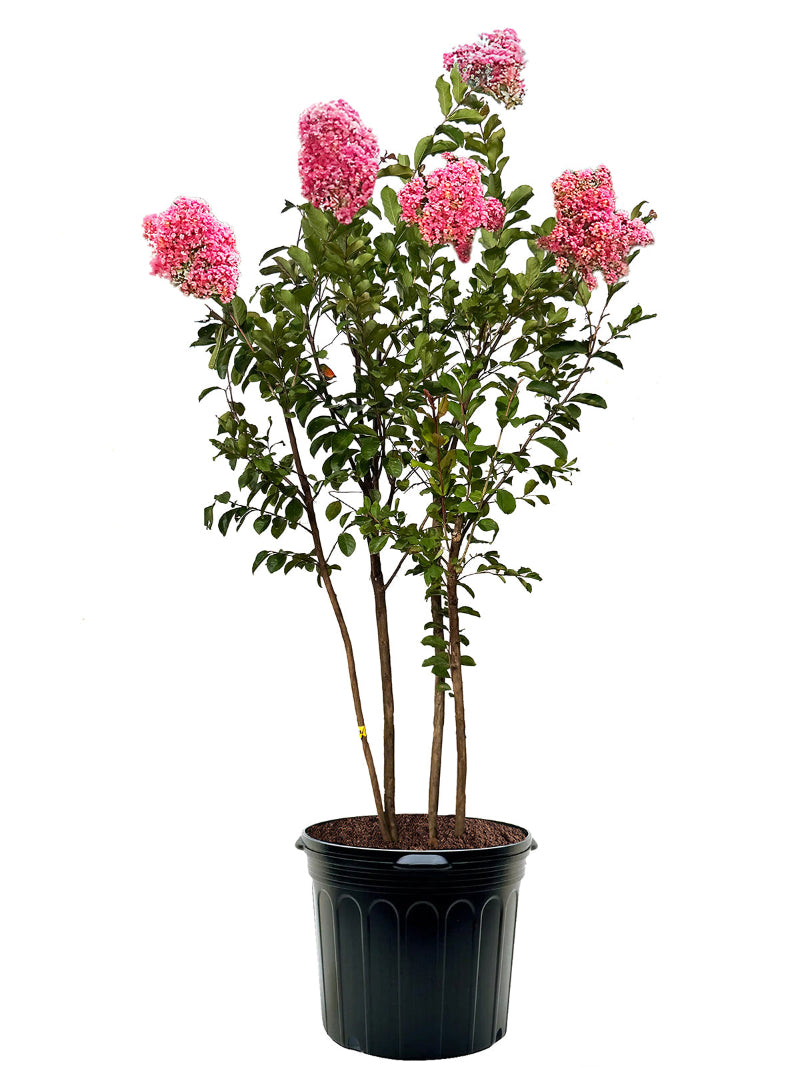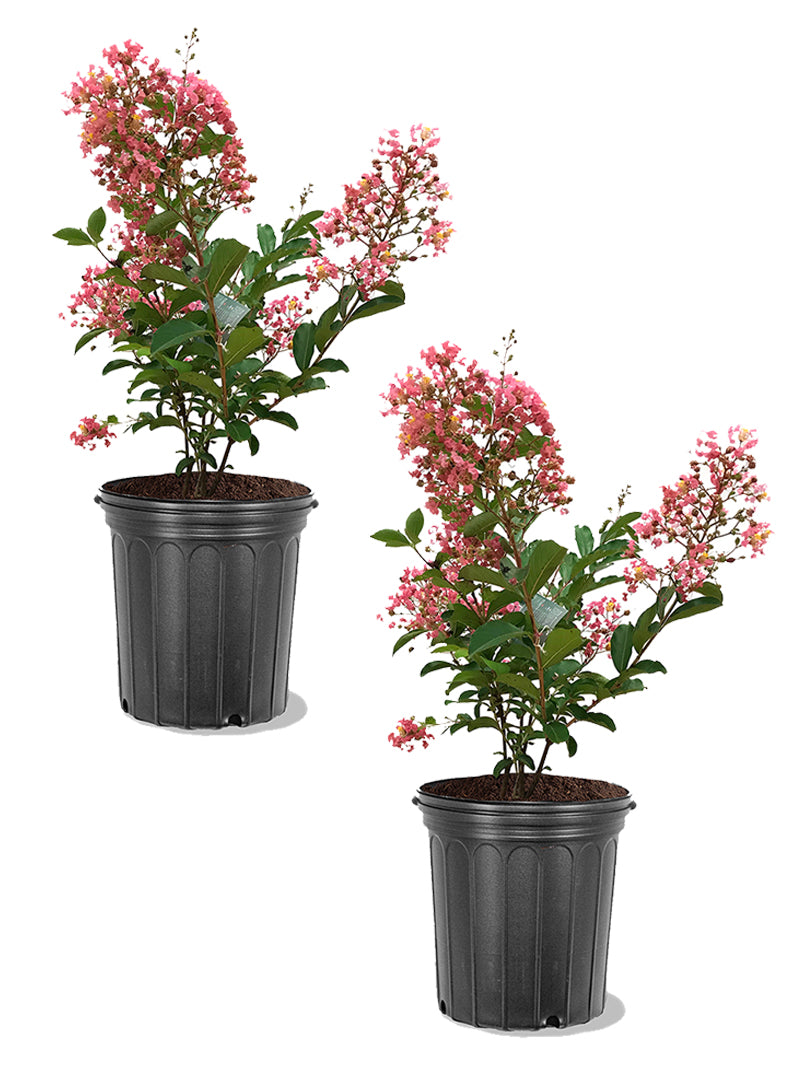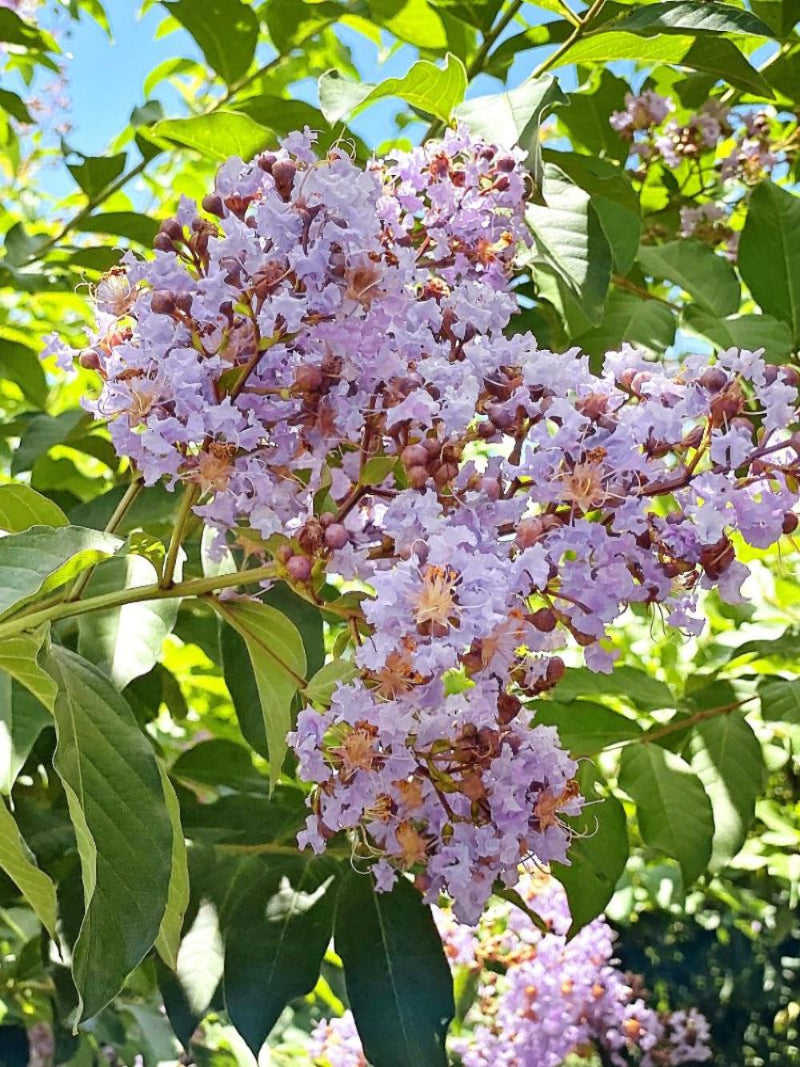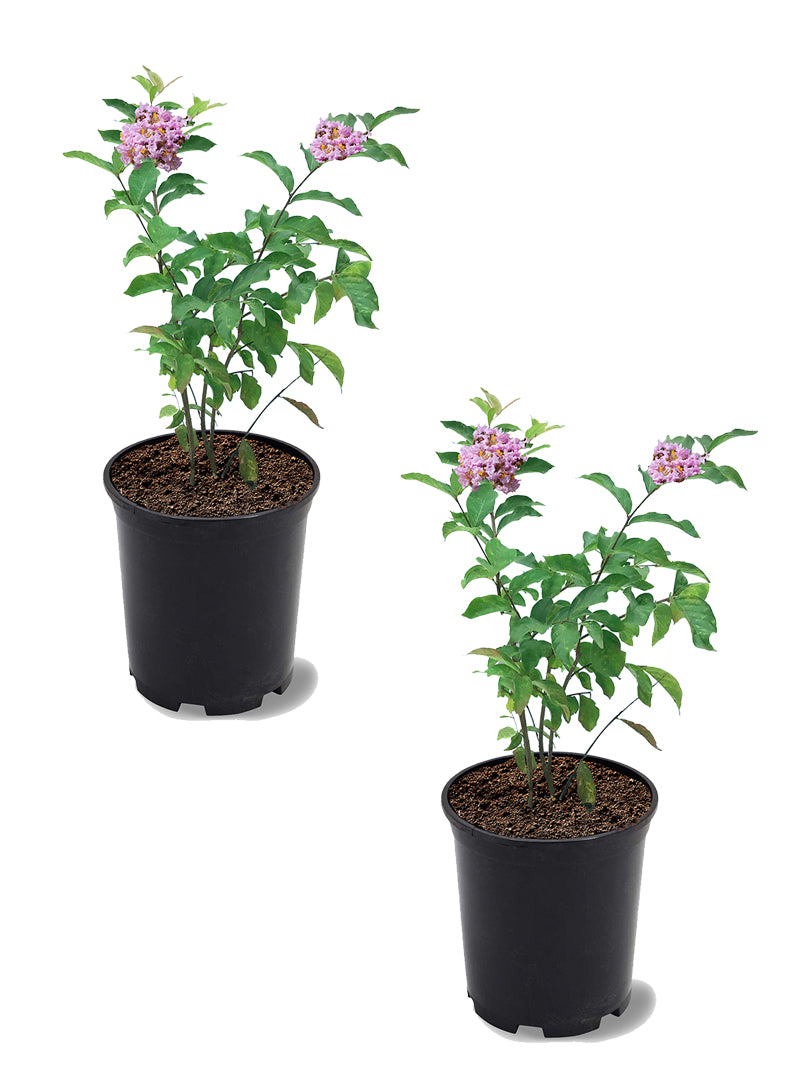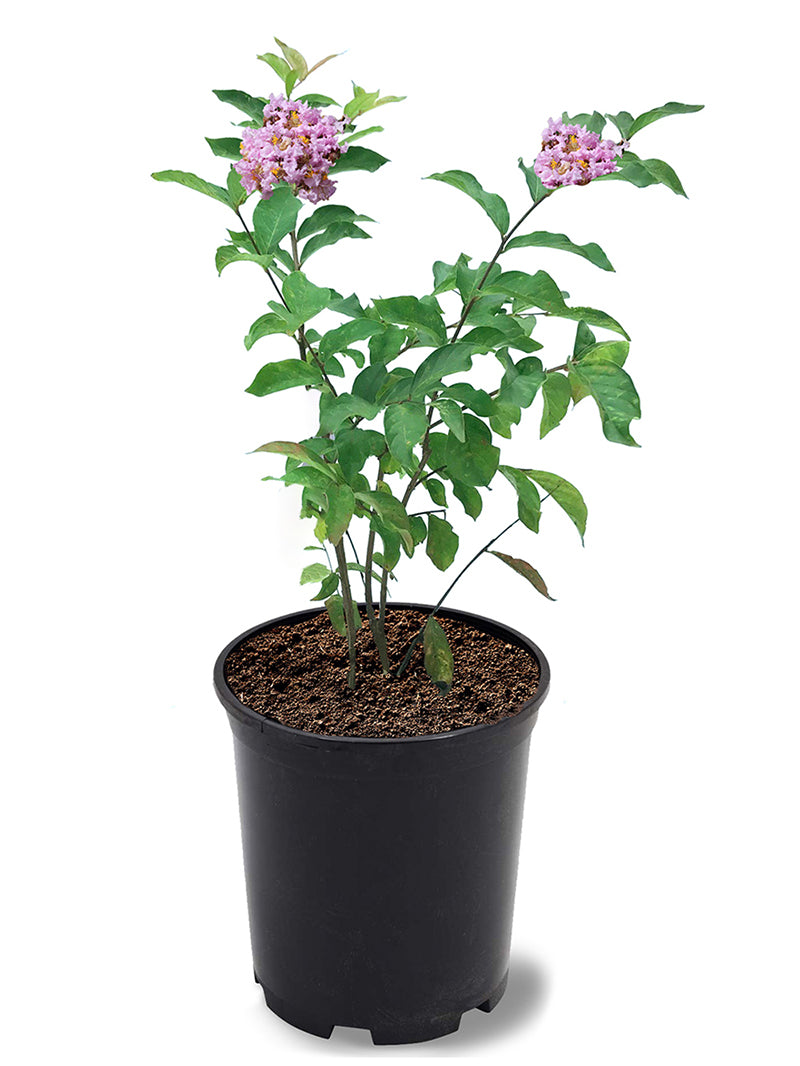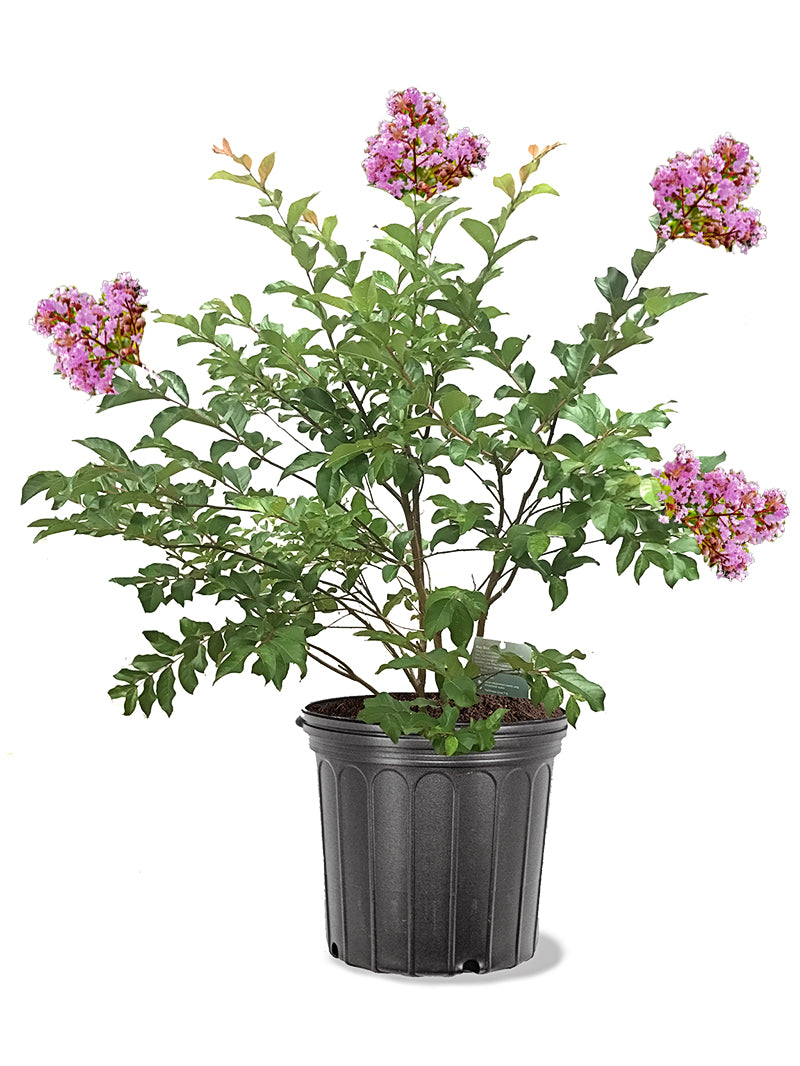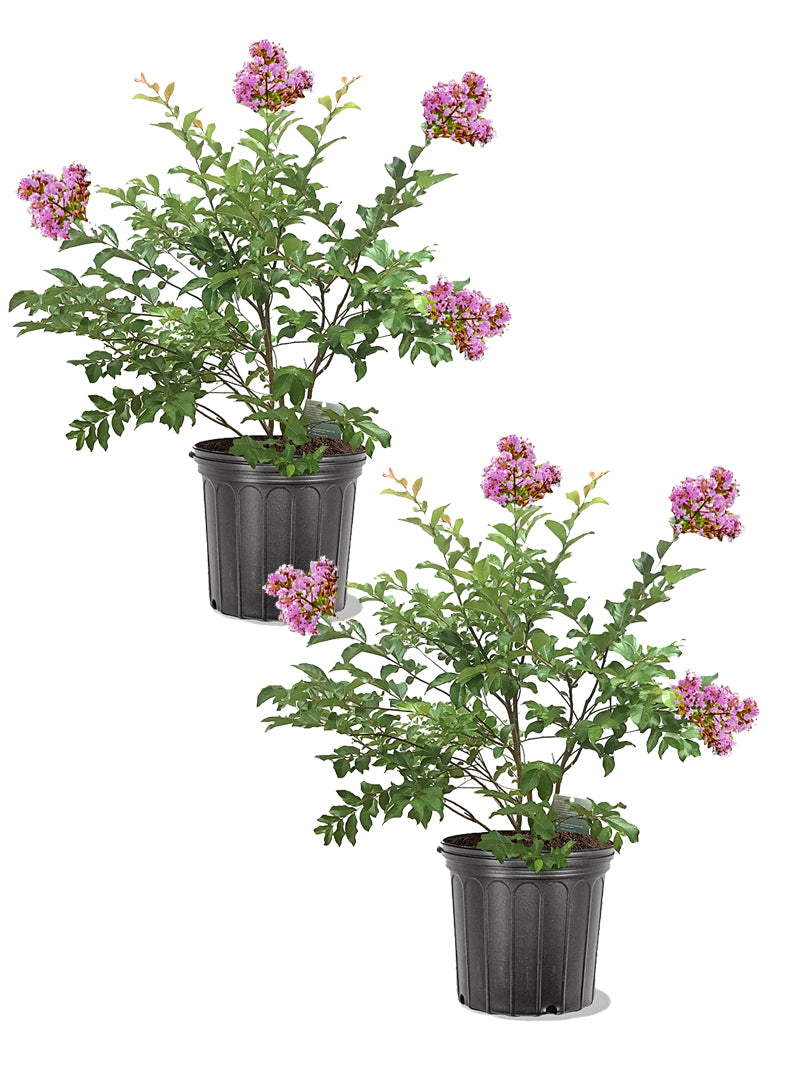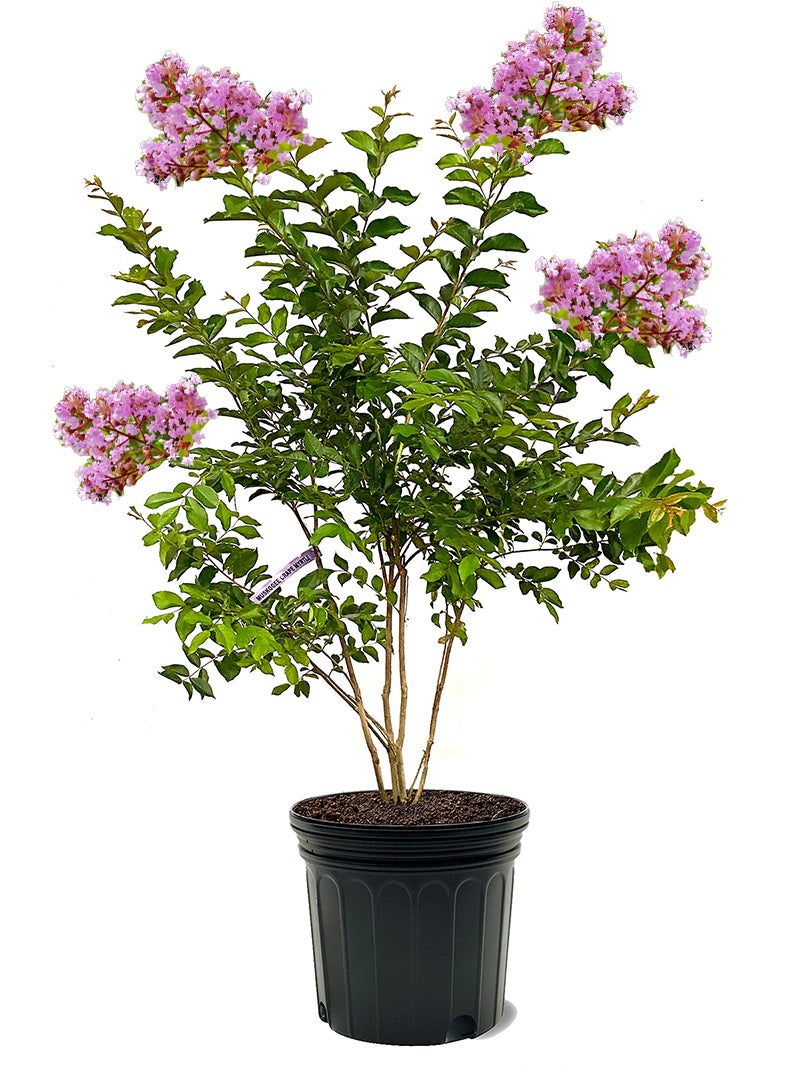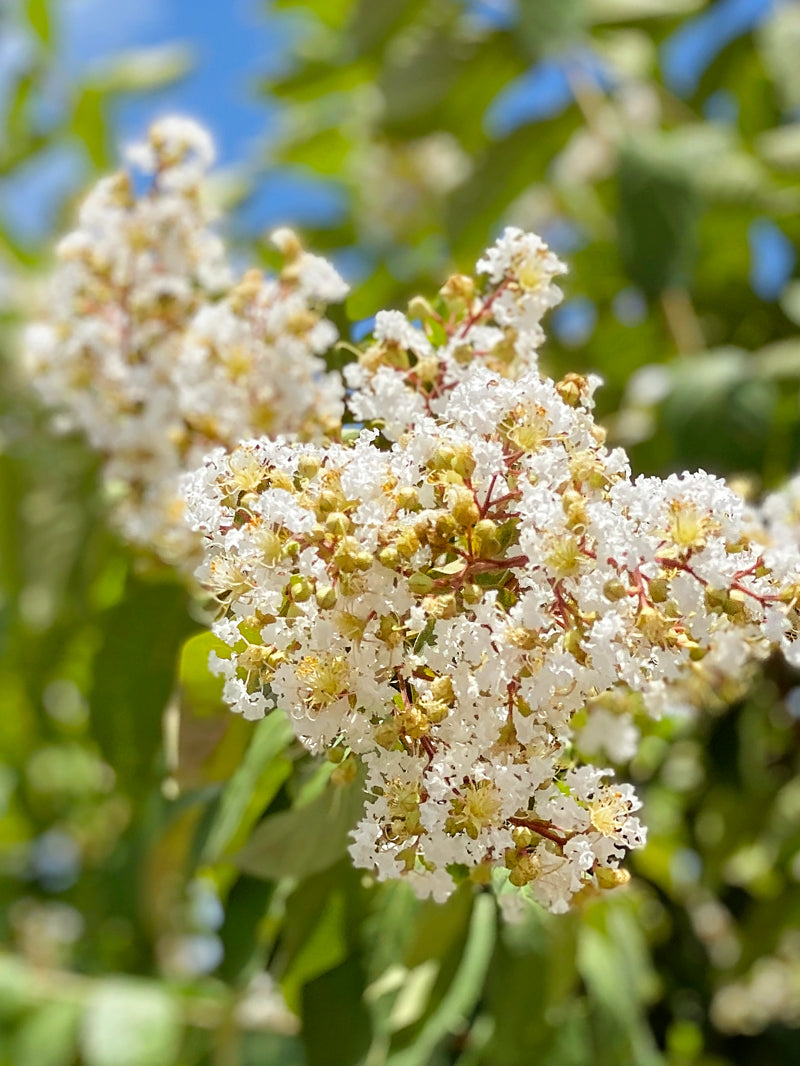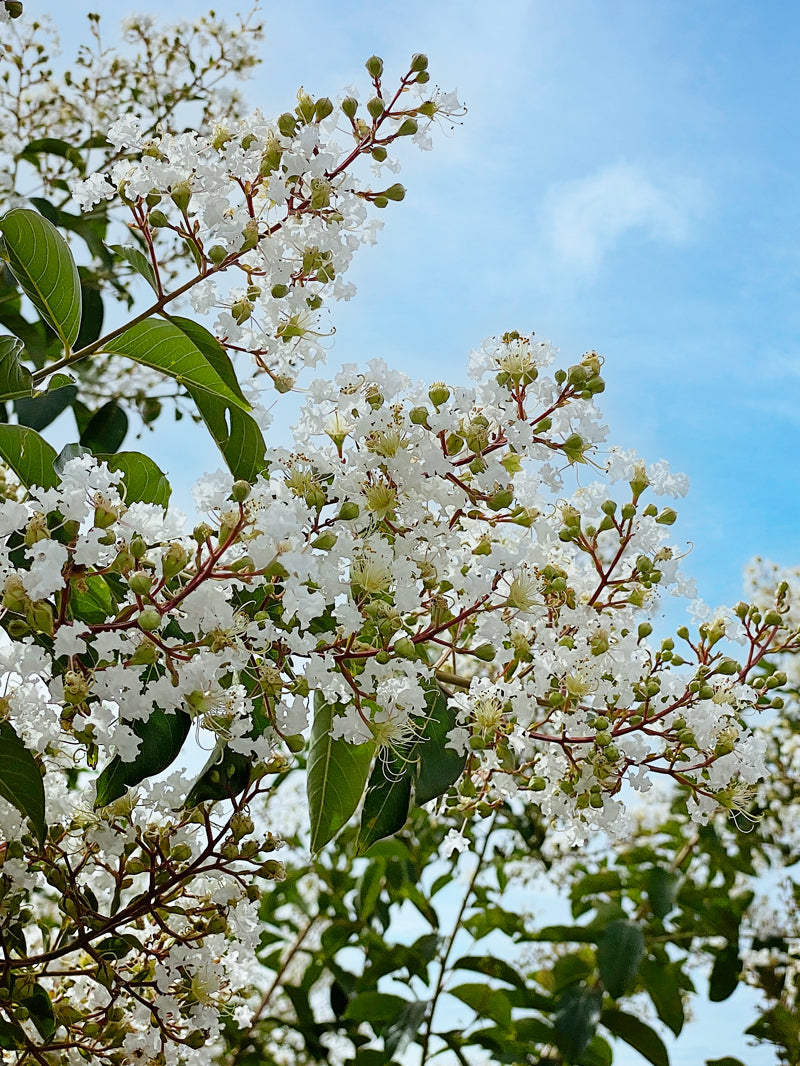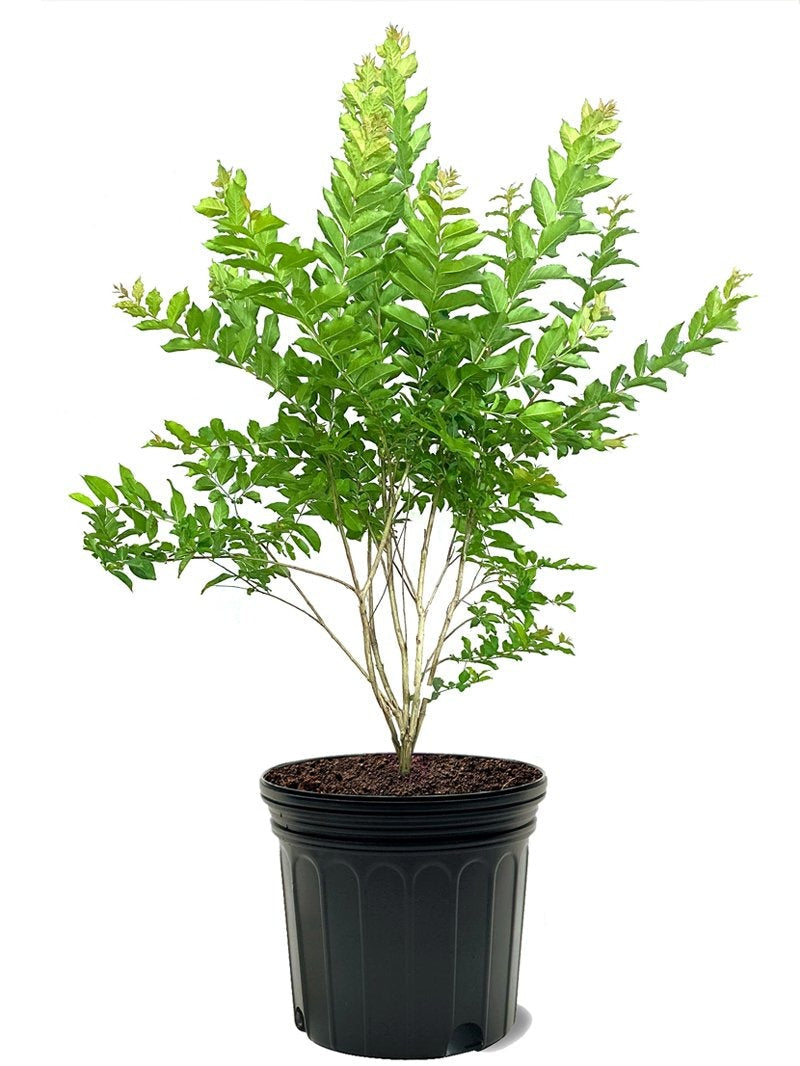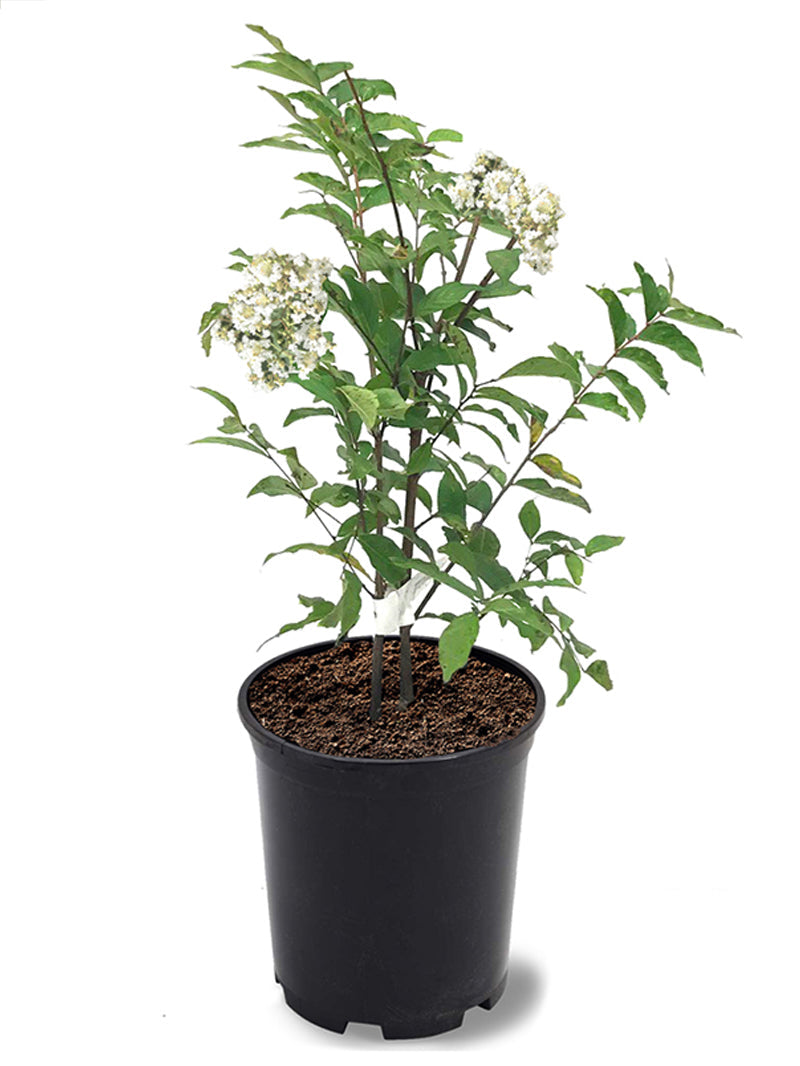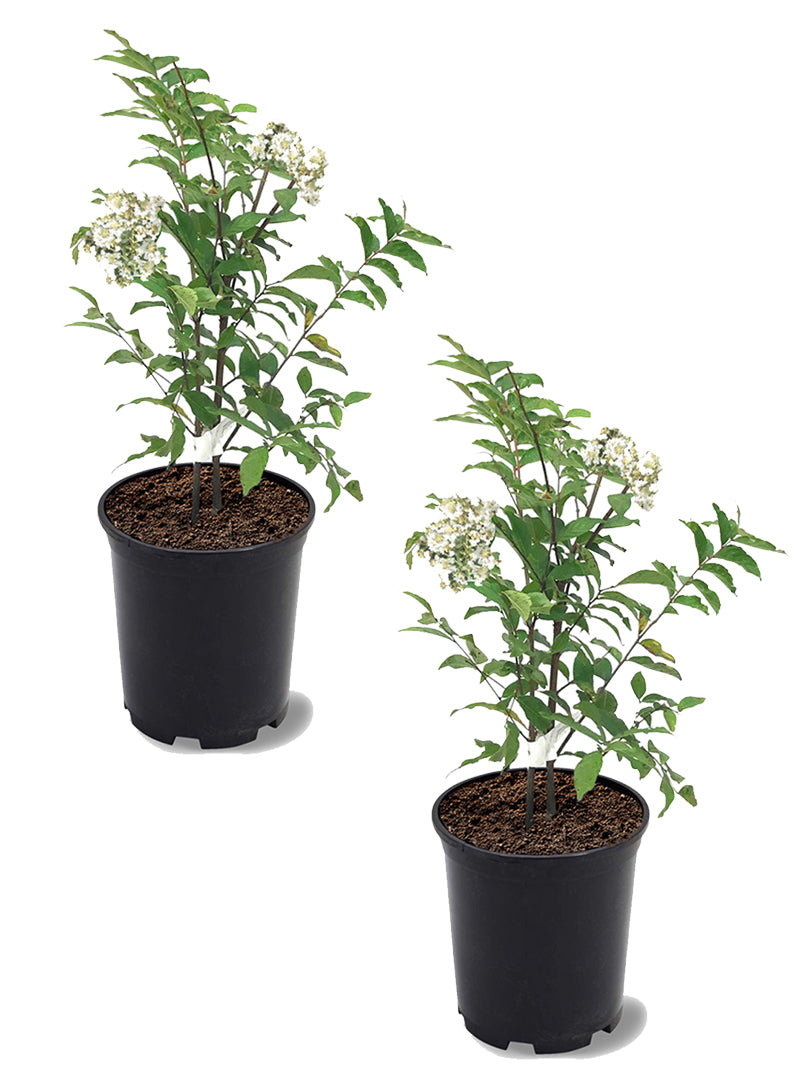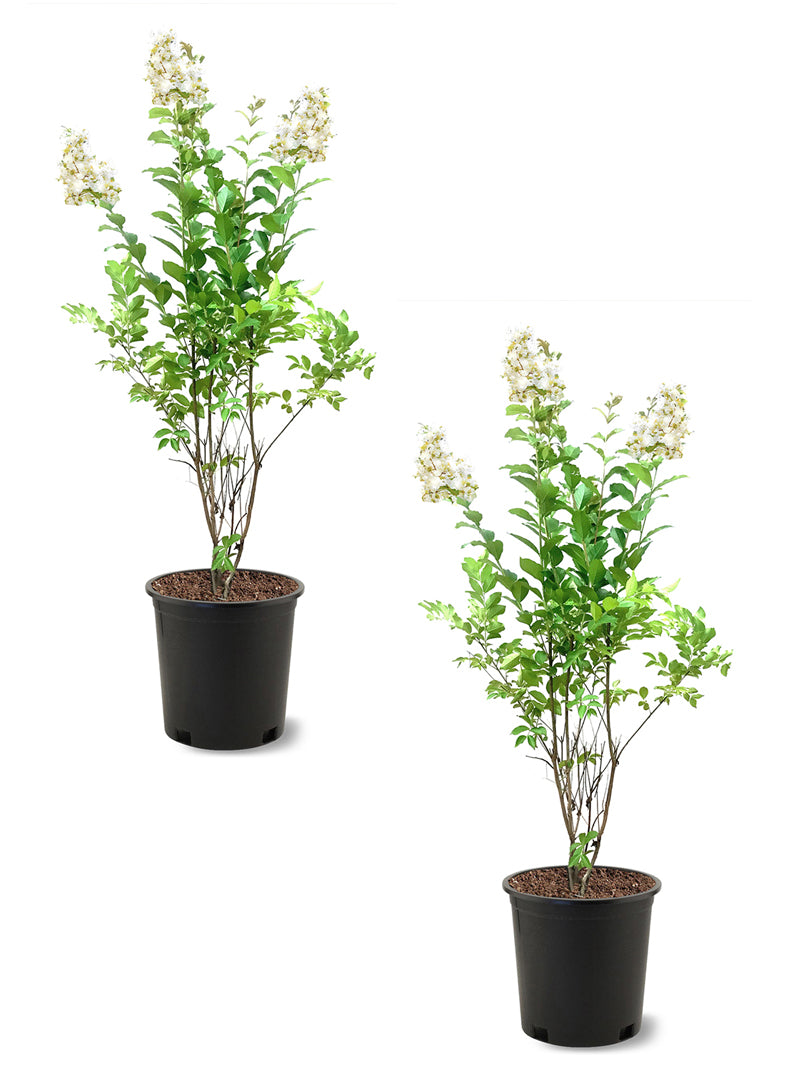
Planning your crape myrtle site
Start by selecting a spot that will allow plenty of space for the mature plant. The common crape myrtle can reach a height of 15–25' and a spread of 6–15' at maturity. With ideal planting conditions this shrub grows at a fast rate, with height increases of more than 24" per year. Full sun is the ideal condition for this plant, meaning it should get at least 6 hours of direct, unfiltered sunlight each day. Crape myrtles grow in a wide range of soils from slightly alkaline to acidic. It prefers moist, well-drained sites but has some drought tolerance.
Soil Prep for Your Crape Myrtle
It’s time to start digging! First, you will need to dig a hole three times the width of the size of the pot, and just as deep as the root ball. Set the soil you have dug out aside and mix it with compost. Remove the plant from its pot and gently loosen the root ball. Place the plant in the planting hole and replace the soil with the mix and gently pack down the dirt. To avoid planting too deep make sure the plant is at a position with the top most roots at the soil line. Your crape myrtle should be watered thoroughly for the roots to settle and to eliminate air pockets.
Crape myrtles grow in a wide range of soils from slightly alkaline to acidic and can tolerate sandy or clay soils. It prefers moist, well-drained sites but has some drought tolerance. The best soil for crape myrtle ranges from 5.0 to 6.5 on the pH scale. Most average garden soils fall between a pH range of 6.0 to 7.0.
A good way to find out the acidity of your soil would be to take a sample to the Cooperative Extension agent near you, for testing. You can also buy an at-home kit at most garden centers. Fertilizer should only be applied at correct times of the year. DO NOT PUT FERTILIZER IN PLANTING HOLE!
To protect your tree, please provide a 4 foot diameter weed and grass-free area. This will provide a water basin and minimize anything from taking water and nutrients from the tree. During spring and summer, 4-6 inches of mulch should be placed a few inches away from the trunk to provide good air circulation. The best type of mulch for your crape myrtle is acid mulch, pine bark or oak leaves. Do not mulch with mushroom compost.
Fertilizer for Crape Myrtles
A complete general-purpose garden fertilizer — such as 8-8-8, 10-10-10, 12-4-8 or 16-4-8 — is ideal for crape myrtle. Avoid over-fertilization because it causes excess foliage growth and reduced flowering. It’s better to use too little than too much. The best time to fertilize is just before a rain. Otherwise, water in the fertilizer after application with irrigation. It is not necessary to remove mulch when fertilizing.
Be sure to evenly spread fertilizer under the entire canopy of your tree, avoiding a 5 inch area closest to the trunk. After fertilizing, be sure to water your tree. Depending on the age of your plant, application of the fertilizer should be adjusted.
WHEN TO FERTILIZE CRAPE MYRTLES:
For newly planted small plants (#1 pot/#3 pot size), apply 1 teaspoon of fertilizer monthly from March to August along the perimeter of the planting hole.
For established plants, simply broadcast the granular fertilizer in spring before new growth begins.
Apply 8-8-8 or 10-10-10 at a rate of 1 lb. per 100 sq. ft. or 12-4-8 or 16-4-8 at a rate of ½ lb. per 100 sq. ft. The square footage in the root area is determined by the branch spread of the crape myrtle.
|
8-8-8 or 10-10-10 |
1 lb. per 100 sq. ft |
|
12-4-8 or 16-4-8 |
½ lb. per 100 sq. ft |
Water For Crape Myrtle
During the first year, the tree is considered newly established, meaning it is very critical for your plant to be watered. On light/sandy soil water 2x a week, but on clay soil 1x a week will do. When watering your tree be sure to soak the root system entirely. Whether you have a sophisticated automatic irrigation system, or are just using a watering can or bucket, it is better to water periodically and allow the soil to dry out a bit between waterings. Fruit trees do not expect to be growing in perpetually wet soil. Over-watering can be just as harmful as lack of watering. Always take rain water into account before deciding to water your tree by hand/irrigation.
Once the tree is established, it should receive at least one inch of water each week. After the first year you don't need to be quite as vigilant as the tree will have established its root system. As a rule of thumb the period when fruit trees need most water is just before, during, and just after the blossom period (about 6 weeks in total) and in the period leading up to the harvest. Water regularly, especially during dry spells. Lack of rain/water can cause fruit to prematurely drop if not well irrigated during the dry spell. Keep at least 4 feet around the shrub clear of grass and weeds, for less competition for water.
Once your tree reaches maturity, it will be naturally drought-resistant.
Pruning Your Crape Myrtle
Crape myrtle flowers on new growth of the season, so if you choose to prune, do so in the dormant season, i.e. later winter to early spring before growth resumes. Avoid pruning in early fall before the first frost, because pruning forces new growth and keeps the plant from going dormant. Severe freezes can kill the plant if it is not fully dormant.
It is a common misconception that crape myrtles require pruning in order to flower. This is not only false but has also resulted in virtually millions of plants being pruned very aggressively, a practice commonly referred to as "crape murder." The most natural and beautiful crape myrtle trees result from limited or no pruning. In addition, aggressive pruning leads to increased suckering (shoots arising from below-ground roots) which is not only undesirable but it could result in powdery mildew spreading from the suckers to the canopy of the tree. Aphids are also attracted to the succulent growth which results from aggressive pruning.
It is far better to plant dwarf, or semi-dwarf varieties which grow to desired mature heights than to continue fighting with a more vigorous, larger cultivars planted in a too-small space.
If you choose to prune however, follow the simple steps: First, remove suckers from the base of the plant. Second, as the tree grows, remove lower branches form the bottom third of the tree to expose the trunk character. Last, remove crowded or crossing branches from the canopy.
The seedheads are an attractive feature and should be left on the tree. As the new growth pushed in the spring, the seedheads fall off. Some folks find that objectionable; if desired the seedheads can be removed by heading back to above where a leaf joins the stem, or if no leaves are present, just above a lateral bud. On some cultivars, pruning to remove spent flower blossoms after they fade will stimulate new growth and another blossom flush in late summer. A second bloom is sometimes difficult to force on cultivars that bloom after mid-July.
Crape myrtles in tree form make wonderful accent plants or specimen trees. Many cultivars develop attractive trunks with exfoliating bark that add interest to the winter garden. To develop a tree shape, select three to five radially-spaced branches slightly leaning to the outside, these will become the main trunks. spaced shoots growing from ground level as the main trunks. Then remove side branches from these shoots about halfway up their height. As the plant grows taller, more lower branches can be removed each year so the canopy begins 3 to 4 feet above ground level. You may also need to remove suckers (new young succulent spouts that grow from the base) periodically in order to maintain the desired tree shape. Some landscapers apply a synthetic plant growth regulator, called NAA (naphthalene acetic acid), to suckers after pruning to prevent them from re-sprouting.
BLOG: MORE PRUNING GUIDES
3 Different Ways to Prune Your Crape Myrtle
Details on how to prune your crape myrtle to the exact look you want! Prune your crape myrtle in the form of Standard, Multiple Stem, or Natural.
Pruning Crape Myrtles— Don't Cut Back!
Here in the Southern States, late January and early February is the time of year where you may notice your neighbors starting to prune crape myrtles and were wondering if you should prune back yours. We're almost certain you've seen others cutting back the crape myrtles back to ugly stumps, also known to some as "crape murder".
Crape Myrtle Insect & Disease Control
Several diseases occur on crape myrtle including powdery mildew, Cercospora leaf spot, root rot and sooty mold. Powdery mildew is the most widespread and serious disease. Powdery mildew typically develops in late spring and fall and is associated with warm day and cool night temperatures and high humidity. Leaves, young shoots and flowers are heavily coated with a powdery, white mold that can distort new growth. Infected flower buds may not open, and severely infected leaves and buds often drop early.
The other most damaging disease is a leaf spot caused by the fungus Cercospora lythracearum. Spots develop in mid-summer through fall during wet, humid weather. Large, dark brown spots develop on lower leaves and progress upward through the plant. Infected leaves turn yellow around the spots and drop prematurely. Sometimes even one spot will cause a leaf to drop on susceptible cultivars and can cause significant defoliation prior to frost.
Powdery mildew and Cercospora leaf spot can be controlled by applying fungicides when the diseases are first noticed. The best approach to prevent diseases is to plant disease resistant crape myrtle cultivars. A number of new crape myrtle cultivars from the U.S. National Arboretum and other nurserymen are resistant to powdery mildew and Cercospora leaf spot. They are ideal for gardeners wanting low-maintenance landscapes.
Sooty mold is an unsightly superficial, dark brown or black coating on leaves and stems that can be removed by rubbing. It is the result of a fungus growing on honeydew excretions made by insects such as aphids, which are the most serious insect pest on crape myrtle. Sooty mold usually causes little direct damage, but it can cut vigor by reducing photosynthesis in the leaves. Using crape myrtle aphid-resistant cultivars and insecticide sprays can reduce sooty mold.
Root rots can be prevented by growing plants in well-drained soil.
Blog: Crape Myrtle Care Articles
3 Tips To Grow the Perfect Crape Myrtle Tree in Your Yard
A perfect crape myrtle tree is a true beauty in anyone’s yard. Here are a few tips to make your crape myrtle tree healthy and bloom spectacularly.
The Colorful Black Diamond® Crape Myrtle
If you are hoping to add some color to your yard, the Black Diamond® Crape Myrtle varieties are an excellent choice. These stunning trees feature vivid blooms and intense dark leaves that are almost black in hue.
Shop our collection of crape myrtles and have them shipped right to your door!

